In partnership with SSA Education Abroad
- Watch the Alandis Travel introduction
- Reach out to us at [email protected]


Cuban Tour Programs
Cuban revolution tour: a journey through history.
- Cuba , Food & Wine , Hands-on , Historically Relevant , Monuments , People, Culture & Traditions

Up to 4 miles / day
Tour overview.
Program activities, schedules and personnel may change due to local circumstances.
In such an event, we will alert you as quickly as possible.

Overnight: Havana
The tour coordinator will greet everyone, and we will review the program schedule, emergency procedures and answer questions. After orientation we will set out with our tour coordinator to take a walk and explore the area around the hotel. At a restaurant, we will enjoy a welcome dinner with a delicious set menu.
Breakfast at the hotel. We will depart from the hotel by private bus towards Old Havana to meet a local expert who will lead a walking architecture tour of the area. We will continue visiting the Museum of The Revolution where we will learn about the history of Cuba from the early 1960s to the present time. In the afternoon a local expert will join us for a presentation on Cuban History through one of the best ways to get to know Cuban idiosyncrasy: music and the different Cuban rhythms.
Breakfast at the hotel. We will take a private bus to Playa Larga. Check-in at Casas Particulares , private guest houses with all amenities which contribute to the local economy.
Afterwards we’ll go for a hike around Zapata swamp where the Bay of Pigs Invasion took place. A Biosphere Reserve by UNESCO , It’s considered one of the world largest wetlands, being the habitat for the endangered Cuban crocodile, different types of amphibians, birds and different plants.
At dinner time, we will enjoy delicious home-made food at Casas Particulares .
Overnight: Havana
Breakfast at the hotel. We will depart to Santa Clara, the first town liberated from the dictator Fulgencio Batista and key city of the Revolution. The first stop will be at the Tren Blindado (Spanish for armored train). Che Guevara and his small band of guerrillas derailed and captured a government armored train (after several hours of fierce combat) that was followed by the conquest of the entire city of Santa Clara.
Afterwards, we will have a unique experience and ride on a horse-drawn carriage that will get us to the Che-Guevara Mausoleum where we will learn more about this important figure.
Return to Havana.
Breakfast at the hotel. We will visit a private business, an Auto Repair classic car shop, where we will have the opportunity to have an exchange with the owner, ask questions and get to know how the system works in relation to the government.
Afterwards, we will take a fun tour and ride on a classic American car around Havana arriving at the Revolution Square, the venue of the most important politics celebrations. In the same Square, we will visit the José Martí Memorial, the highest tower in Havana with fantastic views of the city.
After breakfast at the hotel, we will depart to the National Hotel where we will take a tour through this beautiful building which isn’t only an international hotel, but also a national monument with neoclassical, neocolonial and art deco architecture. A fascinating experience recalling celebrities like Winston Churchill, Frank Sinatra or Lucky Luciano.
To complete the experience, we will have free time at the hotel garden where you can enjoy a delicious and refreshing mojito.
At night, we will go to the San Carlos de la Cabaña , a colonial fort used to protect the town from pirate invasions in the past. You will be able to witness the cannon blast ceremony that takes place each night at 9 pm repeating the old tradition of the cannon blast which was used to give the sign of the city’s curfew, moment in which the doors of old Havana’s wall would close.
Breakfast at the hotel. We will spend the morning learning about the differences between the state-government owned markets and the private agricultural markets, where Cubans buy their vegetables and other food. We will choose the main ingredients for the cooking class we will have after the tour. We will learn how to make a delicious menu with true Cuban flavors.
Free afternoon to explore or just relax.
Breakfast at the hotel. We will spend the morning learning about one of the main financial sectors: Cuban tobacco. A local expert will guide us through the factory where each day, Cubans workers make the artisanal cigars which are distributed around the world.
Afterwards, we will have time to visit the old warehouse at the Havana port, San José market, a huge local market where you can see the work of thousands of artisans. Free afternoon to pack, explore or just relax.
Farewell dinner at a restaurant
Transfer to the airport at a designated time.
Tour Inclusions
- Bilingual Staff
- Expert Tour Coordinator during the entire program
- Expert Local Guides for the visits included
- Local Experts for each lecture
- Private ground transportation
- Entrance fees to of The Museum The Revolution, walking tour around old Havana, Revolution Square, José Martí Memorial, National Hotel guided tour, San Carlos de la Cabaña Fortress , Tobacco factory and San José Market in Havana. Tren Blindado (armored train) and Che Mausoleum in Sta. Clara
- Enriching Experiences: Hiking around Zapata Swamp, Agro-markets Tour, Classic Car tour and cooking class in Havana
- 8 breakfasts, 1 lunch, 3 dinners
- Accommodation in 4* hotel at city center and Casa Particular in Playa Larga
- 24/7 Emergency support
- Tips are included throughout the visits programmed

Tour Pricing
Price per person based on double occupancy. Single supplement $375.
For a minimum of 15 pax.
Additional Experiences
Customize your trip according to your interests by adding any of these once-in-a-lifetime experiences.

Day Trip to Varadero Beach
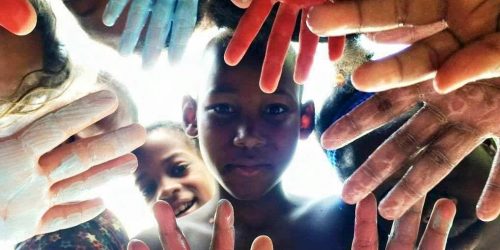
Exchange with Social and Community Project

Meeting with a CDR (Committees for the Defense of the Revolution)
A night at tropicana cabaret, visit a santero or babalawo, request more info.
Calle Harinas, 18. Sevilla, 41001. Spain
(US) +1 646 504 2897 (ES) +34 650 749 180
[email protected]

Connect with us
Seals of quality.

Alandis Travel
- About our company
- News, Guides & Travel Resources
- Experiences
- Tailor-made Programs
- COVID-19 Restrictions
- Press Package
Programs for you
- Universities
- High Schools
- Group Travel for Adults
- Guided Tours of Spain
- Guided Tours of Cuba
- Guided Tours of Puerto Rico
Tours by Theme
- Architecture
- Art & Literature
- Food & Wine
- Hands-on Experiences
- Hiking & Outdoors
- Historical Relevance
- Nature & Wildlife
- People, Culture & Traditions
- Social Projects
- UNESCO Heritage Sites
©2024 Alandis Travel | Wholesale Tour Operator & Study Abroad Company in Spain, Cuba & Puerto Rico | All Rights Reserved.
Receive your brochure
Where should we send you the brochure?
Free Cuban Revolution Tour Havana
- Understand how sometimes conviction and idealism can be more powerful than gunpowder.
- Learn about the life of leaders such as the Castro brothers and the iconic Che Guevara .
- See how the country works through the eyes of a local. Discover Cubans’ creativity to confront their everyday economy .
Tour Calendar
Latest reviews, guides leading this tour, see all tours in havana.
Free Tours in Your Language
Free Tour - Free Tour Havana › Free Cuban Revolution Tour Havana
Other Tours in Havana
Cuban Revolution Trail (2024) - IT-CURA02
Itinerary for cuban revolution trail, climate for cuban revolution trail, what to bring for cuban revolution trail, video for cuban revolution trail, google map for cuban revolution trail, average tour ratings for cuban revolution trail, accommodations for cuban revolution trail.

This trip can accommodate special dietary requests.
Cuban Revolution Trail
Visa requirement for cuban revolution trail.

- Introduction
- Rates & Dates

Guru Walk Free Tour - Historia de la Revolución Cubana
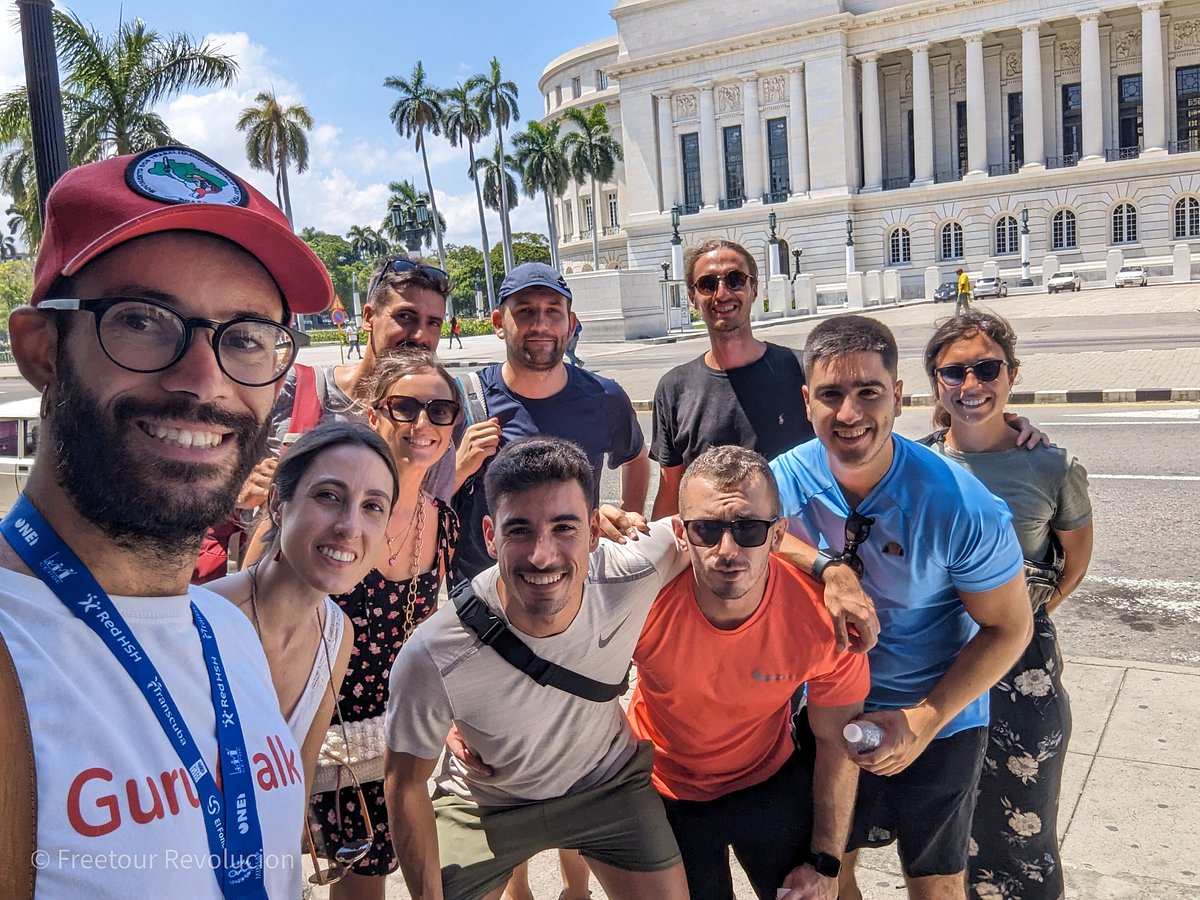
- See all photos

Most Recent: Reviews ordered by most recent publish date in descending order.
Detailed Reviews: Reviews ordered by recency and descriptiveness of user-identified themes such as wait time, length of visit, general tips, and location information.

Guru Walk Free Tour - Historia de la Revolución Cubana - All You Need to Know BEFORE You Go (2024)

Origins of the Revolution
Current Offers - Origins of the Revolution
Please send me more info and current offers for your Origins of the Revolution.
Guaranteed departures for 4 or more people! Please inquire today to begin the booking process.
Origins of the revolution - cuba walking tour to the sierra maestra and santiago de cuba.
In December 1956, Fidel and Raul Castro, along with Che Guevara, traveled by boat from Mexico to start an armed revolution against Batista’s army. Their landing went badly, and the survivors fled into the rugged Sierra Maestra. This steep and impressive mountain range towers over the southern coast of Cuba for some 80 miles and is home to mountain peasants who make a living with gardens, coffee, cocoa and determination. Our adventure explores the life of Fidel and the origins of the revolution as we visit the Castro family estate, hike the trails of the Sierra Maestra, and immerse ourselves in the vibrant city of Santiago de Cuba.
Older than Havana, Santiago was founded in 1514 by Diego Velazquez and was Cuba’s first capital. In 1898 Teddy Roosevelt gained fame here leading his Rough Riders to victory during the Spanish-American war. Castro’s revolution came to world attention when, on July 26, 1953, he and his band attacked the Moncada barracks. The city is a hotbed of exciting music, art and architecture and is considered by many as the most Caribbean part of Cuba. This is in part because some 30,000 French planters and merchants fled Haiti after the revolution there in 1791 and settled here, soon followed by black Haitians too. Slaves from Africa first landed here by the thousands, planting the roots of Cuba’s Afro-Cuban culture, replete with its music, myths and rituals. Set on a deep bay and flanked to the north by steep mountains, Santiago is a feast for the senses.
Images & Videos

Please book your own flights to Holguin, Cuba, currently served by American Airlines with daily flights. You can either arrive on Day 0 - the day before the tour start date, or on Day 1. If you arrive on Day 0 then you are responsible for your own airport transfer into the city. Taxis are readily available and cost about $25. We are happy to make your accommodation arrangements for you for the extra night. Since some guests may arrive on Day 1, if you arrive on Day 0, our office will inform you of the meeting time and place Day 1.
Once we have everyone together on Day 1, the tour will officially start with a walking tour of the city of Holguin.
Since all flights to Holguin originate in Miami, for many people it may work best to fly to Miami on Day 0, spend the night and continue to Holguin the next day. We are happy to offer guidance with scheduling your travel to and from Cuba, and our office staff is ready to answer any questions you may have.
Note: Travel in Cuba requires a flexible attitude. Our days are full, and as required by U.S. law, we have a full-time agenda of people-to-people activities. Cuba has it’s own beat and things don’t always run on time. The activities and visits listed are not guaranteed but we endeavor to do our best to provide the content intent of this Support for the Cuban People program. Visiting developing countries can be eye-opening and life-changing, and hopefully visiting Cuba is both. Accommodations may not be up to the standards you are used to. Sometimes the hot water or air conditioning doesn’t work. We ask all our guests to appreciate the authenticity of your cultural encounters as well as the people, food, culture, and adventures that are exceptional in their difference. Our local guide, along with your Cuba Unbound Tour Leader promise to do their best to make this a fascinating and educational experience.
Welcome to Cuba
Arrive Holguin on one of the mid-day flights. Meet your local guide and transfer into the city for lunch and your introduction to Cuba! We have an afternoon walking tour focused on the history of Holguin, Cuba’s fourth-largest city, known as the “City of Parks” and filled with charming colonial architecture.
Later in the afternoon we check into our accommodations, then enjoy a meal at one of the city’s fine paladars (private restaurants)
ACCOMMODATION : Casa Particular
MEALS INCLUDED : Lunch, Dinner
Driving South, into the Sierra Maestra
Note: Those participating in our Kayak East Tour join up with this tour mid-morning
After breakfast, we depart from Holguin and drive southeast, stopping near the town of Cueto to meet up with anyone from our Kayak East trip that is joining us. We head south on a road of tranquil agricultural scenery and through several towns and scenes of everyday life in Cuba. First up is a stop to visit Biran, the estate of the Castro family and birthplace of both Fidel and Raul. Their father, Angel, was quite a successful businessman and developed a small hamlet on the main railroad line that had a hotel, restaurant, cock-fighting ring and the family home. On our fascinating Support for the Cuban People tour with a local specialist, we learn more about the history of the Castro family and Fidel’s formative years.
We continue south and west to the town of Contramaestre and then delve deep into the mountains where the Revolution had its beginnings and the Third Front began. This is an area rich in both history and nature.Our destination is El Salton, a tropical resort set amid a thick jungle of green. Here we meet our local guide Carlos for a Support for the Cuban People walk among houses of local farmers. Many grow and process coffee and cocoa in these mountains, and we learn about their daily life on an easy two-mile walk. This is also a birder’s paradise, where the Cuban tody, hook-billed kites, Cuban Amazon parrots, and woodpeckers call to one ano
ther in the dense trees.
We enjoy a peaceful dinner and evening under the stars at our Casa.
ACCOMMODATION : Casa Particulares
MEALS INCLUDED : Breakfast, Lunch, Dinner
Explore El Salton, waterfalls and swim
Today starts on our feet. With our local guide, who is well-versed in the endemic species that live here in the mountains, and knows all the locals, we hike along mountain paths. It’s a day mixed with learning about the forest ecosystem and visiting with local Cuban farmers and villagers. Royal palms, oaks and ferns dot the landscape, and orchids dangle from the trees. Birders will also delight in this tropical forest, replete with hummingbirds, thrushes, falcons and many of the endemic species of Cuba.
A highlight of the day will be a visit to a local school high in the mountains. Another will be lunch with a local family in a simple home surrounded by coffee, grazing areas and fruit trees. People here live simply and close to the land. It’s a fascinating glimpse into their lives where traditional open fire kitchens, gardens and farm animals are at the core.
Our afternoon takes us to a lovely swimming hole for a dip in refreshing waters. Then we return to our Casa for another evening of music, dinner and star-gazing.
From Mountains to Sea - Santiago de Cuba
Today we have an exciting and remote drive through the Sierra Maestra, over a pass and down to the coast with four-wheel drive jeeps. The drive gets us deep into the heart of the Sierra Maestra with fantastic views of the Caribbean as we descend from the mountain pass to the sea. We make plenty of stops for photography and have lunch along the way.
Once we arrive at the coast we head east towards Santiago, perhaps stopping for a dip in the ocean on the way. We settle into our accommodations, then head out for a great dinner at a local paladar.
*Note that if we are unable to arrange a vehicle for this mountain transfer, we will instead drive via mostly paved roads from El Salton to Santiago and begin our touring of the city at that point.
Explore Santiago de Cuba
Santiago de Cuba is an important port city and Cuba’s second biggest city, next to Havana. It shares a similar pulsating energy but grooves to its own beat. It’s hardly surprising that many consider Santiago the cradle of Cuban music, and the son originated here.
Today is a day to explore this fascinating city. We start with a visit to a cigar factory where the legendary Cohibas and other brands are rolled and shaped. This is an intriguing look into the complex process that is required from tobacco harvest to final product. Next up, we visit the Plaza de la Revolucion, with the impressive and towering Monumento Antonio Maceo cast in bronze. Then it’s on to the Cementerio de Santa Ifigenia with the tomb of Jose Marti, hero of Cuban independence and more recently, that of Fidel Castro. We watch the changing of the guard ceremony and explore the graves of other famous Cubans including the resting place of Compay Segundo, the legendary singer and guitarist who wrote the Chan Chan that we were introduced to earlier in our journey.
Ater lunch, we visit San Juan Hill where Teddy Roosevelt and the Rough Riders rose to glory and defeated the Spanish in the Spanish-American War of 1898. Bronze plaques have lists of the U.S. soldiers killed in the war. We learn about this ilittle-known chapter in our history, then head to a special musical performance where we learn about Santiago’s musical heritage. Our visit to the Casa de la Trova where Paul McCartney once made an appearance is sure to get you on your feet and dancing! This is a state sponsored music salon where a cadre of singers and musicians perform. Its freeform musicality showcases a nostalgia for the days of troubadours and the open welcoming of any and all performers. Sounds of the street mingle with the melodies, becoming part of the ambience. Dinner is another Cuban feast.
A History Lesson Through Santiago de Cuba
We take the opportunity to further explore Santiago today as we head out on a walking tour of the city. Santiago’s proximity to tropical islands like Jamaica has infused the city with an urbane glamour and vibrant Afro-Caribbean culture evident throughout the streets. It’s also a cultural capital that has played pivotal roles in Castro’s revolution and the Bacardí rum business.
Our walking tour takes us to Parque Céspedes, a quintessential Cuban square where colonial architecture is foregrounded by troubadours smoking cigars and writers seek literary inspiration in terrace bars. A statue of Carlos Manuel de Céspedes, the man who incited the 1868 rebellion, overlooks the modern bustle. Next to the park we find the Diego Velázquez Museum, home of Cuba’s first governor built in 1516 reputed to be Cuba’s oldest house. We amble on to the Museo del Ron that explores the history and production of Cuba’s most popular liquor. Our local expert guide brings these places all to life while providing an excellent educational exchange.
After lunch our exploration continues with a visit to the Moncada barracks where Castro’s revolution got off to a failed start in 1953. We enjoy a stroll down the vehicle-free Boulevard for some souvenir shopping, and on to the El Tivoli neighborhood, named by French plantation owners who had fled Haiti during the Haitian slave revolution and settled here. Narrow streets crisscross steep hills that head towards the bay and one of Cuba’s only brewpubs where we enjoy a beer or soda before returning to our casa.
In the evening we have our farewell dinner and for those who want, enjoy a night in the energetic town.
Adios Cuba!
This morning transfer on your own to the Santiago Airport or a three-hour return to the Holguin airport. As of April 2023, American Airlines has a daily late-morning flight from Santiago de Cuba to Miami. If necessary we can arrange a taxi for an extra fee to return you to Holguin.
*Note: Travel in Cuba requires a flexible attitude. Our days are full, and as required by U.S. law, we have a full-time agenda of Support for the Cuban People activities. Cuba has it’s own beat and things don’t always run on time. The activities and visits listed are not guaranteed but we endeavor to do our best to provide the content intent of this Support for the Cuban People program. Visiting developing countries can be eye-opening and life-changing, and hopefully visiting Cuba is both. Accommodations may not be up to the standards you are used to. Sometimes the hot water or air conditioning doesn’t work. We ask all our guests to appreciate the authenticity of your cultural encounters as well as the people, food, culture, and adventures that are exceptional in their differences. Our local guide, along with your Cuba Unbound Tour Leader promise to do their best to make this a fascinating and educational experience.
MEALS INCLUDED : Breakfast
Dates & Rates
Supplementary information.
Dates: Guaranteed departures for 4 or more people! Please inquire today to begin the booking process.
Rates 2024 Season: $2790 per person
Single Supplement: $500
Note - This trip works well as an add-on to our Kayaking in the Wake of Christopher Columbus tour.
Up to 16 spaces available on each tour (depending on the number of solo travelers and available accommodations)
If you are traveling solo and prefer private accommodations (pending availability) you may elect to pay the single supplement fee. If you are traveling solo and wish to be paired up with another solo traveler of the same gender in order to avoid the single supplement fee, please let your Adventure Consultant know at the time of booking. We will do our best to find another traveler to pair you with, however if there is not another solo traveler of the same gender willing to share on your trip, you will be charged the single supplement fee.
Optional Pre-Tour Extension:
Extend your exploration of Eastern Cuba with a our Eastern Cuba kayaking tour ! One of Outside Magazine's top 25 tours of 2018.
**Note: We can guarantee trips for 2 with a supplement of $300 per person on trips between May 1 and December 15.
- Experienced English-speaking guide(s)
- Specialized activity guides based on activity of trip (kayaking, biking, hiking, etc.)
- Specialized equipment needed for activities such as kayaks, bikes, helmets, paddles, personal flotation devices, etc.
- Private pre-tour orientation meeting
- Cuba Unbound hand-crafted itineraries
- Accommodations as noted in the itinerary
- All meals as noted in itinerary
- Certification of travel to Cuba under the U.S. Department of Treasury general license
- Small group size (Custom tours for 2, group tours are 16-18)
- All entrance fees to include events and activities
- All in-country ground transportation
- Clean drinking water available at all times
- Gratuities for presenters, luggage handling, and restaurant staff
- Cuba Visa (a $80-120 value)
Not Included:
- Round-trip air to/from Cuba
- Transfers to the airport at the end of the tour
- Guide and driver gratuities
- Personal expenses such as souvenirs, gifts, alcoholic beverages, additional entertainment outside the standard itinerary, and incidentals
Write a review
Faq & more, can us citizens legally travel to cuba.
Yes, you can travel to Cuba as a US citizen! Although, the United States is the only country that restricts its citizens from traveling to Cuba for touristic reasons, however, the U.S. does allow travel to Cuba under one of 12 permitted travel categories. Of these categories, most of our travelers are traveling under either "Support for the Cuban People" or "Educational People-to-People" travel.
For more information on Cuba travel entry requirements, please see here .
What is a Casa particular?
This is something you'll hear in Cuba a lot. A casa particular is a private accommodation or private homestay in Cuba, very similar to a bed and breakfast, although it can also take the form of vacation rental. To learn more about Casa Particulares read our blog post here .
How difficult is the walking?
We walk between two and five miles. Our pace is casual and most walks have little to no elevation gain. Most of the walking will be done during the day in the cities that we will visit. There will be plenty of breaks to take pictures and to learn about the history of the area from our specialized guides. The hikes in the parks will also be guided by experts and the pace will be set depending on the group's abilities.
What are the trail conditions?
Trails are generally well maintained, but loose rock and dirt are common. All paths may be slippery when wet. Good walking shoes or boots are essential; walking poles are not necessary. In the cities where we walk, careful attention to holes in the sidewalks or streets is critical.
Can I drink the Water in Cuba?
Generally it's best to drink filtered tap water or bottled water. In an effort to reduce the use of single-use plastic, we encourage you to pack a wide-mouth water bottle with a filter built in. There are many brands available. We will also provide clean drinking water at all times during the tour!
Is ice safe to have in my drinks?
If you are getting a drink at a hotel bar, or other bar establishment, the ice is most likely made with filtered or bottled water, so should not cause any issues.
Can I eat salads in Cuba?
Cubans pride themselves on proper hygiene and food handling. The restaurants we use on our tours are very good and eating any salads or raw vegetables that are served is fine.
Custom or Private
You love this itinerary but want to change it a bit to make it perfect for you? Or, are you wanting to simply make it private? Either way, we can do it!
Fill out this quick form to begin a custom or private adventure of a lifetime:
Back to top

We have received your request correctly.
You will receive an email with a summary of your bookings.
Can't find it? Leave us your email and we'll send you a summary of your bookings.
Share it straight to social media with your campaign ID and name
Cuban Revolution Tour
- 8.40 / 10 10 reviews | 130 travellers Enjoyable and interesting, knowledgeable about the subject, adapting the route. Highly recommended 10 Oriol
- Free cancellation up to 3 days before
Join us on this history tour to learn about the Cuban Revolution led by Fidel Castro . We'll visit the most symbolic and relevant spots to this momentous uprising in Santiago de Cuba . Patria o muerte!
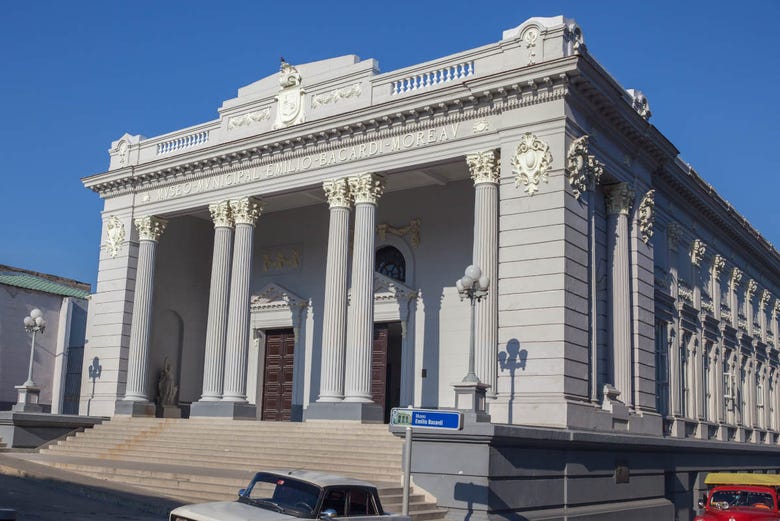
"We were born in a free country that our parents bequeathed to us, and the Island will first sink into the sea before we consent to be the slaves of anyone". These remarkable words spoken by Fidel Castro encapsulate the spirit of the Cuban Revolution that he conducted back in the 1950s. We'll set off on a tour to experience for ourselves the history of this movement, one of the most studied historic events of the 20th century .
The tour will commence in front of the Casa Granda Hotel in Céspedes Park . From there, we'll admire the C athedral of Santiago de Cuba for a moment before boarding a classic vintage car . The vehicle will take us to a key place to understand the politics of the city in the mid-twentieth century: the Palace of the Provincial Government , the current location of the Emilio Bacardi Museum.
We'll continue the route at the Moncada Barracks . This military base was attacked on July 26, 1953, by guerrillas against the Batista regime. The operation was led by Fidel Castro, his brother Raúl, and Abel Santamaría. Although the assault was unsuccessful, this uprising provoked the 26th of July Movement , whose fundamental role during the following years allowed for the ultimate triumph of the Cuban Revolution in Havana on January 1, 1960 .
In this same place, we'll visit the 26th of July History Museum , whose permanent exhibition will allow us to contextualize both the history of the barracks and the Revolution itself. After the visit to the museum, we'll board a horse-drawn carriage that will take us to the Santa Ifigenia cemetery .
Once we enter the cemetery, we'll stop at the tomb of Fidel Castro , located next to the mausoleum of José Martí . Finally, we'll again hop in the vintage car and drive back to the starting point, after 4 hours.
More Information
The activity takes place with a guide that speaks in English, Spanish, Italian and other language.
Transport by a vintage car
English–speaking guide
Horse–drawn carriage ride to Santa Ifigenia cemetery
Not included
Admission to the 26th of July History Museum: US$ 4 per person
Entrance to Santa Ifigenia Cemetery: US$ 3 per person
When to book?
You can book up until 5 days before the activity as long as there are still places. Book now to guarantee your spot.
Type of voucher
Electronic. Show the voucher on your phone.
Accessibility
Not wheelchair accessible.
Sustainability
All services published on Civitatis are carried out in accordance with our Sustainability Code .
Our providers commit to:
- Provide a safe and satisfying experience.
- Reduce, reuse, recycle.
- Incorporate eco-conscious technologies.
- Uphold fair employment standards.
- Foster the growth of local communities.
- Preserve the integrity of local culture.
- Safeguard both cultural and environmental heritage.
- Ensure ethical treatment of animals.
- Operate with honesty and transparency.
- Encourage sustainable behaviors among customers and staff.
This particular activity contributes as follows:
- No printing of documentation required.
Differentcuba By Midtrips Show more
Corporate name: Make It Different SL
Not permitted.
Frequently asked questions
Q - Why do this activity with Civitatis?
A - At Civitatis we guarantee the best quality and prices, click here if you want to know how we select our activities.
Q - How to book?
A - To reserve the activity, choose the date and complete the form on this page. You will receive your confirmation immediately.
Q - Is a minimum number of participants required?
A - This activity requires a minimum of 2 participants. Should this number not be reached, we'll get in touch with you to offer alternatives.
If you have any other questions please contact us.
Free cancellation
Meeting point.
Hotel Casa Granda
You may also be interested in
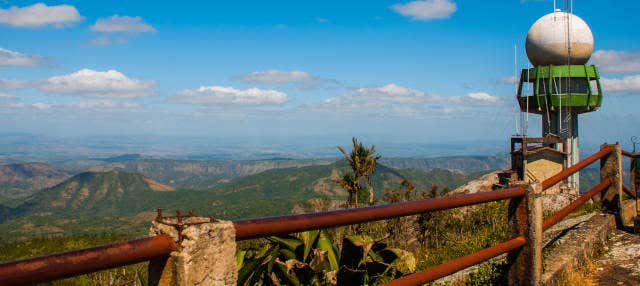
La Gran Piedra Excursion
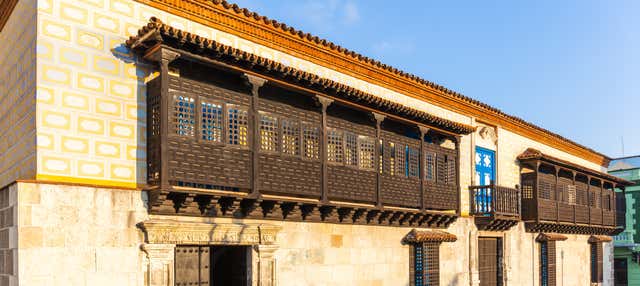
Santiago de Cuba Free Tour
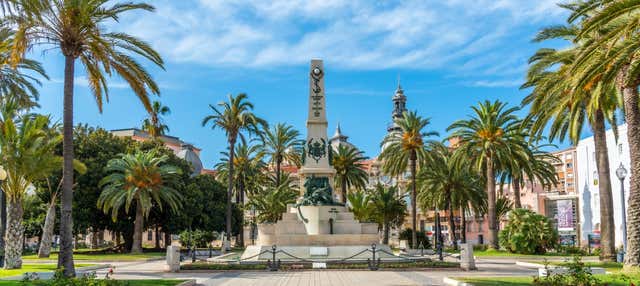
Guided Tour of Santiago de Cuba
Login to add activities to your favorites and access them from any device
This site is reCAPTCHA protected and Google's privacy policy and terms of service apply.
Log in to rate the opinions of other travelers
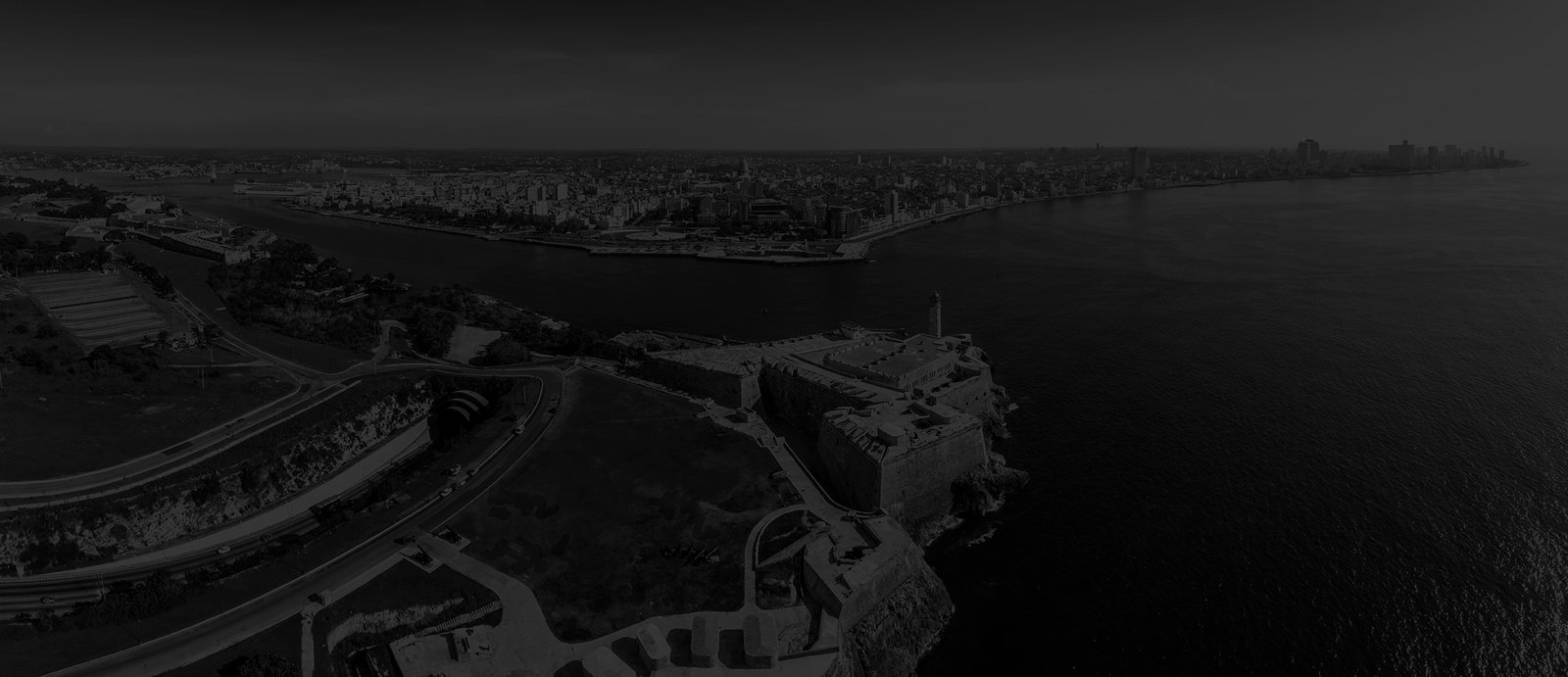
Revolution Tour PRIVATE TOUR
Description:
It is a look at the Cuban revolutionary process from the contemporary, following the historical-chronological line of the history of Cuba and in which the city is used as the background and scene of the most important events that have occurred over the course of more than 150 years of struggles. of the Cuban people, linking them with places and historical figures. A process that begins with the awakening of national consciousness at the beginning of the 19th century, it is an approach to the young Generation of the Centennial from the birth of José Martí until the revolutionary victory on January 1, 1959. The main revolutionary measures are covered, the nationalization process and the achievement of social guarantees such as education and public health. All from the experience of a Cuban guide and with extensive knowledge about history. We invite you to live the experience!!!!
- Parque Central
- Calles Obispo y San Ignacio
- Parque José de la Luz y Caballero
- Plaza de Armas
- Palacio Capitanes Generales
- Calle Tejadillo
- Museo de la Revolución
- Parque 13 de marzo
- Prado y San Lázaro
- Universidad de la Habana
- Plaza de la Revolución
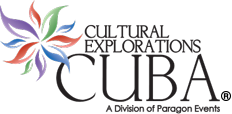
Use the form below to contact tour Cuban Heritage Tour directly.
Please complete all fields.
What would you like to inquire about?
01 booking details, 02 submit tour booking, 03 confirmation.
Thank you. We will get back you with regards your tour booking within 24 hours.
Traveller info
First name:
Email address:
Tour start date:
Total price:
Special requirements
We wish you a pleasant tour your Cultural Explorations team
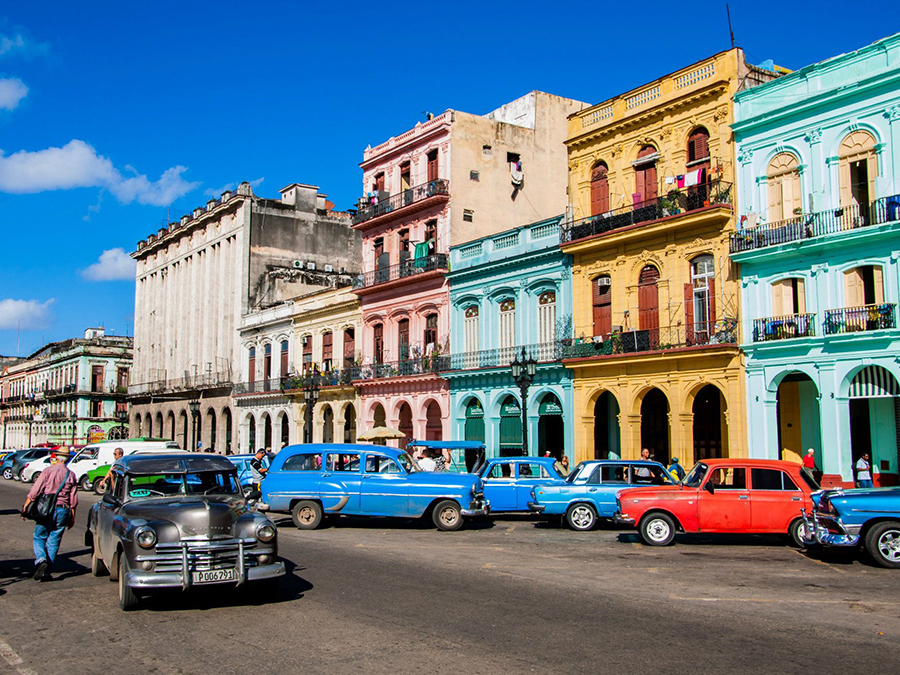
Cuban Heritage Tour
- Old Havana walking Tour Stroll down the lively streets of Havana while taking in its grand architecture and rich history.
- Stop by the Revolution Square A centerpiece of the Cuban Revolution and the location of Fidel Castro’s famous speeches.
- Lunch at a Private Paladar Family owned restaurants offering a variety of exquisite cuisine and deserts.
- Mercado San Jose Local exhibit of handcrafted accessories including leather items, handbags, paintings and ceramic art.
Activity level: Medium (some walking involved) add a yellow dot (Green for light)
Duration: 8 hours
- Private air conditioned vehicle
- English-speaking guide
- Guided all Havana excursion
- 3 course lunch with a welcome cocktail and one drink
*Additional food, beverages and gratuities are not included Starts from: $230.00/pp
Prices are based on groups of min 5 people. 2 to 4 people – add $75.00 Per person for full day 2 to 4 people – add $50 Per person for half day
Available departures
Forgot your password? Don't have an account yet? Sign up.
Young Pioneer Tours

Cuba: New Year Revolution & Missile Base Tour

Join Cuban Pioneers to celebrate with the Cuban people the anniversary of the Triumph of the Cuban Revolution.
Our trip starts in Old Havana, before we go off to the Bay of Pigs, the mausoleum of “Che”, where we not only see his final resting place, but the legendary train that he derailed, before visiting Trinidad, after which we return to Havana, where we not only take in iconic places such as the revolutionary museum, but also take part in the New Year celebrations which also mark the anniversary of the Triumph of the Cuban Revolution, on 1 January 1959.
For those familiar with YPT’s DPRK tours, we stick with the revolutionary theme of these, but also incorporating the much more relaxed environment that Cuba offers us by giving ample time for free exploration as well as providing a great chance to party the night away as much as you wish.
The tour is accompanied by YPT’s local representative and Cuban guide, as well as one western guide, meaning lots of flexibility and chances to get very off the beaten Cuba track.
Nothing stays the same forever, and Cuba is changing rapidly day by day, so see it with YPT now! As with all tours we can offer excellent discounts for YPT members, old customers, and group bookings.
Why not follow up your Cuba tour with our Colombia Pablo Escobar tour ?
Group A: New Year Revolutionary Tour, 8 days – $895
Group B: New Year Revolutionary Tour + Missile Base & Vinales, 10 days – $1190
Sunday 26th December 2021 – Havana
- Guests arrive/transfer to their homestay accommodation
- Free afternoon in Havana
- Meet up with group
- Dinner and drinks in top local paladar (private restaurant)
- Overnight in Havana
Monday 27th December 2021 – Cienfuegos
- Early morning the group departs for the historic city of Cienfuegos, a UNESCO world heritage (5 hour drive via Bay of Pigs)
- On the way to Cienfuegos we firstly travel along the flat central plain of Cuba where there are lots of citrus plantations. We turn off the main highway and shortly after this the scenery changes to a densely vegetated swamp where the natural fauna includes boa snakes and crocodiles. We have the opportunity to visit a crocodile farm here at Boca de Guamá.
- Once reaching the Caribbean coast we travel along the picturesque Bay of Pigs past the site where the landing of counter-revolutionary exile militia occurred in 1961.
- Today we visit the museum here that recounts the events of this conflict which resulted in the first defeat of a US-backed takeover in Latin America. There are some beautiful places to stop for a swim along the way including a sink hole which resembles a huge natural tropical fish tank, so make sure to pack your swim wear. SCUBA diving and snorkelling are optional activities here. Cubans are known to be very proud people, and the citizens of Cienfuegos call their town La Perla del Sur (the pearl of the south). Founded by the French, Cienfuegos’ appeal lies partly in the European flavour of its colonial hub, with a wide Parisian-style boulevard and elegant colonnades, and there is an ambiance to inspire Cuba’s most celebrated Son singer to write the words “Cienfuegos is the city I like best”.
- After checking-in with your host family, you will have a short time to walk around the city and take in the atmosphere.
- Go with the guide or explore on your own.
- Dinner in a local paladar private restaurant
- Night out drinking in the bars of Cienfuegos
- Overnight in Cienfuegos
Tuesday 28th December 2021 – Cienfuegos/Trinidad
- Morning – walking tour around Cienfuegos. Visit the historic Teatro Tomás Terry.
- Depart Cienfuegos for Trinidad – stop en route at Palacio de Valle, the outlandish house of an eccentric millionaire. (1.5 hours)
- Lunch on arrival in Trinidad
- We head off on our walking tour of Trinidad.
- La Villa de la Santisima Trinidad was founded by Velazsquez in 1514 and the defender of indigenous rights in the Americas, Fray Bartolome de Las Casas, attended over the settlement’s first mass. The future conqueror of Mexico, Hernan Cortes, recruited sailors here for his future expedition into that land. It is a charming, small town with the green mountains in the background, and the turquoise waters and pure white sand beaches of the Caribbean Sea just a short distance away. The town was fairly inactive until the 1800s, when French refugees fleeing a slave revolt in Haiti landed here en masse and brought with them sugar cane cultivation. The new residents settled and farmed in the Valle de Los Ingenios, just northeast of the town. Vast wealth flowed into the local economy from sugar cane cultivation and the area produced one third of the country’s sugar at one point. The sugar boom was terminated by the two wars of independence, but the wealth generated by the industry remains visible in the town’s once grand mansions, colourful public buildings, wrought iron grillwork and cobble-stoned streets. The town and area also saw a lot of action during and following the triumph of the Revolution, as gangs of counter revolutionaries hid out and struck from the safety of the mountains.
- Visit to The Museo Nacional de la Lucha Contra los Bandidos and the which chronicles the struggles of this period in the town’s history. The best part is the view from the tower!
- Dinner in a local top private restaurant.
- The nightlife in Trinidad is probably the most accessible and intense in all of Cuba, with numerous live music venues and many dance performances every day of the week, all amongst the enchanting setting of old colonial buildings and cobblestone streets.
- It’s optional but we very strongly recommend a visit to the unique and (in)famous Disco Ayala, a nightclub in an underground cavern!
- Overnight in homestay
Wednesday 29th December 2021 – Trinidad
- Free day in Trinidad.
- Suggested activities: trip to the beautiful Valle de los Ingenios in the morning (by classic train ($10), if it’s working), followed by afternoon horse riding or salsa dancing.
- Other possibilities include a visit to the beach (Playa Ancón), salsa dancing lesson ($25) or just exploring the city.
Thursday 30th December 2021 – Santa Clara
- Today we travel to the city of Santa Clara, which was a key city in the triumph of the Revolution.
- Depending on road conditions we can take a number of different routes around or through the Sierra del Escambray perhaps making a few stops along the way.
- Upon entering Santa Clara there is a huge statue of Ernesto Ché Guevara, beneath which is the mausoleum where he is buried.
- We visit the museum here that is dedicated to his life.
- We take a walking tour of Santa Clara where we come across significant sites such as the armoured train derailed by Che and his troops, in the final battle of the Cuban revolution.
- Dinner and optional evening of local music.
- Overnight in Santa Clara
Friday 31st December 2021 – Havana
- We head back to Havana in the morning, stopping at open air October Crisis museum overlooking Havana bay, featuring Soviet nuclear missiles (thankfully now inert!) of the period in 1962 when the world came closer than ever to the brink of nuclear war.
- Lunch in city
- Visiting San Carlos de la Cabaña fortress where Che had his office, with a spectacular view over the bay to Old Havana
- Visit to the Havana Club Museum of Rum! Free samples optional
- Optional New Year show in a beautiful open air setting in a private restaurant.
- Or ring in the New Year Havan-style sipping rum on the waterfront malecón.
Saturday 1st January 2022 – Havana
- City tour of Old Havana, encompassing the Plaza de las Armas, complete with a statue of Manuel de Cespedes, one of the leaders of the independence movement. We pass the spot where the city of Havana was founded almost 500 years ago. We pass the open air exhibit of the Museo de la Revolución to see the yacht Granma and learn about its importance in Cuban history.
- Afternoon free time for some rest and relaxation or to wander some more.
- Dinner at our favourite secret private restaurant
- Optional but very strongly recommended visit to Fábrica de Arte Cubano (FAC – Cuban Art Factory, $2). This is one of the coolest art and night venues in the world right now.
- Goodbye drinks, Havana style, on the Malecón
Sunday 2nd January 2022 – Havana/Viñales
- Group A: End of tour! It is completely fine to leave your things at the homestay whilst you either wait for your flight, or go exploring the city further. Cuban Pioneers can arrange a private taxi to the airport for you if you wish.
- Group B: Carry on for Viñales extension part of the tour.
- We aim to leave at 11.00 am, depending on Cuban bureaucracy!
- Our first stop is Lenin Hill, which is where the first ever statue of Lenin was erected following his death, this is very derelict and not at all touristy!
- Lunch at a Cuban style street restaurant
- TRIP HIGHLIGHT We now visit the incredibly secret bunker where the Soviet Union stored the nuclear weapons that precipitated the Cuban Missile Crisis. This site is of extreme historical significance and was only recently discovered. This is not on the tourist trail!
- We now visit the former Soviet embassy, a huge example of socialist architecture, as well as some other Soviet-era tower blocks for some great fusion photos of Havana’s rich history
- We now take the 2-3 hour scenic drive to Viñales. On arrival, we check into our casa before heading out for dinner and drinks in this formerly sleepy town that whilst still relaxing now has a bustling nightlife.
- Overnight in Viñales
Monday 3rd January 2022 – Viñales
- In the morning we head to the prehistoric wall for some amusing photos before heading over to a tobacco farm for a chance to see the process of cigar making, as well as have a try of the produce
- Another great reason to come to this farm is for the stunning views of the surrounding rolling hills that you get from here
- Lunch at farm accompanied by great views
- Viñales is famous for its stunning caves, with a number being big tourist attractions, we avoid them like the plague grab our local guide and head to a cave that is (currently) relatively unknown. It takes an hours hike, and then heading through the cave network with lights before we hit the swimming part of the adventure. Truly stunning, so don’t forget the go-pro!
- We head back to the casa for a shower before heading out to a great vantage point to enjoy our last sunset with a cocktail as a group
- We finish our last night in Viñales with an authentic home cooked Cuban meal at our casa.
- Drinks and conversation in the rocking chairs on the patio to end our last evening in Cuba
Tuesday 4th January 2022 – Viñales/Havana
- Head back to Havana after breakfast – about 3 hours’ drive
- End of tour! Cuban Pioneers can arrange a private taxi to the airport for you if you wish, or we can help with accommodation if you want to stay longer. Or pick choose from our tour extension offerings below!
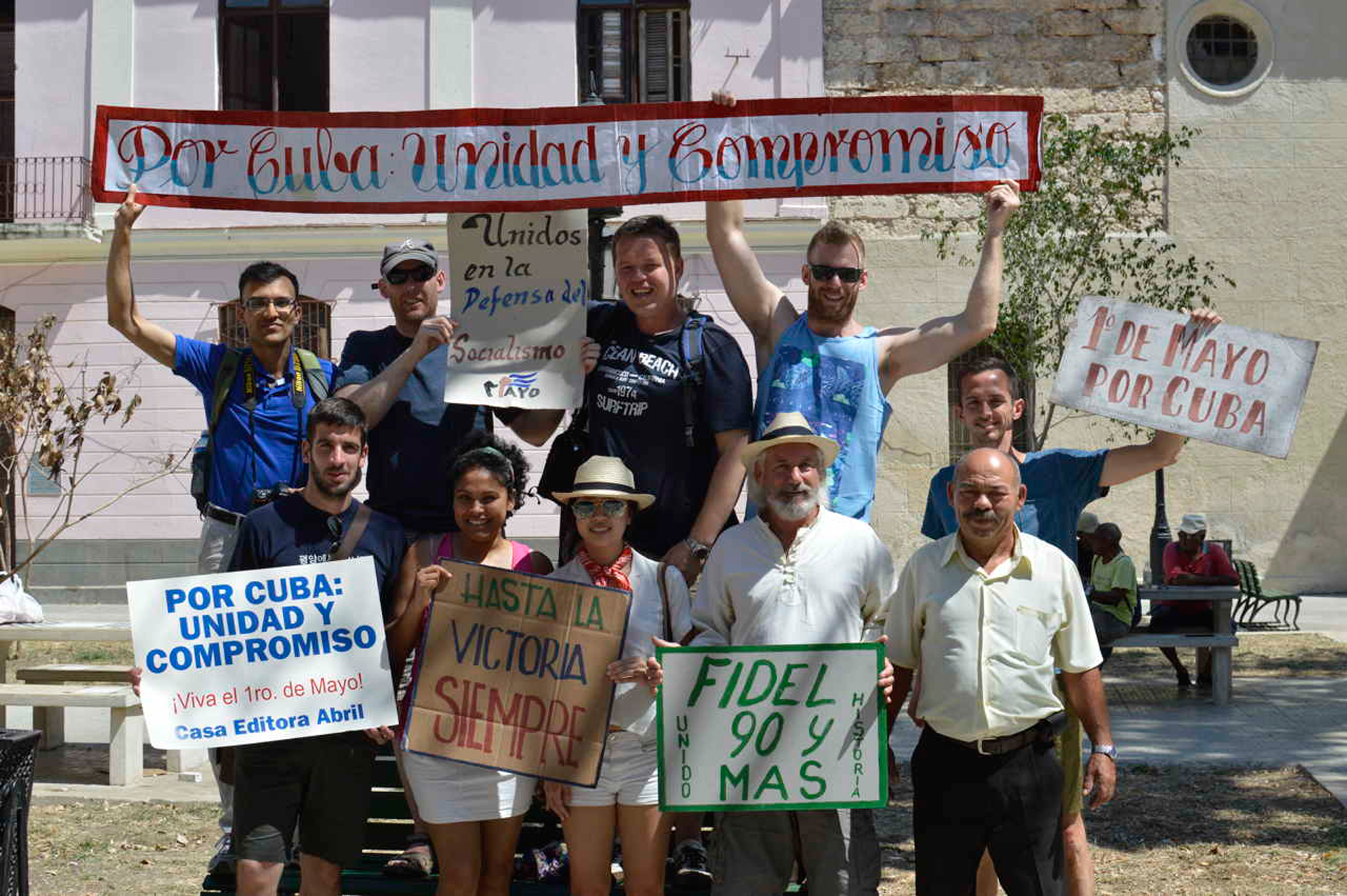
Cuba and North Korea: Comrades-in-Arms
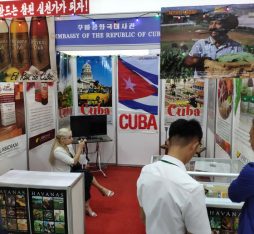
Fidel Castro and Diego Maradona: the Strangest Father-Son Relationship
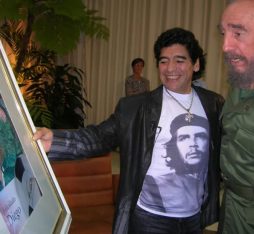
Book Your 2024 Tour for No Deposit, a 50 Euro Deposit, or With a Discount!
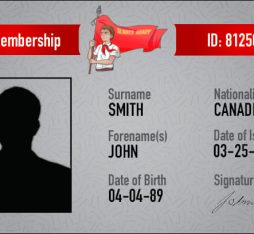
Football in Cuba
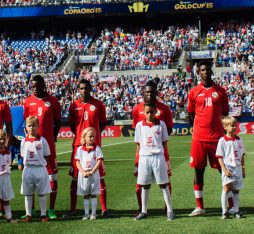
The Legend of Che Guevara
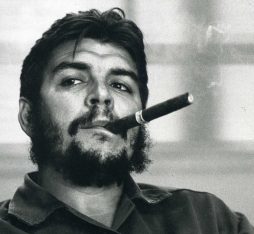
Cuban Currency
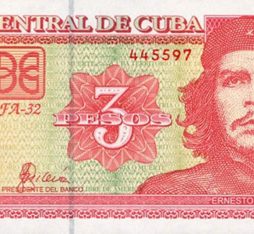
Cuba: 5 Weird and Unusual Statues
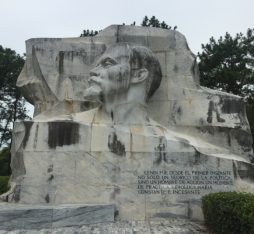
further-reading 28706
Lifting the embargo: cuba’s new generation of tourism.
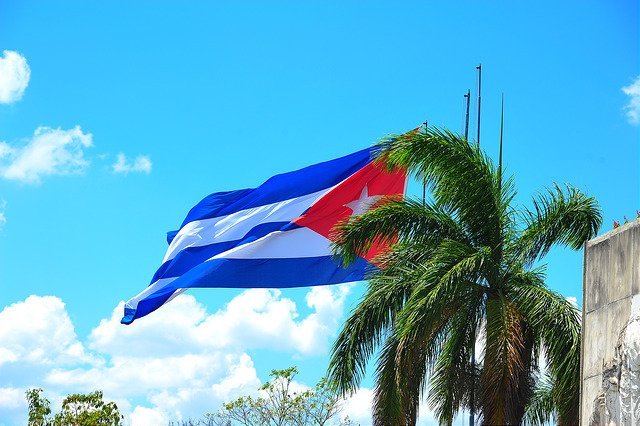
Tackling the Cuban Currency: CUPs and CUCs
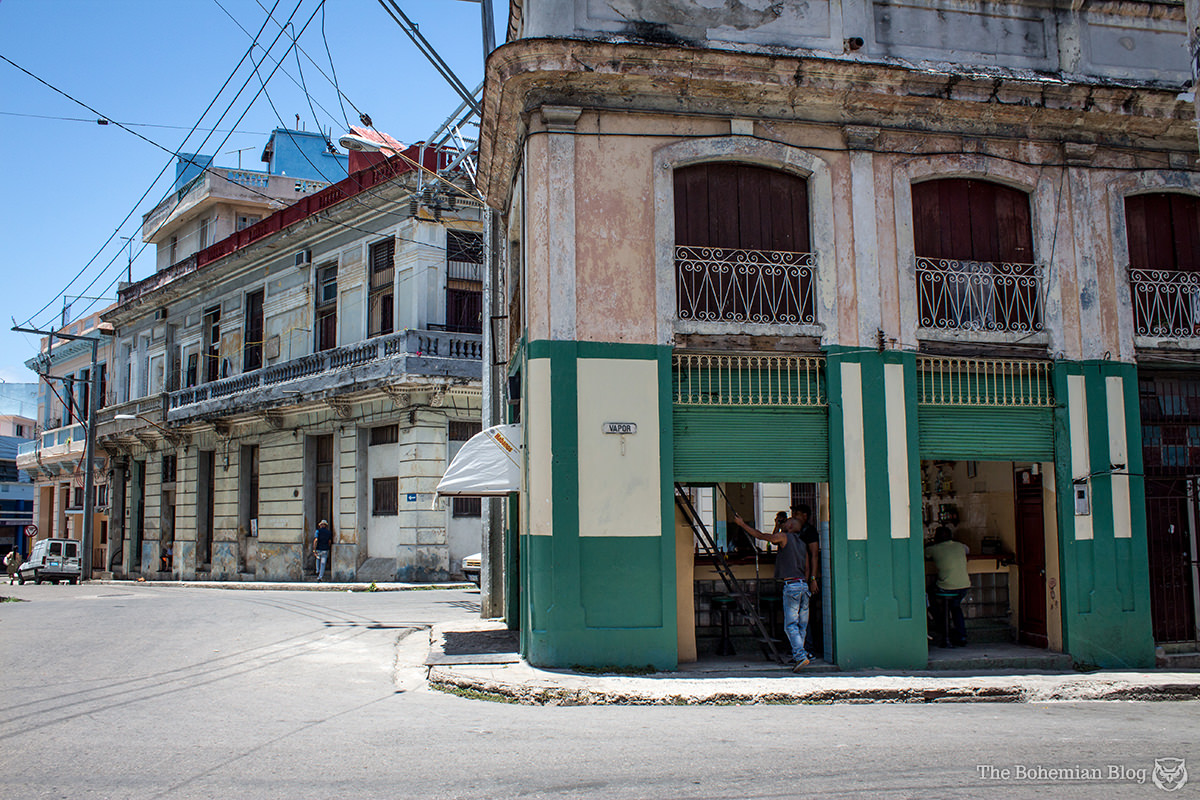
- Tour Extensions
Want to extend your YPT adventure? Join one of our great tour extensions
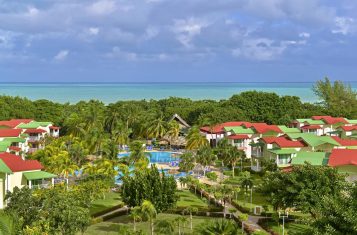
Varadero beach extension
- Start Date : December 26th 2021 End Date : January 2nd / 4th 2022
- Price : $895 / $1190
- Duration: 8 days / 10 days
Tour Highlights
- Visit Santa Clara and see the huge statue of Ernesto Che Guevara, beneath which is the mausoleum where his remains are buried, as well as seeing the museum that is dedicated to “Che” the most iconic of all revolutionary figures, where we even see the train that Che derailed during the revolution!
- We stop at a genuine tobacco farm to see the process of how farmers make the world’s most famous cigars, and for the adventurous try a little of the produce ourselves. This is a very uniquely Cuban experience
- Once reaching the Caribbean coast we travel along the picturesque Bay of Pigs past the site where the landing of counter-revolutionary exile militia occurred in 1961 and visit the museum here that recounts the events of this conflict which resulted in the first defeat of a US-backed takeover in Latin America. There are some beautiful places to stop for a swim along the way including a sinkhole which resembles a huge natural tropical fish tank, so make sure to pack your swim wear!
Inclusions and exclusions
•Accommodation: Every night of the tour. •Transport: To complete the itinerary. •Breakfasts: for each day of the tour, except the arrival day. •All lunches (excluding arrival and departure day) •Local English-speaking guide throughout. •Experienced, western Cuban Pioneer guide throughout. •All entrance fees as per itinerary
•International flights •Visa/Tourist card (we can advise/provide depending on your passport and country of residence) •Insurance •All dinners (unless otherwise stated) •Drinks •Tips (we suggest $8 per day for guides and drivers) •Optional activities, day-tours and excursions (such as horse-riding and crocodile farm)
We have expert guides ready to help answer any questions you may have.
Tripadvisor
Latest news.
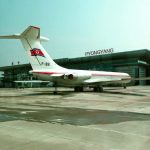
North Korea will reopen in 2024 – tour prices will rise
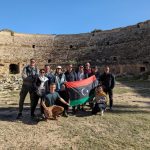
Libya tourist e-visa scheme now available

Dave Kitson named Nauru Football Manager

An American in South Korea Heads North (Part 1)
- Terms & Conditions
- Payment Policy
- North Korea Tours – 2017 Tours
- Independent Tours
- North Korea FAQ
- Our Terms and Conditions
- Our Payment Policy Terms
©YoungPioneerTours.com 2024. All rights reserved.
- History Classics
- Your Profile
- Find History on Facebook (Opens in a new window)
- Find History on Twitter (Opens in a new window)
- Find History on YouTube (Opens in a new window)
- Find History on Instagram (Opens in a new window)
- Find History on TikTok (Opens in a new window)
- This Day In History
- History Podcasts
- History Vault
Cuban Revolution
By: History.com Editors
Updated: August 9, 2023 | Original: August 19, 2021

The Cuban Revolution was an armed uprising led by Fidel Castro that eventually toppled the brutal dictatorship of Fulgencio Batista. The revolution began with a failed assault on Cuban military barracks on July 26, 1953, but by the end of 1958, the guerrilla revolutionaries in Castro’s 26th of July Movement had gained the upper hand in Cuba, forcing Batista to flee the island on January 1, 1959.
Lead-Up to the Cuban Revolution
After the Spanish-American War , the U.S. military directly administered the island until 1902, when Cuba became a republic, with sugar as its main commercial export. After a financial crisis and persistent governmental corruption, Gerardo Machado was elected as Cuba’s president in 1925, pledging reform. Instead, Machado became Cuba’s first dictatorial ruler, until he was ousted in 1933 after a revolt led by Fulgencio Batista, a rising star in the Cuban military.
Various presidents came and went over the next two decades, but Batista remained a constant force. He served as president himself from 1940-44, and ran for a second term in 1952. Facing defeat, he overthrew the government in a bloodless coup and canceled the elections.
Fidel Castro and the 26th of July Movement
Castro, a young lawyer and activist, had been running for Congress as part of the Cuban People’s Party before Batista seized power. Seeking to arm a revolutionary opposition to the Batista regime, he led a raid against the Moncada army barracks in the city of Santiago de Cuba on July 26, 1953. Most of the group was killed; Castro and his younger brother, Raúl, escaped but were later arrested and imprisoned.
Fidel Castro’s trial and imprisonment served to build his reputation as a revolutionary leader. After Batista yielded to international pressure and granted amnesty to many political prisoners in 1955, Castro headed to Mexico, where he began organizing Cuban exiles into a movement named for the date of the failed Moncada attack.
The Cuban Revolution Begins
In November 1956, 82 men representing the 26th of July Movement sailed from Mexico aboard the Granma, a small yacht. Batista’s forces learned of the attack ahead of time, and ambushed the revolutionaries shortly after they landed in a remote area of eastern Cuba on December 2, 1956. Though most of the group was killed, around 20 of them escaped, including Fidel and Raúl Castro and one of Castro’s foreign recruits, Argentine-born doctor Ernesto “Che” Guevara .

Reaching the Sierra Maestra mountains, Castro’s group attracted new members and began a guerrilla campaign against Batista’s better-armed and more numerous forces. Over the next two years, Cuba existed in a virtual state of civil war, with rebel forces carrying out attacks on government facilities, sugar plantations and other sites as Batista’s regime cracked down on anyone suspected of collaborating with Castro’s revolution.
Rebels Seize the Advantage
In response to growing opposition, Batista suspended constitutional protections for Cubans, including freedom of speech and assembly. The following year, he called for the planned presidential election to be postponed, blaming the ongoing violence.
Believing support for the revolution was waning, Batista called for a major military offensive against the rebels in the Sierra Maestra mountains in the summer of 1958. Instead, the rebels swiftly turned back the offensive, forcing the army to withdraw. With international media giving favorable press coverage to the revolutionaries, the United States began to withdraw support for Batista’s government, which it had previously backed due to the dictator’s anti-communist stance.
Castro's Revolution Triumphs
In November 1958, the Cuban presidential election went ahead amid widespread fraud, with Batista’s chosen successor winning despite a more moderate candidate receiving more legitimate votes. As support for Batista continued to erode, the 26th of July revolutionaries struck the decisive blow in late December 1958, with Guevara’s forces defeating a much larger army garrison in the Battle of Santa Clara and capturing a train loaded with vital arms and ammunition.
On January 1, 1959, with rebel forces bearing down on Havana, Batista fled Cuba for the Dominican Republic; he later proceeded to Portugal, where he would remain in exile until his death in 1973.
Fidel Castro arrived in Havana on January 9 to take charge of a new provisional government, quickly consolidating control and rounding up Batista’s supporters, many of whom were tried and executed by revolutionary courts. Though Castro had called for elections during the revolution, he postponed them indefinitely once he came to power.
U.S.-Cuba Relations Break Down
The United States was one of the first countries to recognize Castro’s government in Cuba, but relations between the two countries quickly deteriorated as Castro implemented a communist regime and forged close ties with the Soviet Union, the U.S. enemy in the Cold War . The United States broke off diplomatic relations with Cuba in early 1961, and the next few years were marked by escalating tensions, including the Bay of Pigs invasion (April 1961) and the Cuban missile crisis (October 1962).
Despite a long-running U.S. trade embargo, widespread economic hardship, a mass exodus of hundreds of thousands of Cubans and multiple efforts to implement regime change, Fidel Castro remained in power until 2008, when he formally resigned after handing off power to his brother . He died in 2016.
“Cuba Marks 50 Years Since 'Triumphant Revolution'.” NPR , January 1, 2009. Neil Faulkner, “The Cuban Revolution.” Military History Matters , January 10, 2019. Cuban Revolution. Encyclopedia Britannica . Tony Perrottet, Cuba Libre! Che, Fidel, and the Improbable Revolution That Changed World History (Blue Rider Press, 2019)

Sign up for Inside History
Get HISTORY’s most fascinating stories delivered to your inbox three times a week.
By submitting your information, you agree to receive emails from HISTORY and A+E Networks. You can opt out at any time. You must be 16 years or older and a resident of the United States.
More details : Privacy Notice | Terms of Use | Contact Us
- Search Search Search …
- Search Search …

7 day Cuba Itinerary [Revolutionary Cuba]
Welcome to our Revolutionary Cuba 7 day itinerary. This itinerary follows the major attractions and sites of the Cuban Revolutions and uses the Viazul Bus service as the primary method of transport. This itinerary includes the buses to catch, the times, and the best places to stay that will have you making the best of your time exploring Cuba. We aim to avoid the need to drag bags long distances, and to avoid spending money on unnecessary taxis and transfers. This 7 day Cuba itinerary focuses on Cuba’s Revolutionary history and takes you to all of Cuba’s Revolutionary highlights.
THIS POST MAY CONTAIN COMPENSATED AND AFFILIATE LINKS. MORE INFORMATION IN OUR DISCLAIMER
Our Revolution focused 7 Day Cuba Itinerary takes you to all the key sites in Cuba that are focused on the country’s revolutionary history. And our Cuba itineraries are unique, in that we use the Viazul Buses as the primary method of transport. For this tour of Cuban Revolutionary sites, we’ve detailed the major attractions, and recommend where to stay in each of the cities and areas that you’ll visit so that you can spend more time exploring Cuba. There are also suggestions on how to extend the itinerary if you have more time.
7 Day Cuba Itinerary – Revolutionary Cuba
We know that there are other attractions and places to visit in Cuba that have links to the Revolutions, but this 7 day Cuba itinerary focuses on the major Cuban Revolution attractions that you can get to using the Viazul Bus as your primary mode of transport and tries to ensure that you don’t spend most of your vacation sitting on a bus but seeing and experiencing the best Cuban Revolution attractions that Cuba has to offer.
7 Day Cuba Itinerary (Revolutionary Cuba) Key Information
You’ll need a copy of the Viazul Bus timetables and prices to plan and execute this itinerary if you don’t have that yet, click here and I’ll send it to you. You’ll need to make all your own bus bookings online (or in-person when you arrive in Cuba) with Viazul directly.
If there’s a journey on this route that Viazul doesn’t have a service for, then we’ll detail it as we go through the itinerary and will make a recommendation of alternative transport options.
Arriving in Havana
This itinerary assumes that you’ll be arriving at Jose Marti (Havana) international airport.
- Read about arriving at Havana airport here
- Get a (required) Cuban Tourist Card here
- Make sure you’ve got medical insurance (another requirement).
We recommend using Visitor’s Coverage for insurance – and you can also buy insurance for Cuba from Civitatis. Or if you want to read about all the details of required Cuba travel insurance our guide is here.
- Check the times of your arrival and the Viazul airport bus to Havana. If they don’t match, then consider booking an airport transfer here. > There are shared and private transfers available
- The Viazul Bus station is about 3.6km (2.2 miles) from Old Havana, which is where we recommend you stay to maximize the time that you’ll spend in Havana on this Revolutionary itinerary of Cuba.
Arrange your internet access in Cuba
The internet in Cuba is different from the rest of the world. Read our guide about it here , but also consider pre-ordering a Cuban Tourist SIM for easier access while you’re in Cuba.
Choose an eSIM, which you can buy here. It means that you’ll be online as soon as you get off the plane. And you can top it up if you need more data during your stay. I wrote about it here.
Read about Cuban Tourist Sims here or TLDR: Pre-order one and pick it up at Havana Airport on arrival.
If you plan on using the internet in Cuba we recommend using a Virtual Private Network. Don’t know what that is? Read our guide here . Or just buy the best VPN for Cuba here (this coupon will give you 3 months for free ).

Money and Paying in Cuba
You’ll need to plan how you’ll pay for things in Cuba too. Read our guide to Cuban Currency here .

Booking Transport for your Revolutionary Cuba Itinerary
You’ll visit FIVE different towns and cities on this whistlestop Cuban revolutionary itinerary. The majority of the transport between the 5 different locations is on the Viazul Bus, but you will need to take a colectivo or private transfer for one short route.
If your plane lands at a time that can meet one of the Viazul Buses from Havana Airport to Havana city, then you can also book the Viazul Bus into Havana. Otherwise, we recommend pre-booking a transfer. You will also need to book your Viazul Buses as soon as you confirm the dates of your vacation to ensure you follow the itinerary. Don’t forget to read our guide to the Viazul Bus Service so you know what to expect!
- Prebook Airport Transfers here – now includes shared transfers!
- Book your Viazul Bus Tickets here
Personal Security in Cuba
Cuba is one of the safest places to travel. But petty theft does happen. Especially if you openly display valuables and don’t look after them. Take all the usual precautions that you would anywhere else. Lock your valuables in your accommodation in a portable travel safe , don’t leave valuables lying around, and don’t openly display wads of cash and you’ll be fine.
Book Your Havana Accommodation for this 7 day Cuba Itinerary
As most of what you’ll be seeing on this Revolutionary Cuba itinerary is in Old Havana (Habana Vieja) we recommend staying in Old Havana. Our recommendations for where to stay in Havana Vieja are:
The Casa Buenos Aires is in a superb location in the center of Old Havana, just one block from the Museum of the Revolution, making it easy to walk all the sights of Old Havana. There are three private, ensuite rooms here, all with a private bathroom and a private balcony. Breakfast and laundry are available here. There is internet access here, a glorious garden, and a terrace with a bar where you can enjoy a fabulous Cuban cocktail. See photos of the Casa Buenos Aires here.
The gorgeous Casa Giraldilla is a restored colonial house dating from the 1920s and has high ceilings and a glorious balcony for people-watching. Carmen and Carlos speak English, Spanish, and a little French. All rooms are ensuite and have either a window or a balcony onto the street. There are two doubles and a twin room here. Breakfast and internet access are available here. There is a glorious terrace on the roof available to all guests. Book a room here.
The Casa de La Plaza de Cristo is in a building that dates from 1903, an 8-meter-long balcony gives all guests a magnificent view of the Plaza de Cristo. It is a fabulous location to stay in Old Havana. Rooms here are bright and airy, simply decorated, and have air conditioning. Rooms are ensuite and breakfast is available for an additional cost. You can see the location of this great old Havana casa particular here.
If you prefer to stay close to the Viazul Bus station and stretch your legs (it’s about a 35-40 minutes walk to Old Havana), then our next recommendation is very close to the Viazul Bus Station.
Casa Caribbean Blue 1927 is located in a glorious Neo-classical property just a short walk to the Havana Viazul Bus Station in the heart of Vedado. It’s just 10-minute walk to the Malecon and the Hotel Nacional. There’s a garden and a lovely terrace here, plus a washing machine. All rooms at Casa Caribbean Blue are fresh with plenty of natural light and presented in a traditional Cuban style. The host here, Noel, speaks Spanish, French, and English. Read more reviews here.
Revolutionary Cuba Day 1 of 7 day Cuba Itinerary: Havana
The casa particulars that I recommend staying at in Havana are all located in Old Havana – apart from one, which is close to the Viazul Bus station – so you’ll have more time to enjoy the city. One of the benefits of staying in a Casa Particular is breakfast. You’ll get the best! And you’ll save a whole lot of time by breakfasting at home. And you’ll get local knowledge. Your casa particular owner will be your best source of local knowledge in Cuba.
Take a Revolution Focused Walking Tour of Havana
The best way to learn about the history of the country is from a local guide. And to see it. And that’s why I recommend you take a walking tour of Havana. This specific walking tour is focused on the Cuban Revolution.
The walking tours run in Havana (and other cities in Cuba) are run by locals.
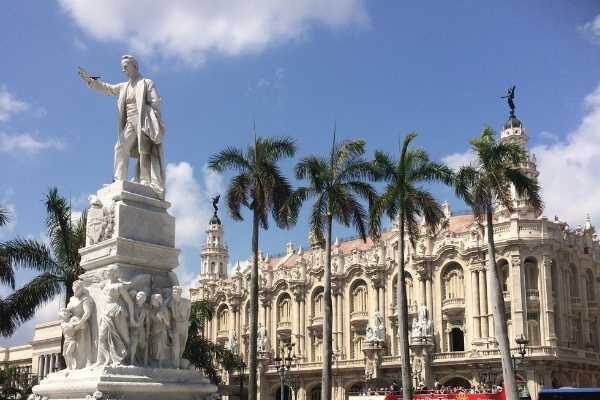
This walking tour with a Cuban Revolution Focus starts at the Jose Marti statue in Central Park. You’ll learn all about rationing in Cuba, the relationship between the Catholic Church and Cuba, and “Operation Peter Pan”. There’s a visit to the Museum of the Revolution (you’ll be back there tomorrow too), and the Spanish Embassy, as well as a primary school, to learn about education in Cuba since the revolution. After stopping by El Capitolo – the National Capitol Building you’ll take a bus with your guide to the Plaza de La Revolucion and its iconic status and images. This is a superb way to get an introduction to revolutionary Cuba and you’ll have the opportunity to ask your guide all sorts of questions, including where you should go for lunch! You do need to book and reserve a place here.
You’ll be finishing your tour at the Plaza de la Revolution, and so you’ll want to grab some lunch nearby (the tour finishes at 1 pm). In the absence of a recommendation from your tour guide, I’d head for El Gusto, where they do a fabulous Ropa Vieja and it is just a short walk from Plaza de la Revolution. All their dishes here are filling and cheap.

So far you’ve explored the city on foot, and just the story of the Revolution – now it’s time to take to the road for a while at least because you simply can’t come to Havana and not see the city and the Malecon in a vintage car.
Take a Classic Car Tour of Havana
This is one of the best ways to see Havana Cuba. You’ll find classic cars parked up at the Plaza de la Revolution. Normally tours start downtown, near the Hotel Inglaterra, but you can mix it up and start from here and end up back in Old Havana. You can also pre-book a classic car tour here. (you’ll pay online, which reduces the amount of cash you need to take with you).
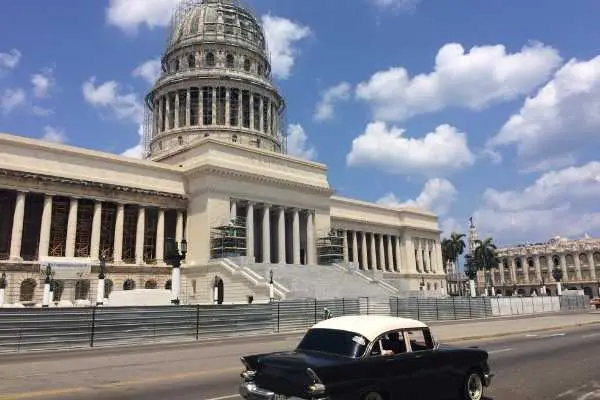
You’ll need to negotiate, but the usual rate is about US$70 an hour. They have a standard route that they take, (there’s more on what to expect on a classic car tour here ). You’ll need to pay cash, alternatively, you can prebook and prepay a vintage car tour in Havana here.
You’ll want to make sure that you stop by the Hotel Nacional on your tour.
Head to the Hotel Nacional
The hotel has a somewhat storied past, since its opening in 1930, its welcomed leading politicians, mobsters, and actors. Winston Churchill, Frank Sinatra, Jean-Paul Sartre, Marlon Brando, and Alexander Fleming have all been here. It also had a bloody revolutionary past. In September 1933 there was a bloody siege here, Cuban army members, loyal to Fulgencio Batista’s coup attacked the hotel in what was known as the Battle of the Hotel Nacional of Cuba. Following the 1959 Revolution, the hotel was nationalized and neglected, and it’s now a shadow of its former self. However, it’s a famous place for mojitos on the terrace. Stop if you want to, or head back into the city in your classic car.

Taste Freedom in Old Havana – Cuba Libre
You can track a lot of the history of Cuba through one of the products that is synonymous with the country. Rum and Cocktails. And the cocktail that I recommend you try is the Cuba Libre.
The origins of the Cuba Libre date back to the American occupation of Cuba following the Spanish-American war. Legends have it that a Cuba Libre was first requested by Captain Russell when soldiers were celebrating the end of the war at the American Bar in Havana. He asked, the tale goes, for a rum, coke, and lime, as chants rose amongst the Americans and Cuba to celebrate a free Cuba – “Por Cuba Libre”. (Our guide to Cuban cocktails and history is here )
You can pick your bar of choice in Old Havana, or head on a cocktail tour and get the history of ALL the Cuban Cocktails in some of the most historic bars in Havana.
For dinner, try El del Frente in Old Havana, or La Guarida in Centro Havana at 418 Concordia, La Habana, Cuba.
And, with that we’re at the end of your first day on this 7 day Cuba Itinerary, so it’s time to head back to your Casa Particular for a good night’s sleep, you’ve got a packed day and a lot of travel to do tomorrow! Sleep Tight now!
Revolutionary Cuba Day 2 of 7 day Cuba Itinerary: Havana + Bus to Santiago de Cuba
You’ve either for a half-day or another full day in Havana today, before heading to the Viazul Bus station for a bus to Santiago de Cuba, the next stop on your Revolutionary Cuba tour.
Your bus leaves the Havana Viazul Bus station at 23:35 and you’ll need to be at the bus station at least an hour before to check in. There are three alternative buses that leave earlier in the day if you prefer. Here are the times of the buses to Santiago de Cuba from Havana, so you can decide which to take.
The bus costs 62 EUROS and you can book your tickets online with Viazul. Make sure you read our guide to the Viazul Bus carefully, as you’ll need to check-in personally at the Viazul Bus station at least an hour before your scheduled departure.
I’ve based this itinerary on you taking the 23:35 bus, so you’ll need to alter it appropriately.
Havana Santiago de Cuba
05:00 00:20
15:00 07:50
15:15 12:10
23:10 14:20
After breakfast on day 2 of your 7 day Cuba Itinerary, you’re going to head back to the Museum of the Revolution for a longer, at leisure exploration.
Explore the Museum of the Revolution
The Revolution Museum is located in a glorious 1920s building that was once the Cuban Presidential Palace. The Museum of the Revolution in Havana covers the roots of the revolution in Cuba all the way through to 1959 and beyond, exploring how things have changed since 1959. You’ll also find the Granma yacht here. This historic artifact brought 82 guerrilla fighters from Mexico to Cuba in 1956, where they landed at Playa Las Coloradas after seven days at sea. There are also blood-stained and bullet-ridden uniforms on display. Most information is provided in Spanish and English translations are limited, but there are lots of displays and photographs.

- Museum of the Revolution Opening Time: 10:00 to 17:00.
- Address of Museum of the Revolution: Calle Refugio nº1, La Habana – Cuba.
- Entrance Fee for Museum of the Revolution: 10 Cuban Pesos
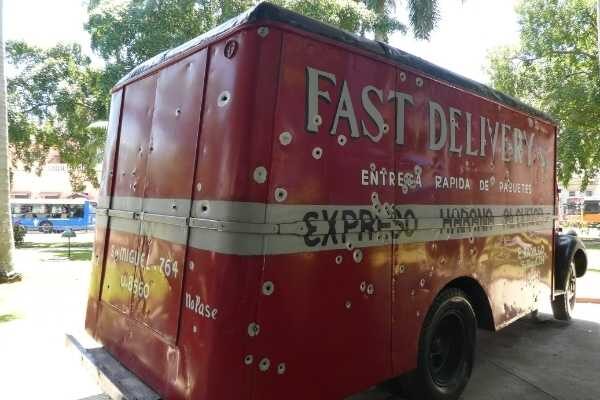
If you’ve decided to get the early bus that day, then you’ll need to grab a quick lunch in Old Havana before heading to the bus station for your departure. If you’re staying with the later departure, then I recommend that you head either to the Museum of the City of Havana or the Museum of Rum. Your choice!
Museo de la Ciudad (Museum of the City of Havana)
The Museum of the City of Havana is found in the Plaza de Armas. You can’t miss it as it occupies the entire west side of the square. El Museo de la Ciudad was once the Spanish government headquarters in Cuba. It was also home to the Viceroys that ruled Cuba. After 1898 and Cuban independence it became the US military administration. Today this museum houses the history of Havana. And it’s a great way to see the development of the city from before the Revolution and after it. Of specific interest is a rather interesting exhibition of photographs of important moments in Havana’s history
- Museum of the City of Havana Opening Time/Tour Time: From Tuesday to Saturday from 10:30 to 17:00. Sunday from 9:00 to 13:00.
- Address of Museum of the City of Havana: Calle Tacón (between Obispo and O’Reilly), Plaza de Armas, La Habana Vieja, Cuba.
- Entrance Fee for Museum of the City of Havana: US$3
The Rum Museum
The Havana Club Rum Museum in Havana is a true journey into the Cuban roots of rum. Not only will you find out about the rum-making process, from freshly cut sugar cane to a surprising scale model factory; but you’ll also learn about how the distillery and aging warehouses worked. There’s also a tasting involved and some fabulous Cuban cocktails to try here too.
- Havana Club Rum Museum Opening Times: Monday to Friday 9 am – 430pm
- Address of Havana Club Rum Museum: Avenida del Puerto 262 esq Sol, Havana Vieja, La Habana
- Entrance Fee for Havana Club Rum Museum: Experiences are available here , prices vary
- Website for Havana Club Rum Museum: https://www.havanaclubmuseum.com/
Explore how the Cuban Revolution Affected Food and the Cuisine of Cuba
The Cuban Revolution seriously affected the availability of certain foodstuffs in Cuba and one of the great ways of understanding that more is to see the food generally available. And to taste it. This fabulous street food tour, lets you taste typical local fried foods, like chiviricos and churros, and the traditional Cuban pork sandwich, all washed down with a refreshing cup of strawberry syrup-flavored crushed ice This is a great way to understand and explore the inventiveness of the Cuban people when it comes to food. There’s the typical Cuban sugarcane drink known as guarapo, squeezed straight from the cane – and either a visit to a traditional grocery store or a stop off at Coppelia! Reserve a place on the Havana Street Food Tour here!

At the end of your street food tour, you’ll want to chill out for a while and you’ll need to be at the Viazul Bus station at least an hour before your bus to Santiago de Cuba departs. Buses from Havana to Santiago de Cuba do make rest stops and also food stops too, but I recommend taking water with you. And whatever you need to get some sleep on the bus!
Safe travels!
Revolutionary Cuba Day 3 of 7 day Cuba Itinerary: Santiago de Cuba
Good Morning! Or should I say Good Afternoon? It depends on which bus you took as to what time you arrived in Santiago de Cuba.
The Viazul Bus station in Santiago de Cuba is about 800 meters (10-15 minutes walk) from the center of Santiago de Cuba. You’ll arrive in Santiago de Cuba and your first stop will be checking in at your Casa Particular. So you’ll want to head on over there and book your room now !
Where to stay in Santiago de Cuba on your 7 day Revolutionary Cuban Itinerary
Colonial House Grisel in Santiago de Cuba is in a great location in the center of the city of Santiago de Cuba. This colonial-style house has private ensuite rooms with free WiFi a patio and a terrace. Grisel provides an excellent breakfast and also laundry service. The casa particular is located very close to Cespedes Park. You can check rates and availability here.
Isabel and Gerado’s Homestay in Santiago de Cuba is in a great location for the Viazul Bus station – and has private en suite rooms with air conditioning, internet access, and a garden. It’s just a 10 minute walk from both the bus station and downtown Santiago. They get rave reviews for breakfasts and can also provide packed lunches. Check availability here.
If you decided to take the 2310 bus and arrive in Santiago at 0825, then I recommend that you contact your casa particular ahead of time and ask if it’s possible to have breakfast when you arrive. Breakfasts are generally an additional cost at casa particulars, but well worth it. Then you’ll be set up for your day of exploring Revolutionary Santiago de Cuba!
There are two ways to explore the revolutionary history here in Santiago de Cuba. The easiest way is to join a half-day tour that is specifically focused on the Cuban Revolution. So I’ll discuss that first and then explain how you can discover Santiago’s revolutionary history independently.
Take a Cuban Revolution Tour in Santiago de Cuba
This tour begins at 10 at the Casa Granda Hotel in Céspedes Park. And you have a treat in store, your transport for the first part of the Santiago de Cuba revolutionary tour is in a classic vintage car. The first stop is the Palace of the Provincial Government, the current location of the Emilio Bacardi Museum. Then you’ll head to Moncada Barracks (read below for more information on this), where you’ll visit the 26th July History Museum. You can read more about this tour and book your place here.
After you’re finished at the museum you’ll take a horse-drawn carriage to the Santa Ifigenia cemetery. It’s here that you’ll find the tomb of Fidel Castro and the mausoleum of José Martí. The vintage classic car will take you back to the center of Santiago de Cuba.
This tour is a great half-day option to see the sights with an English-speaking guide. You can reserve a place here.
Now, read on for more information on the sites and how to visit them independently.
Moncada Baracks – Cuartel Moncada
During the 20 th century, the Cuartel Moncada, or the Moncada Barracks was a military headquarters. It was chosen by the revolutionaries on the 26 th July 1953 to begin a fight against Fulgencio Batista’s regime. This particular uprising failed, but it was the beginning of the Cuban Revolution. The barracks were most recently used in a military conflict on 8 th January 1959, when Raul Castro and the fighters of the 26 th July movement took it for the Cuban revolutionaries. There’s more on the Moncada Barracks here .

There are now eight rooms that comprise the 26 th July History Museum which is co-hosted here with a primary school. You can see Castro’s rifle, clothing from fallen soldiers as well as photos of those who died here The bullet holes in the walls of the building are original.
- Cuartel Moncada Opening Time: Check locally for opening times.
- Address of Cuartel Moncada: Avenida Moncada, Santiago de Cuba
- Entrance Fee for Cuartel Moncada: US$2 + US$5 for photos
Plaza de la Revolucion, Santiago de Cuba
It’s a bit of a hike to get out here (it’s at Avenida de las Américas con Calle 9. Santiago de Cuba.), but you are here on a Revolutionary itinerary, so, you should come here. The Plaza de la Revolucion was opened in 1991. You’ll likely find it on a map as Monumental Complex Antonio Maceo. There are separate sections here – those dedicated to monuments, a sculptural area, and the eternal flame. There’s also a museum and exhibition area. The most striking area to see is the equestrian figure of Major General Antonio Maceo a collection of 23 machetes, representing the fighting spirit of the Cuban people. Inside, the museum and exhibition there are documents and images memorializing Antonio Maceo.
- Address of the Plaza de la Revolucion: Avenida de las Américas con Calle 9. Santiago de Cuba.
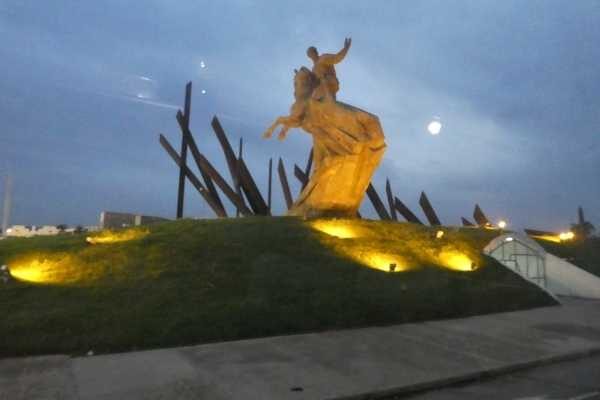
Plaza de Marte, Santiago de Cuba
This area, the symbolic center of Santiago de Cubas was previously used as a military training camp and was also a meeting place during the Revolution. There’s a column in the center of the park, topped with a “Phrygian Cap” – also known as a liberty cap (more here ) – the type of hat associated generally with revolutionaries worldwide. It’s a great people-watching square now, but you’ll also see sculptures of the heroes of the city – Marti and Cienfuegos.
There are a variety of restaurants around the square for a late lunch. Or you can head to St Pauli Restaurant and Bar on José Antonio Saco, Santiago de Cuba, Cuba.
We recommend a chill-out for the rest of the afternoon. If you like craft beers, then head down to the Cerverceria Puerto del Rey on the waterfront. It’s a chilled-out spot and they do some great craft beers and (sometimes) food.
For your evening in Santiago de Cuba, grab some dinner, and then don’t miss the Casa de la Trova.
Casa de la Trova, Santiago de Cuba
Calle Heredia right next to the Cathedral of Santiago de Cuba has been famous for more than 50 years for being the home of the Casa de La Trova in Santiago. Some of Cuba’s best-known musicians started their careers here and you’ll see a host of photos on the wall.
Revolutionary Cuba day 4 of 7 day Cuba Itinerary: Santiago de Cuba + Bus to Santa Clara
Today you have two stops in Santiago de Cuba, and then a bus in the evening to Santa Clara. I’d recommend heading first to the Santa Ifigenia Cemetery.
Visit the “Cementario Santa Ifigenia” in Santiago de Cuba
This famous cemetery in Santiago is the resting place of Jose Marti, the Cuban patriot who played a pivotal role in Cuba’s War of Independence from Spain. A military escort protects the tomb 24/7, replacing the officer on duty every half hour. The changing of guards is a lovely ceremony to watch and when you come to this cemetery you should make your way here to see the ceremony.
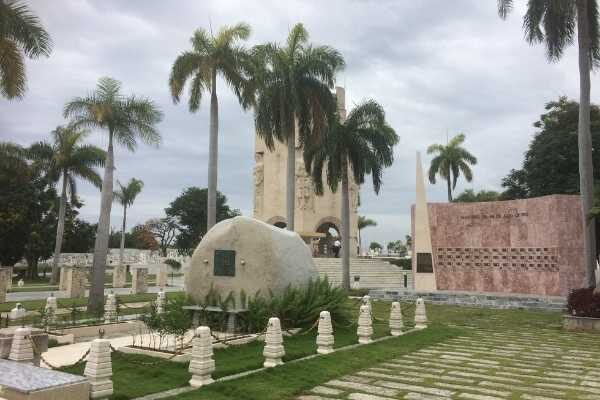
The other key locations to head to in the cemetery here in Santiago de Cuba are
- Mariana Grajales: mother of Antonio Maceo, a Cuban War of Independence, who fought with his brothers to free Cuban from Spanish influence. Such was the support that Grajales had for the revolution, that when she heard that two of her sons had died fighting the Spanish, she answered that she still had more sons to give for the revolution.
- Carlos Manuel de Cespedes: First President of Cuba in 1868. He was previously a plantation owner who freed his slaves and made the declaration of Cuban independence in 1868, starting the 10 years war.
- Tomas Estrada Palma : President of Cuba from May 1902 until September 1906 as well as the president of the Cuban Republican in Arms during the 10 years war.
- Fidel Castro: Revolutionary, politician, leader, dictator. Castro was the leader of Cuba from 1959 to 2008. He was prime minister from 1959 to 1976 and president of Cuba from 1976 to 2008.
As you enter the cemetery there’s a map displaying the location of the tombs of these key figures (there’s a photo of it below too).
- Cementario Santa Ifigenia Address: Av Crombet
- Opening Hours of Cementario Santa Ifigenia: 0800 – 1800
- Entrance Price of Cementario Santa Ifigenia: US$3
Museo Lucha Clandestino, Santiago de Cuba
The Museo Lucha Clandestino, or the Clandestine Fight Museum is located in the Loma del Intendente Hill. This pretty building was previously a police station that was attacked by the revolutionaries’ 26th July Movement in 1956 to distract their attention from the landing of Castro and his soldiers in Granma.
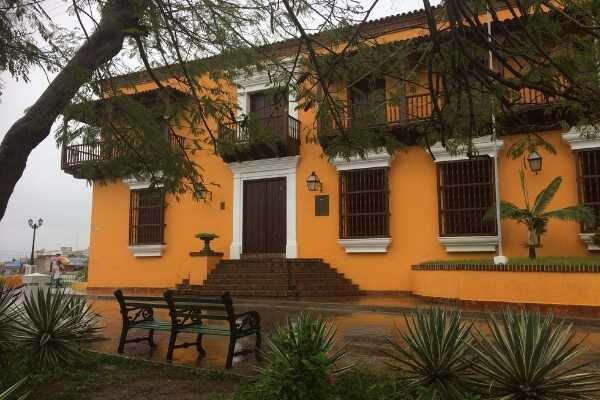
There are four rooms in this sleepy little museum (which closes if it rains) and they contain items related to the Cuban Revolution and the role that Santiago de Cuba played in it. You’ll specifically find the stories of Frank Pais and Celia Sanchez.
- Museo Lucha Clandestino Address: Calle General Jesús Rabí, 1. El Tívoli. Santiago de Cuba.
- Opening Hours of Museo Lucha Clandestino: From Tuesday to Saturday 9 am – 5 pm
- Entrance Price of Museo Lucha Clandestino: US$1
Plaque to Frank Pais in Callejón del Muro, Santiago de Cuba
Frank Pais was a Santiago de Cuba-born Cuban revolutionary leader during the Batista dictatorship. He is best remembered as being the leader of the 1956 Santiago uprising that coincided with the landing of Fidel Castro on 2 December on the boat Granma. (You saw the Granma in the Museum of the Revolution in Havana). Pais was a guerrilla fighter and member of Acción Nacional Revolucionaria which merged with Castro’s 26th July Movement. While Pais’ uprising was quelled, he did escape capture and survived for a year before being betrayed. He was taken away along with Raúl Pujol by police officers, who then shot them in the back of the head in Callejon del Muro on 30 July 1957. His role in leading the Santiago de Cuba guerrillas was then taken over by Ernesto “Che” Guevara.
There is a plaque to Pais in the street where he was shot. He had 36 gunshot wounds and was 22 years old.
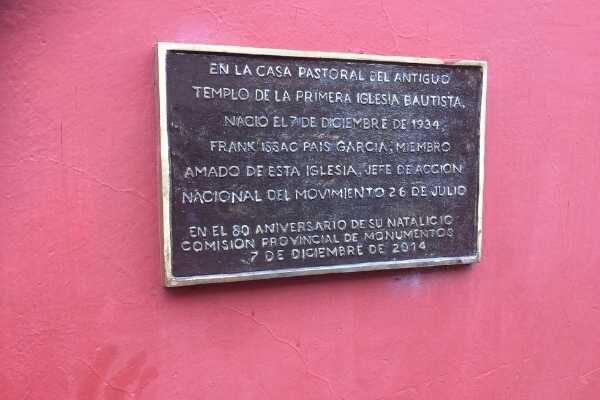
This is a whistlestop tour of Santiago de Cuba, to visit the primary sites related to the Cuban Revolution. If you want to extend your stay, then take a look at some of th e top things to do in Santiago de Cuba here.
Take the Viazul Bus from Santiago de Cuba to Santa Clara
At the end of day 4, take the Viazul bus at 20:25 to Santa Clara. Note that you will need to check-in at least an hour before the bus departs, so have an early dinner. The bus arrives in Santa Clara at 08:20. Two other buses leave Santiago de Cuba for Santa Clara, so you can alter this itinerary to take account of that.
The bus costs 40 EUROS and you can book your tickets online with Viazul. Make sure you read our guide to the Viazul Bus carefully, as you’ll need to check-in personally at the Viazul Bus station at least an hour before your scheduled departure.
I’ve based this itinerary on you taking the 20:25 bus, as it arrives early enough in Santa Clara to see the revolutionary sites, but not so early that you’ll be there in the dark! You’ll need to alter it appropriately if you decide to take a bus at a different time.
Santiago de Cuba Santa Clara
15:40 04:55
20:25 08:20
22:00 08:55
Revolutionary Cuba Day 5 of 7 day Cuba Itinerary: Santa Clara + Transfer to Playa Giron
Today you’re going to explore Santa Clara, most famous for its connections with Che Guevara and trains. And at the end of the day, you’ll be taking a colectivo, or booking a transfer from here to Playa Giron. There are no Viazul buses that run from Santa Clara to Playa Giron. The trip is about 70 kilometers (44 miles) and should take around 90-100 minutes.
The best place to pick up a colectivo is at the Viazul Bus station, so I advise leaving your bags there. You’ll need to pay a small fee. You may also be able to pick up a taxi or colectivo in the center of Santa Clara, but the sites that you want to see are a little dispersed, so I recommend the bags stay at the bus station.
The walking route between the sites in Santa Clara – from the bus station and back to the bus station is about 5.5 miles (9km). It is an easy flat route. But if you don’t want to walk, then I recommend negotiating with a colectivo driver to take you on the route, wait for you and then take you to Playa Giron at the end of the day.
In Santa Clara, you’re going to see
- A Free Walking Tour of Santa Clara
- The Tren Blindado
- The Che Guevara Mausoleum
First, though, you’ll want some breakfast. You’ll have the most choice by heading towards your first location, the Tren Blindado. You’ll find cafes along Indepencia or Marti on the way there. It’s a 30-minute walk to the Tren Blindado and you’ll find the first places to eat after about 15 minutes.
Take a free Santa Clara Walking Tour
Now, join a FREE Walking tour of Santa Clara which – lasting for 2.5 hours will take you to the Armored Train Monument AND the Che Guevara Mausoleum. It’s a GREAT way to see the city and understand things from a Cuban perspective. This is a free walking tour. It starts at 9:30 am and finishes at noon. You tip the guide in lieu of payment. And while, yes, it is free, you do need to reserve your place – do that here.
Visit the Armored Train Monument (Monumento a la Toma del Tren Blindado)
The monument of the Armoured Train in Santa Clara – Toma del Tren Blindado Monument – commemorates an event in the Battle of Santa Clara in December 1958, where revolutionaries led by Ernesto Che Guevara used a bulldozer and homemade Molotov cocktails to derail an armored train. Its success led to a decisive victory for the revolutionaries, and the city was captured within 12 hours, leading to the end of the Batista dictatorship.

- Toma del Tren Blindado Address: Carretera a Camajuaní entre Puente la Cruz y línea del ferrocarril, Santa Clara, Cuba.
- Opening Hours of Toma del Tren Blindado: Mondays through Saturdays from 8:30 am to 5:30 pm.
- Entrance Price of Toma del Tren Blindado: US$1
Visit the Che Guevara Mausoleum
Santa Clara is known as “Che’s City.” Walking along the streets for any period of time will tell you this. You’ll find statues and murals devoted to Che Guevara, the Argentine rebel who rose to prominence as one of the leaders of the 1950s Cuban revolution. You’ll find this quite close to the Viazul Bus station in Santa Clara, some two kilometers west of Vidal Park, Santa Clara in Plaza Che Guevara”. You can easily walk here from downtown in around 30 minutes.

The mausoleum contains the remains of Ernesto “Che” Guevara and twenty-nine of his fellow combatants who were killed in 1967 the attempts Guevara made to instigate an armed uprising in Bolivia. There’s more about what to see at the mausoleum and museum in our guide to Santa Clara here . Santa Clara was chosen as his final resting place as a remembrance of his troops taking the city during the Battle of Santa Clara on 31 December 1958. This victory led to the then Cuban dictator, Fulgencio Batista escaping to exile.
The museum and memorial dedicated to Che Guevara are both free. There is a luggage check area because no bags or cameras are permitted inside.
- Che Guevara Mausoleum and Museum Address: Avenida de los Desfiles, Santa Clara, Cuba.
- Opening Hours of Che Guevara Mausoleum and Museum: Tuesdays through Sundays from 9:00 am to 5:00 pm.
- Entrance Price of Che Guevara Mausoleum and Museum: FREE
Staying longer in Santa Clara
If you decide to stay in Santa Clara overnight, then I recommend the following places for accommodation.
Hostal Vista Park : A great central location, with a huge terrace, this is the perfect place to stay longer in Santa Clara. Miguel provides internet access and can provide breakfast, lunch, and dinner as well as local knowledge. All rooms are ensuite and there is A/C plus a laundry service. Check availability here.
Hostal Caridad is in a quiet location in front of a beautiful near the Catholic Church. All rooms here have private bathrooms, A/C, and TVs/ There’s a terrace and a lovely garden with chairs and tables for guests. You’re right in the center of things and the Hostal Caridad gets fabulous reviews and has been hosting visitors for 20 years now! Check room rates here.
And, for more things to see in Santa Clara, our guide is here .
As you’re spending the full day in Santa Clara you’ll want to prebook your accommodation in Playa Giron. Giron is a small place, with some good accommodation. There are good casa particulars here and also the Cubanacan Hotel at the beach. (this is also where the dive center is based, so it’s included as a recommendation of where to stay).
Where to stay in Playa Giron on your Revolutionary 7 day Cuban Itinerary
Edith’s Homestay: We first stayed with Edith in 2017, she and her cute dog and her husband are fabulous. They spoke no English, we struggled with the rapid-fire Cuban Spanish, but we had an amazing time. Breakfasts are fabulous. Dinner was amazing (ask for the soup!) and she arranged all our diving for us. Rooms have A/C, there’s a garden and I can’t recommend it highly enough! Check rates and book here.
Hotel Cubanacan, Playa Giron : Oceanfront Hotel with A/C rooms with ensuite bathrooms. Double rooms are available as are oceanfront bungalows. You can check rates and booking details here.
Planning your next day in Playa Giron
If you’d like to dive or snorkel in the Bay of Pigs, then the best way to arrange this is to contact and ask your casa particular owner to book you in. Read our guide to diving the Bay of Pigs here . The dive bus does a circuit of Playa Giron each morning and if you’re booked in you’ll be picked up tomorrow morning! You don’t need to pay anything in advance, they’ll take cash on the day. If you go to the museum in Giron in the morning of your stay then you won’t be able to dive. You can snorkel from the shore at the beach by the Cubanacan Hotel and further along the coast at Playa Coco, but it ain’t great snorkeling there.
Dinner in Playa Giron
Depending on the time that you arrive in Playa Giron you might also want to ask your casa owner to provide you with dinner. You’ll need to ask this in advance so that they can make arrangements. Otherwise, Restaurante El Cocodril usually has a good selection, or for a snack Café del Sur, near the Viazul Bus stop (and opposite the Museo Giron (Bay of Pigs Museum) usually makes sandwiches.
Revolutionary Cuba Day 6 of 7 day Cuba Itinerary: The Bay of Pigs
There are two key things to do here in the famous Bay of Pigs. The first is to dive or snorkel the area and the second is to visit the museum of the Bay of Pigs invasion.
Snorkel or Dive the Bay of Pigs
Dive trips go in the morning. You can read about diving the Bay of Pigs in our guide here . But suffice it to say, that you don’t need to plan anything in advance. If you’ve not dived before you can do a trial dive, separate from the main group. Equipment is all provided for beginners and more experienced divers. If you don’t want to dive, then there are snorkeling options too. The diving that’s arranged here in Playa Giron is primarily shore-based, so after you’ve been kitted out and paid, you’ll jump on the dive bus and be driven to the dive site. Easy! At the end of the dive, you’ll be dropped off at your casa particular.

After you’ve cleaned up following your dive, you’ll want to grab some lunch and then head to the Museum of the Bay of Pigs.
Museo Giron
The museum here is dedicated to the failed American-led invasion of Cuba. It’s small, just a few rooms, but it’s fascinating. The invasion, in April, planned by the CIA, involved around 1400 exiled Cubans who landed in Cuba, here in the Bay of Pigs, with the intention of overthrowing Fidel Castro. It failed. Around 100 of the invaders were killed and the remainder were taken prisoner. The museum documents the events in great detail. There’s a short film, personal effects, a (rather good) mural and there are even aircraft and tanks involved in the battle outside.
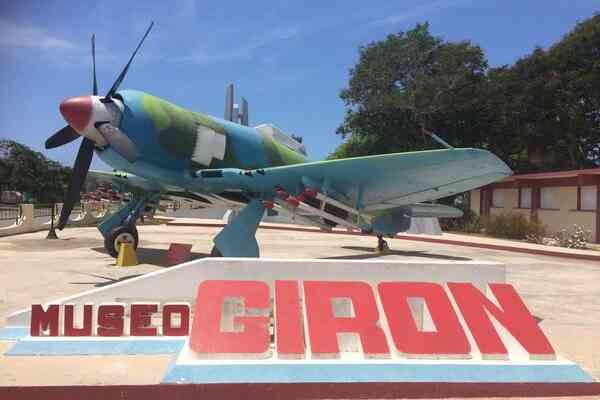
There’s virtually no English in this Museum. There are sometimes guides who can speak a little English. There’s lots of Spanish signage, and the visit to the museum starts with a video that is a useful introduction.
- Playa Giron Museum Opening Time: From 8 am. to 5 p.m.
- Address of Playa Giron Museum: Villa Playa Girón, Matanzas, Cuba. (opposite the Café del Sur/Viazul Bus stop)
- Entrance Fee for Museum of the City of Havana: Varies – from US$2 +US$1 to take photos
Revolutionary Cuba Day 7 of 7 day Cuba Itinerary: Return to Havana
It’s your last day on the Cuban Revolution itinerary and it’s time to head back to Havana. Carefully note the departure and arrival times of the Viazul Bus and consider that you will also need time to get from the Viazul Bus station to the airport if you are flying home on day 7. Depending on traffic it is likely to take around 30 minutes to go from the Viazul Bus station to Jose Marti International Airport in Havana.
The bus from Playa Giron to Havana leaves at 09:15 and it arrives in Havana at 13:40. Note that this bus goes to Havana Airport BEFORE it goes to Havana. If you want to spend time in Havana before heading to the airport, then there is just one bus from Havana later in evening that goes to the airport. Alternatively, you’ll want to arrange a transfer from the Viazul Bus station to the airport or take a taxi or colectivo, which will be plentiful at the Viazul Bus Station. You will need cash though, as none of the taxis or colectivos accept cards.
ESSENTIAL TIPS FOR EXPLORING CUBA INDEPENDENTLY
These are the resources and booking sites that we use when traveling to Cuba.
Get a Cuba Travel and Medical Insurance Quote from Visitors Coverage here – Alternatively, Civitatis Insurance is a great option for the required insurance for Cuba. You will need a Cuba Tourist Card to enter Cuba – some airlines include these, if yours doesn’t, buy one from EasyTouristCard – now valid for 90 days. Book your Viazul Bus tickets here Pre-book and prepay shared & private shuttles here Book the best FREE Walking Tours in Cuba Reserve attractions, day trips, and activities in Cuba here Get online in Cuba EASILY with a Cuba eSIM – read about Cuba ESIMS here , or buy a Cuba eSIM here .
Download and install a VPN BEFORE you travel to Cuba > discount coupon here Book Accommodation in Cuba’s Casa Particular here
Final Words on Exploring Revolutionary Cuba
Whew. This is a whistlestop tour of the main Revolutionary attractions of Cuba. We know it’s a tough schedule, but it gets you to the main places AND it used the Viazul buses. Of course, there are other revolutionary sites that you can visit in Cuba, like Fidel Castro’s birthplace, his headquarters in the Sierra Maestra, and Bayamo to mention just a few. However, to visit those locations you’ll need to arrange private transport or rent a car. And so we hope that you’ve found this itinerary of Cuba using the Viazul bus useful and that it helps you to plan your trip to Cuba! We’d love to get your feedback and how you’ll adapt this Cuban itinerary to fit your requirements!
Cuba’s Best is a participant in the Amazon Services LLC Associates Program, an affiliate advertising program designed to provide a means for sites to earn advertising fees by advertising and linking to amazon.com, amazon.co.uk, amazon.ca. Amazon and the Amazon logo are trademarks of Amazon.com, Inc. or its affiliates .
Sarah Carter
Leave a comment cancel reply.
Your email address will not be published. Required fields are marked *
Save my name, email, and website in this browser for the next time I comment.
One thought on “ 7 day Cuba Itinerary [Revolutionary Cuba] ”
- 1 Comment
I am interested in booking a vintage car tour to vinales but would like to stay overnight there and return the next day ( not same day as described ) in a vintage car . Is that possible ? Gracias
Privacy Overview
Tony Perrottet's Cuba
A Smithsonian magazine special report
How Cuba Remembers Its Revolutionary Past and Present
On the 60th anniversary of Fidel Castro’s secret landing on Cuba’s southern shore, our man in Havana journeys into the island’s rebel heart
Tony Perrottet; Photographs by João Pina
/https://tf-cmsv2-smithsonianmag-media.s3.amazonaws.com/filer/4b/0c/4b0c70d1-c8a8-4bec-b95d-b84b996e756d/oct2016_f02_cuba.jpg)
It’s not hard to see why Fidel Castro’s guerrilla headquarters during the Cuban revolutionary war was never found by the army. Even today, getting to the command post feels like a covert mission. Known as Comandancia La Plata, the remote hide-out was built in the spring of 1958 in the succulent rainforest of the Sierra Maestra at Cuba’s eastern tip, and it still lies at the end of steep, treacherous, unpaved roads. There are no road signs in the Sierra, so photographer João Pina and I had to stop our vehicle and ask for directions from passing campesinos on horseback while zigzagging between enormous potholes and wandering livestock. In the hamlet of Santo Domingo, we filled out paperwork in quadruplicate to secure access permits, before an official government guide ushered us into a creaky state-owned four-wheel-drive vehicle. This proceeded to wheeze its way up into one of the Caribbean’s last wilderness areas, with breathtaking views of rugged green peaks at every turn.
The guide, Omar Pérez, then directed us toward a steep hiking trail, which ascends for a mile into the forest. Rains had turned stretches into muddy streams, and the near-100 percent humidity had us soaked with sweat after only a few steps. A spry local farmer, Pérez pushed us along with mock-military exhortations of Vámanos , muchachos! By the time I spotted the first shack—the dirt-floored field hospital set up by the young medical graduate Ernesto “Che” Guevara—I looked like a half-wild guerrilla myself.
In any other country, the Comandancia would make an excellent eco-lodge, but in Cuba it remains one of the revolution’s most intimate historical shrines. The base was first carved out in April 1958 and continued to be Fidel’s main command post until December 1958, as the guerrillas gained one unexpected victory after the next and began to seize the rest of the island. Its 16 thatch-roofed huts were home to some 200 rebel soldiers and had the ambience of a self-contained—and strikingly beautiful—jungle republic.
The structures are all original, Pérez insisted, and are lovingly labeled with wooden signs. Che’s hospital was used to treat wounded guerrillas and enemy soldiers, and ill local peasant supporters. (“Che performed a lot of dentistry here,” Pérez said. “Not very well.”) Paths lead to the press office, where the rebels’ newspaper, El Cubano Libre , was produced mostly by hand. At the summit, Radio Rebelde was transmitted around Cuba using an antenna that could be raised and lowered unseen.
The main attraction is La Casa de Fidel—Castro’s cabin. Perched on a ledge above a burbling stream, with large windows propped open by poles to let in a cooling breeze, it’s a refuge that would suit a Cuban John Muir. The spacious two-room hut was designed by his resourceful secretary, rural organizer and lover, Celia Sánchez, and the interior still looks like the revolutionary power couple has just popped out for a cigar. There is a pleasant kitchen table and gasoline-fueled refrigerator used to store medicines, complete with bullet holes from when it was shot at while being transported on the back of a mule. The bedroom still has the couple’s armchairs, and an ample double bed with the original mattress now covered in plastic. Raised in a well-to-do family of landowners, Fidel enjoyed his creature comforts, but Celia also thought it important for visitors to see the rebel leader well established and comfortable—acting, in fact, as if the war were already won and he was president of Cuba. She would serve guests fine cognac, cigars and potent local coffee even as enemy airplanes strafed randomly overhead. Celia even managed to get a cake to the hut packed in dry ice via mule train for Fidel’s 32nd birthday.
The interior of the cabin is off-limits to visitors, but when Pérez meandered off, I climbed up the ladder and slipped inside. At one point, I lay down on the bed, gazing up at a window filled with jungle foliage and mariposa flowers like a lush Rousseau painting. It was the ideal place to channel 1958—a time when the revolution was still bathed in romance. “The Cuban Revolution was a dream revolution,” says Nancy Stout, author of One Day in December: Celia Sánchez and the Cuban Revolution . “It didn’t take too long. It worked. And it was filled with these extraordinary, larger-than-life characters.” As it was unfolding, the outside world was fascinated by the spectacle of a ragtag bunch of self-taught guerrillas, many of them barely out of college, who managed to overthrow one of Latin America’s most brutal dictatorships. “It was,” says Stout, “like an operetta.”
But even the hallowed Comandancia cannot escape Cuba’s modern realities, as the Socialist system is slowly being dismantled. As we hiked back down the mountain, Pérez explained that he had landed his prized job as a guide a decade ago, in part because his grandfather had helped the rebels in the 1950s. Although he has a university degree in agricultural engineering, he said he makes far more money in tourism than he could on a state-run farm. “My salary is 14 CUC [$16] a month, but I get by on propinitas , little tips,” he added pointedly. Pérez also hoped the opening of the economy since 2011 by Raúl Castro—Fidel’s younger brother, a guerrilla who also spent time at the Comandancia—would speed up. “Cuba has to change!” he said. “There’s no other way for us to move forward.”
It was a startling admission at such a hallowed revolutionary spot. Ten years ago, he might have been fired for such a declaration.
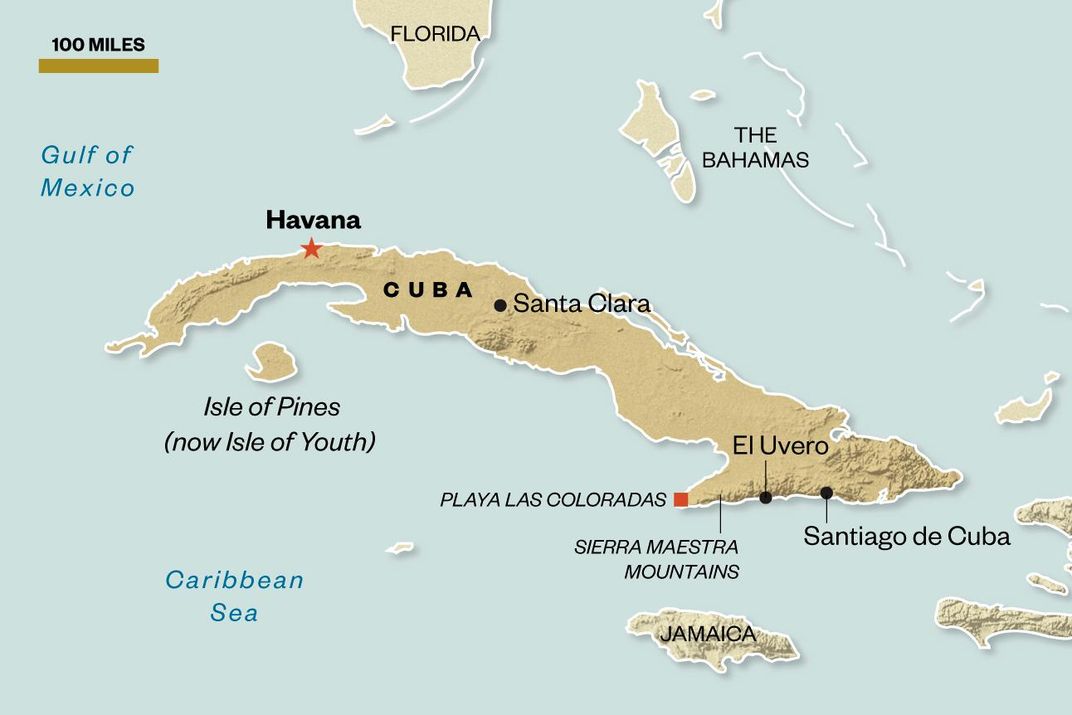
Cubans love anniversaries, and this December 2 marks one of its greatest milestones: the 60th anniversary of the secret landing of Granma , the ramshackle boat that brought Fidel, Che, Raúl and 79 other barely trained guerrillas to start the revolution in 1956. Che later described it as “less a landing than a shipwreck,” and only a quarter of the men made it to the Sierra Maestra—but it began the campaign that would, in a little over two years, bring down the Cuban government and reshape world politics. To me, the coming anniversary was an ideal excuse for a road trip to untangle a saga whose details I, like many who live in the United States, know only vaguely. Within Cuba, the revolutionary war is very much alive: Almost everywhere the guerrillas went now has a lavish memorial or a quasi-religious museum featuring artifacts like Che’s beret, Fidel’s tommy gun, or homemade Molotov cocktails. It’s still possible to meet with people who lived through the battles, and even the younger generation likes to remain on a first-name basis with the heroes. Cubans remain extremely proud of the revolution’s self-sacrifice and against-all-odds victories. Recalling that moment of hope can be as startling as seeing photographs of the young Fidel without a beard.
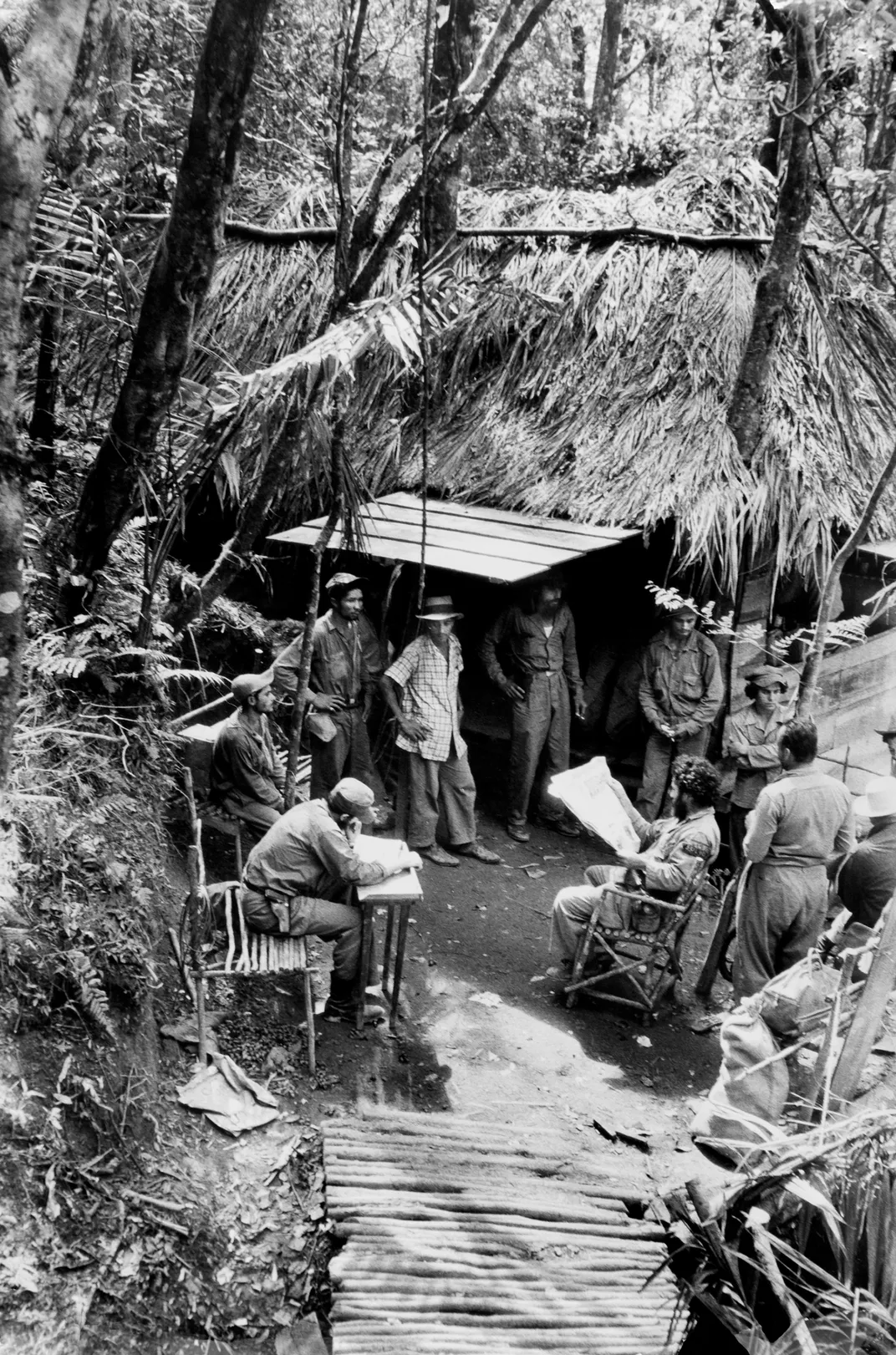
“The war was both a long time ago and not so long ago,” says Jon Lee Anderson, author of Che Guevara: A Revolutionary Life . “For Americans, the best way to understand what the era was like is to visit Cuba itself. You see the world as it was 60 years ago, without expressways or fast-food stores or strip malls. Today, the U.S. has been tamed. It’s a suburban landscape. But in the 1950s, there were no cellphones, no internet, there weren’t even many telephones. Everything moved in a different time frame.”
Following the path of the revolutionary war also leads to corners of Cuba that few travelers reach. While most outsiders are fascinated by Havana, with its rococo mansions and retro-chic hotels funded by the American mob, the cradle of revolt was at the opposite end of the long, slender island, in the wild, thinly populated Oriente (“East”).
Cuba was the last Spanish possession in the Americas, and two vicious 19th-century wars of independence began there. Victory in the second was plucked from Cuban hands by the intervention of the United States in the Spanish-American War in 1898. The humiliating Platt Amendment, passed by Congress in 1901, made it legal for the U.S. to intervene in Cuban politics, a safeguard that protected a flood of Yanqui investment. Although President Franklin D. Roosevelt repealed the law in 1934, the island remained a virtual American colony, with everything from power plants to sugar plantations in U.S. hands. This troubled situation took a dire turn in 1952, when a strongman with matinée idol looks named Fulgencio Batista seized power in a coup. Although Cuba remained one of the wealthiest nations in Latin America, Batista’s rule was marked by blatant corruption and a savage level of political repression.
“If you really want to understand the Cuban Revolution, you should start in Santiago cemetery,” Nancy Stout advised me before I flew to the city. Santiago de Cuba, whose palm-fringed plazas and colonial cathedrals now bask in splendid decay, is the country’s second-largest city. No sooner had I arrived than I hopped on the back of a motorbike taxi and gritting my teeth in the unnerving traffic, sped to the ancient necropolis of Santa Ifigenia. The memorial to “Those Fallen in the Insurgency” is a simple wall with dozens of bronze plaques, each one adorned with a fresh red rose, naming those killed by Batista’s security forces, usually after sickening torture. Many mutilated bodies were found strung from trees in city parks or dumped in gutters. Some victims were as young as 14 and 15. “The police officer in charge of Santiago was, literally, a psychopath,” Stout said. “Some of Batista’s generals had only fifth-grade educations. The ‘leftist agitators’ they were executing were often just kids.” On one occasion, the mothers of Santiago staged a protest march carrying placards that said: Stop the Murder of Our Sons. “A lot of everyday Cubans—students, bricklayers, teachers—were simply fed up.”
One of those was the young law graduate Fidel Castro Ruiz. Born into a wealthy landowning family some 60 miles north of Santiago, Fidel was from his teens known for a rebellious nature, hypnotic charisma and staggering self-confidence. At university in Havana he became involved in radical student politics and at age 24 planned to run as a progressive candidate in the 1952 election, before Batista canceled it. Photographs of him from the time show a tall, well-fed youth, often in a snappy suit, V-neck sweater and tie, and sporting a pencil mustache. With his chances of working within the system gone, Fidel and fellow activists in 1953 decided to take direct action.
The story would seem straight out of Woody Allen’s Bananas if the consequences had not been so tragic. With about 160 inexperienced men (and two women) disguised as soldiers, Fidel planned to storm government sites including a Santiago barracks called La Moncada, where he would surprise the 1,000 or so troops—who were hopefully sleeping off hangovers due to the previous evening’s carnival celebrations— and escape with a cache of arms. This resounding victory, Fidel hoped, would provoke Cubans to rise up against Batista and restore constitutional democracy. From the start, it was a fiasco. As his convoy of 15 cars approached the Moncada before dawn on July 26, it ran into two patrolmen. Fidel stopped his car and leapt out to deal with them, but this confused the other rebels, who mistook a military hospital for the Moncada and began firing wildly. By the time they had regrouped, soldiers were everywhere. Fidel ordered a retreat, but most of his men surrendered.
The reaction of the army shocked Cubans. Five of the attackers had been killed in the shootout, but 56 prisoners were summarily executed and their bodies scattered in the Moncada’s hallways to make it look as if they had been killed in battle. Many, in fact, had been gruesomely tortured. The eyes of one leader, Abel Santamaría, were gouged out and presented to his sister in an attempt to make her reveal their hide-out. Fidel was captured in the countryside soon after, by a by-the-books officer who refused to hand his prisoner over to superiors who wanted to dispense summary justice. It was the first of countless lucky breaks in the story of the revolution. Although Fidel and his men were sentenced to 15 years in prison, the “26th of July Movement” was born.
Fidel spent two years incarcerated on the Isle of Pines, Cuba’s answer to Devil’s Island, reading Marx and becoming ever more radical. Nothing short of true revolution would change Cuba, he concluded, although the chances of his becoming personally involved seemed remote. Then, in 1955, Batista succumbed to popular opinion and included Fidel and his compañeros in an amnesty of political prisoners. It was a moment of over-confidence that the dictator would soon regret.
From exile in Mexico City, Fidel concocted a plan that seemed even more harebrained than the Moncada attack: to return to Cuba in a secret amphibious landing and begin an insurgency in the mountains. He bought a secondhand boat, the Granma , from an American expat and gathered a band of fellow firebrands, among them Ernesto Guevara. A quiet Argentine, quickly nicknamed “Che” (an Argentine term of affection), Guevara had haunting good looks and a steely willpower born of years battling asthma. It was an attraction of opposites with the strapping, extroverted Fidel that would turn into one of history’s great revolutionary partnerships.
Travel in Cuba is never straightforward. Airport lines can take three hours, hotels demand mysterious printed “vouchers” and the few eccentric rental car companies are booked three months in advance. The Granma landing site and Sierra base are unusually far-flung, so an enterprising Cuban friend of a friend offered to drive us there in his own car for a tidy sum in U.S. dollars. But just before flying to Santiago, I received a forlorn message: “Bad news, compañeros, very bad news...” The driver had been given a parking fine in Havana and lost his license. It was time to scramble for Plan B. We soon had a dozen local insiders scouring Cuba for any possible vehicle, with emails flying to expat acquaintances as far away as Toronto and Brussels. At the 11th hour, I received a message from a certain Esther Heinekamp of Cuba Travel Network, an educational agency based in Europe. She had tracked down a rental car in Santiago—“the last rental in the entire country!” I’d like to say it was a 1955 Chevrolet, but it turned out to be a silver MG, circa 2013. Still, on a steamy afternoon I drove us south of Santiago toward the famous Granma landing site, along one of the most spectacular and worst-maintained roads in the Western Hemisphere. On this wild shore, the ocean hits the coast with terrifying force. Much of the route has been wrecked by hurricanes and landslides, becoming a bare expanse of slippery rocks that could only be traversed at five miles an hour.
The Granma landing site, still pristine, is part of a national park, and the lone guide on duty, a jovial woman named Yadi León, seemed astonished to see us. We were the only visitors that day, she admitted, directing us toward a sun-blasted concrete walkway that had been laid across the mangroves. As dozens of tiny black crabs scuttled underfoot, León recounted the legendary story that every Cuban schoolchild knows by heart. The Granma had turned out to be barely seaworthy, more suited for a pleasure cruise than a military operation, and was seriously overloaded. “Fidel had calculated the journey from Mexico to Cuba would take five days,” León marveled. “But with over 80 men crowded onboard, it took seven.” As soon as they hit open ocean, half the passengers became seasick. Local supporters who had planned to meet the boat when it landed gave up when it failed to appear on time. As government air patrols threatened them on December 2, Fidel ordered the pilot to head to shore before sunrise, unaware that he had chosen the most inhospitable spot on the entire Cuban coastline.
At around 5:40 a.m., the Granma hit a sandbank, and the 82 men groggily lurched into the hostile swamp. The guerrillas were basically city slickers, and few had even seen mangroves. They sunk waist-deep into mud and struggled over abrasive roots. When they finally staggered onto dry land, Fidel burst into a farmer’s hut and grandly declared: “Have no fear, I am Fidel Castro and we have come to liberate the Cuban people!” The baffled family gave the exhausted and half-starved men pork and fried bananas. But the army had already gotten wind of their arrival, and three days later, on December 5, the rebels were caught in a surprise attack as they rested by a sugar-cane field. The official figure is that, of the 82 guerrillas, 21 were killed (2 in combat, 19 executed), 21 were taken prisoner and 19 gave up the fight. The 21 survivors were lost in the Sierra. Soldiers were swarming. As Che laconically recalled: “The situation was not good.”
Today, our stroll through the mangroves was decidedly less arduous, although the 1,300-meter path gives a vivid idea of the claustrophobia of the alien landscape. It was a relief when the horizon opened up to the sparkling Caribbean. A concrete jetty was being installed on the landing spot for the upcoming 60th anniversary celebrations, when a replica of the Granma will arrive for the faithful to admire. The gala on December 2 will be a more extravagant version of the fiesta that has been held there every year since the 1970s, León explained, complete with cultural activities, anthems and “acts of political solidarity.” The highlight is when 82 young men jump out of a boat and re-enact the rebels’ arrival. “But we don’t force them to wade through the swamp,” she added.
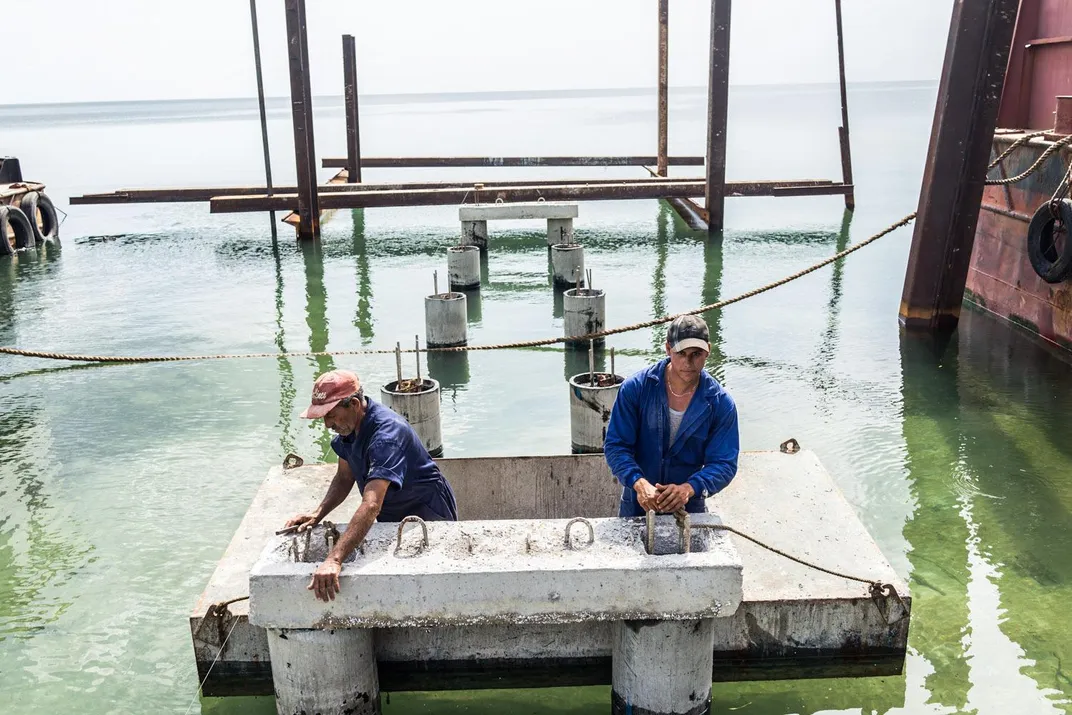
A few days after the Granma debacle, the handful of survivors were reunited in the mountains with the aid of campesinos. One of the most beloved anecdotes of the war recounts the moment Fidel met up with his brother Raúl. Fidel asked how many guns he had saved. “Five,” Raúl answered. Fidel said he had two, then declared: “Now we’ve won the war!” He wasn’t joking. His fantastical confidence was unbowed.
As they settled into the Sierra Maestra, the urban intellectuals quickly realized they were now dependent on the campesinos for their very survival. Luckily, there was a built-in reservoir of support. Many in the Sierra had been evicted from their land by the Rural Guards and were virtual refugees, squatting in dirt-floor huts and subsisting by growing coffee and marijuana. Their generations of despair had already been tapped by Celia Sánchez, a fearless young activist for the 26th of July Movement who was at the top of Batista’s most-wanted list in the Oriente. A brilliant organizer, Sánchez would soon become Fidel’s closest confidante and effective second in command. (The romance with Fidel developed slowly over the following months, says biographer Stout. “Fidel was so tall and handsome, and he had a really sweet personality.”)
Young farmhands swelled the rebel ranks as soldiers. Girls carried rebel missives folded into tiny squares and hidden (as Celia mischievously explained) “in a place where nobody can find it.” Undercover teams of mules were organized to carry supplies across the Sierra. A farmer even saved Che’s life by hiking into town for asthma medication. The campesinos also risked the savage reprisals of soldiers of the Rural Guard, who beat, raped or executed peasants they suspected of rebel sympathies.
Today, the Sierra is still a frayed cobweb of dirt roads that lead to a few official attractions—oddities like the Museum of the Heroic Campesino—but my accidental meetings are more vivid. On one occasion, after easing the car across a surging stream, I approached a lonely hut to ask for directions, and the owner, a 78-year-old gentleman named Uvaldo Peña Mas, invited me in for a cup of coffee. The interior of his shack was wallpapered with ancient photographs of family members, and he pointed to a sepia image of a poker-faced, middle-aged man—his father, he said, who had been murdered early in Batista’s rule. The father had been an organizer for the sharecroppers in the area, and one day an assassin walked up and shot him in the face. “I still remember when they brought in his body,” he said. “It was 8 in the morning. People came from all around, friends, relatives, supporters. Of course, we had to kill a pig to feed them all at the funeral.” Although he supported the revolution, he recalled that not everyone who joined Fidel was a hero. “My next-door neighbor joined the guerrillas,” Peña said wryly. “He was a womanizer, a drunk, a gambler. He ran away to join the guerrillas to get out of his debts.”
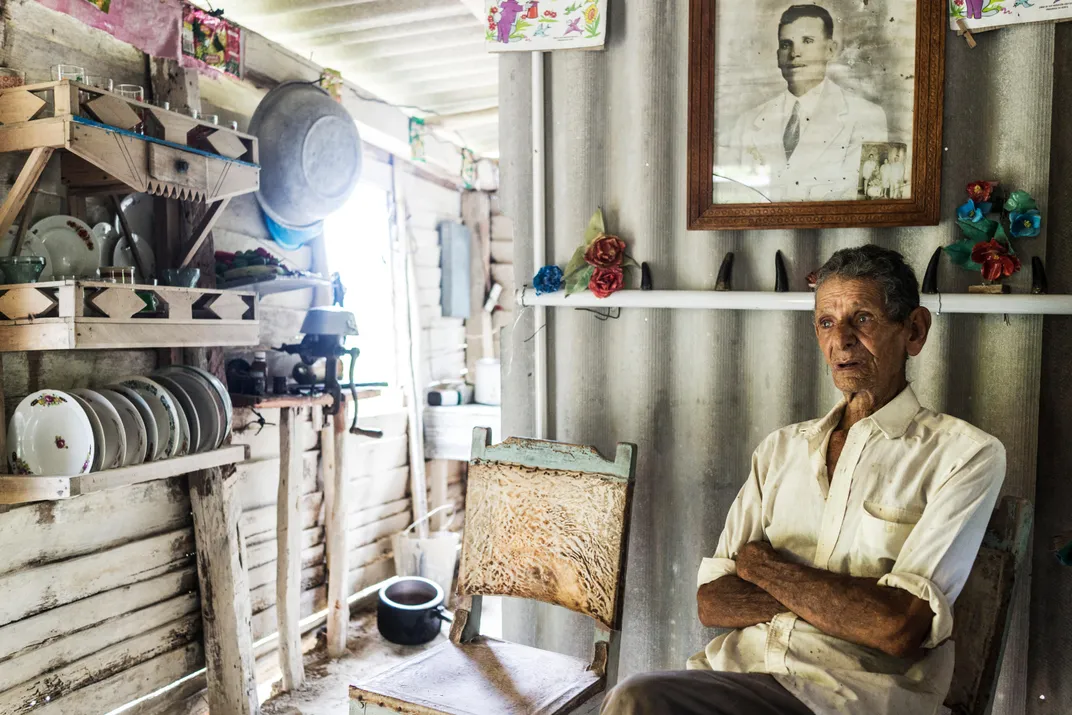
For six months, Fidel and his battered band lay low, training for combat and scoring unusual propaganda points. The first came when Batista told the press that Fidel had been killed after the landing, a claim the rebels were quickly able to disprove. (To this day, Cubans relish photos of the 1956 newspaper headline FIDEL CASTRO DEAD.) The next PR coup came in February 1957, when New York Times correspondent Herbert Matthews climbed into the Sierra for the first interview with Fidel. Matthews was star-struck, describing Fidel with enthusiasm as “quite a man—a powerful six-footer, olive-skinned, full-faced.” Castro had stage-managed the meeting carefully. To give the impression that his tiny “army” was larger than it was, he ordered soldiers to walk back and forth through the camp in different uniforms, and a breathless messenger to arrive with a missive from the “second front”—a complete fiction. The story was splashed across the front page of the Times , and a glowing TV interview with CBS followed, shot on Cuba’s highest summit, Mount Turquino, with postcard-perfect views. If he had not become a revolutionary, Fidel could have had a stellar career in advertising.
A more concrete milestone came on May 28, 1957, when the guerrillas, now numbering 80 men, attacked a military outpost in the drowsy coastal village of El Uvero. The bloody firefight was led by Che, who was showing an unexpected talent as a tactician and a reckless indifference to his own personal safety; his disciplined inner circle would soon be nicknamed “the Suicide Squad.” Today, a monument with a gilded rifle marks Fidel’s lookout above the battle site, although visitors are distracted by the coastal views that unfold like a tropical Big Sur. Elderly residents still like to recount the story of the attack in detail. “It was 5:15 in the afternoon when we heard the first gunshots,” Roberto Sánchez, who was 17 at the time, told me proudly in a break from picking mangoes. “We all thought it was the Rural Guards training. We had no idea! Then we realized it was Fidel. From that day on, we did what we could to help him.”
“This was the victory that marked our coming of age,” Che later wrote of El Uvero. “From this battle on, our morale grew tremendously.” The emboldened guerrillas began to enjoy success after success, descending on the weak points of the vastly more numerous Batista forces, then melting into the Sierra. Their strategies were often improvised. Fidel later said he fell back for ideas on Ernest Hemingway’s novel of the Spanish Civil War, For Whom the Bell Tolls , which describes behind-the-lines combat in detail.
By mid-1958, the rebels had established Comandancia La Plata and a network of other refuges, and even the self-deluded Batista could not deny that the government was losing control of the Oriente. In summer, the dictator ordered 10,000 troops into the Sierra backed with air support, but after three tortuous months, the army withdrew in frustration. When the rebels revealed how many civilians were being killed and mutilated by napalm bombing, the U.S. government stopped Cuban air force flights from refueling at the Guantánamo naval base. Congress ended U.S. arms supplies. The CIA even began feeling out contacts with Fidel.
Sensing victory, Fidel in November dispatched Che and another comandante , Camilo Cienfuegos, to seize the strategic city of Santa Clara, located in the geographical center of Cuba. The 250-mile dash was one of the most harrowing episodes of the campaign, as troops slogged through flat sugar country exposed to strafing aircraft. But by late December, Che had surrounded Santa Clara and cut the island in two. Although 3,500 well-armed government troops were defending the city against Che’s 350, the army surrendered. It was a stunning victory. The news reached Batista back in Havana early on New Year’s Eve, and the panicked president concluded that Cuba was lost. Soon after the champagne corks popped, he was escaping with his cronies on a private plane loaded with gold bullion to the Dominican Republic. He soon moved to Portugal, then under a military dictatorship, and died from a heart attack in Spain in 1973.
Despite its revolutionary credentials, Santa Clara today is one of the most decrepit provincial outposts in Cuba. The Art Deco hotel in the plaza is pockmarked with bullet holes, relics of when army snipers held out on the tenth floor, and sitting by a busy road in the middle of town are a half-dozen carriages from the Tren Blindado, an armored train loaded with weapons that Che’s men derailed on December 29. A strikingly ugly memorial has been erected by the carriages, with concrete obelisks placed at angles to evoke an explosion. Guards show off burn marks from rebel bombs on the train floors, before cheerfully trying to sell visitors black market Cohiba cigars.
As the site of his greatest victory, Santa Clara will always be associated with Che. His remains are even buried here in the country’s most grandiose memorial, complete with a statue of the hero marching toward the future like Lenin at Finland Station. Still, the story of Che’s last days is a discouraging one for budding radicals. In the mid-1960s, he tried to apply his guerrilla tactics to other impoverished corners of the world with little success. In 1967, he was captured by the Bolivian Army in the Andes and executed. After the mass grave was rediscovered in 1997, Che’s remains were interred with much fanfare in Santa Clara by an eternal flame. The mausoleum is now guarded by cadres of young military women dressed in olive-drab miniskirts and aviator sunglasses, who loll about in the heat like Che groupies. An attached museum offers some poignant exhibits from Che’s childhood in Argentina, including his leather asthma inhaler and copies of schoolbooks “read by young Ernesto.” They include Tom Sawyer , Treasure Island and—perhaps most appropriately— Don Quixote .
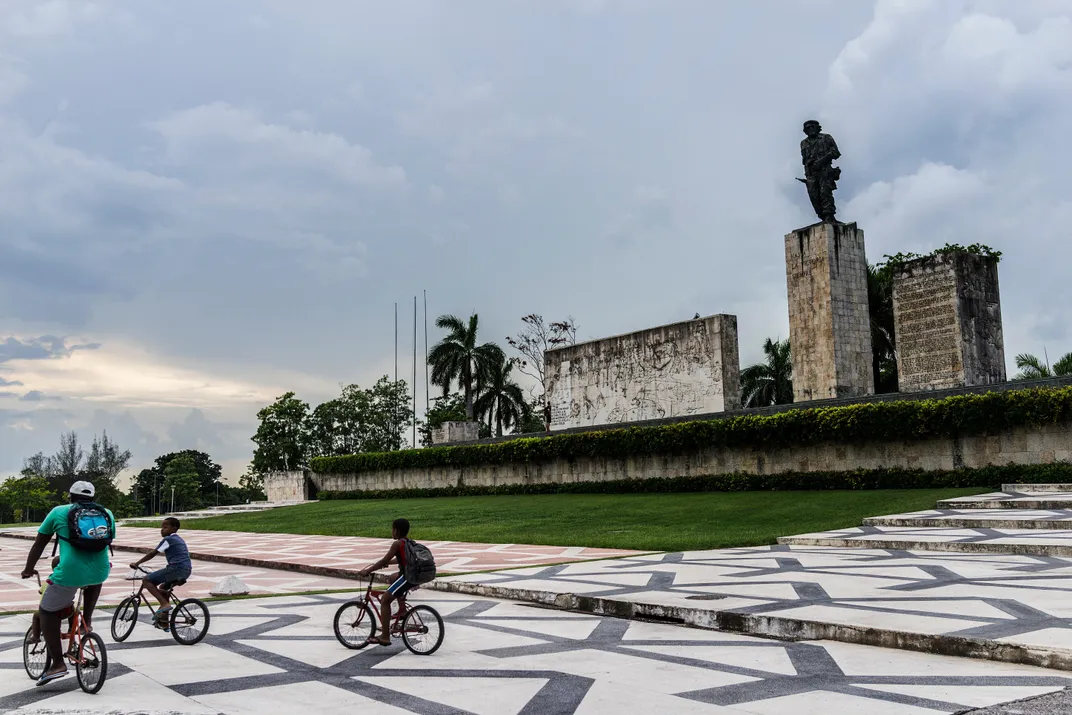
It was around 4:30 a.m. on New Year’s Day, 1959, when news filtered though Havana of Batista’s flight. What happened next is familiar—in broad brushstrokes—to anyone who has seen The Godfather Part II . To many Cubans, the capital had become a symbol of decadence, a seedy enclave of prostitution, gambling and raunchy burlesque shows for drunken foreign tourists. Lured by the louche glamour, Marlon Brando, Errol Flynn and Frank Sinatra took raucous holidays in Havana, actor George Raft became master of ceremonies at the mob-owned Capri Hotel, and Hemingway moved to a leafy mansion on the city outskirts so he could fish for marlin in the Caribbean and guzzle daiquiris in the bar El Floridita.
Batista’s departure let loose years of frustration. By dawn, crowds were taking out their anger on symbols of Batista’s rule, smashing parking meters with baseball bats and sacking several of the American casinos. Fidel ordered Che and Camilo to rush ahead to Havana to restore order and occupy the two main military barracks. The spectacle of 20,000 soldiers submitting to a few hundred rebels was “enough to make you burst out laughing,” one guerrilla, Carlos Franqui, later wrote, while the grimy Camilo met the U.S. ambassador with his boots off and feet on a table, “looking like Christ on a spree.”
Fidel traveled the length of Cuba in a weeklong “caravan of victory.” The 1,000 or so guerrillas in his column, nicknamed Los Barbudos, “the bearded ones,” were greeted as heroes at every stop. The cavalcade finally arrived in Havana on January 8, with Fidel riding a tank and chomping a cigar. “It was like the liberation of Paris,” Anderson says. “No matter your political persuasion, nobody loved the police or the army. People had been terrorized. And here were these baseball-playing, roguish, sexy guys who roll into town and chase them off. By all accounts, it was an orgy.” Fidel rode his tank to the doors of the brand-new Havana Hilton and took the presidential suite for himself and Celia. Other guerrillas camped out in the lobby, treading mud over the carpets, while tourists going to the pool looked on in confusion.
As for us, we too were soon triumphantly speeding along the Malecón, Havana’s spectacular seafront avenue, which looks just as it did when Graham Greene’s novel Our Man in Havana came out the month before Fidel’s victory. (“Waves broke over the Avenida de Maceo and misted the windscreens of cars,” Greene wrote. “The pink, green, yellow pillars of what had once been the aristocrat’s quarter were eroded like rocks; an ancient coat of arms, smudged and featureless, was set over the doorway of a shabby hotel, and the shutters of a night club were varnished in bright crude colors to protect them from the wet and salt of the sea.”) Compared with in the countryside, the old revolutionary spirit has only a tenuous hold in Havana. Today, the city has come full circle to the wild 1950s, with bars and restaurants sprouting alongside nightclubs worked by jineteras , freelance prostitutes.
The baroque Presidential Palace now houses the Museum of the Revolution, but it is a shabby affair, its exhibits fraying in cracked, dusty cases. A glimpse of the feisty past is provided by the notorious Corner of the Cretins, a propaganda classic with life-size caricatures of Batista and U.S. presidents Reagan, Bush senior and junior. A new exhibit for Castro’s 90th birthday celebration was unironically titled “Gracias por Todo, Fidel!” (“Thanks for Everything, Fidel!”) and included the crib in which he was born.
Shaking the country dust from my bag, I emulated Fidel and checked into the old Hilton, long ago renamed the Habana Libre (Free Havana). It was perversely satisfying to find that the hotel has defied renovation. It’s now as frayed and gray as Fidel’s beard, towering like a tombstone slab above the seaside suburb of Vedado. The marble-floored lobby is filled with leftover modernist furniture beneath Picasso-esque murals, and the cafe where Fidel came for a chocolate milkshake every night is still serving. My room on the 19th floor had million-dollar views of Havana, although the bath taps were falling off the wall and the air conditioner gave a death rattle every time I turned it on.
I made a formal request to visit the Presidential Suite, which had been sealed up like a time capsule since Fidel decamped after several months. It was a voyage into the demise of the Cuban dream. A portly concierge named Raúl casually hit me up for a propinita as he accompanied me to the 23rd floor, and seconds after we stepped out of the elevator, a blackout hit. While we used the light from my iPhone to find our way, we could hear the increasingly shrill cries of a woman stuck in the elevator a couple of floors down.
When we cracked the double doors, Fidel’s suite exploded with sunlight. With its Eisenhower-era furniture and vintage ashtrays, it looked like the perfect holiday apartment for Don Draper. Celia’s room had floor-to-ceiling copper-toned mirrors, one of which was still cracked after Fidel kicked it in a tantrum. But the suite’s period stylishness couldn’t distract from the creeping decay. A crumbling sculpture in the main hallway was threatened by a pool of brownish water accumulating on the floor; part of the railing on the wraparound veranda was missing. As we left, we heard the woman trapped in the elevator still screaming: “ Por dios, ayúdame ! Help!” I left Raúl yelling to her, “ Cálmase, Señora ! Calm yourself, madam!” I left, nervously, in another lift.
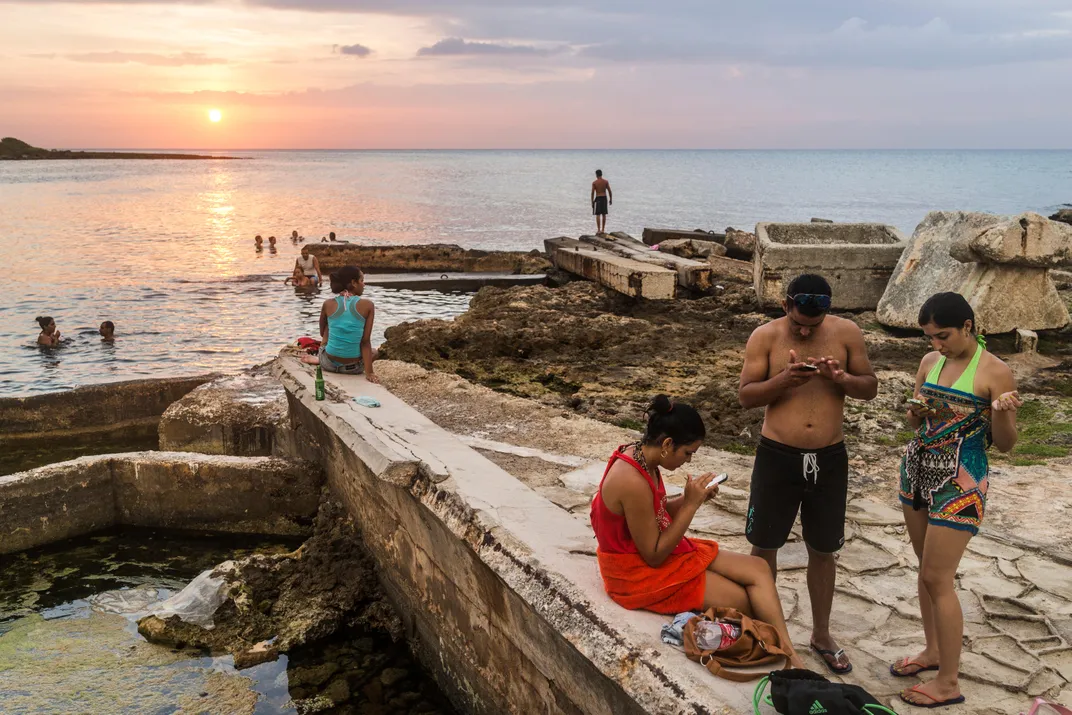
The years 1959 and 1960 were the “honeymoon phase” of the revolution. Indeed, most of the world was fascinated by the romantic victory of a handful of idealistic guerrillas forcing an evil dictator to flee.
Fidel and Che basked in celebrity, entertaining intellectuals like Jean-Paul Sartre and Simone de Beauvoir and a stream of third-world leaders. At first, the affection also extended to the United States. When Fidel arrived on a goodwill tour in 1959, he was thronged by admirers: He was the keynote speaker at the American Society of Newspaper Editors in Washington, D.C., ate a hot dog in New York City and visited Mount Vernon. Soon American college kids were flocking to Cuba to see the brave new world firsthand.
Never had a revolution been so photogenic. The photographer Roberto Solas, a Cuban-American kid from the Bronx, was 18 when he saw the “victory caravan” roll into Havana. “The Russian Revolution, the Chinese Revolution, their icons were statues and paintings. In Cuba, the revolution was established with photographs.” The camera loved the enigmatic Che in particular, whose every image seemed to have a mythic aura. (Away from the cameras’ eyes, executions of the most sinister of Batista’s torturers, informers and henchmen were conducted by Che in the Spanish fortress of La Cabaña, sometimes with disturbing show trials by the so-called Cleansing Commission.)
Revolutionary tourism immediately took off. In January 1960, Che’s parents and siblings arrived from Buenos Aires to tour Santa Clara. Dozens of others beat their way on to the Comandancia La Plata in the Sierra Maestra to bask in its aura. In February, Che and Fidel personally escorted the visiting deputy premier of the Soviet Union, Anastas Mikoyan, to the aerie on a sightseeing trip, and the group spent the night chatting by a campfire. Secret negotiations with the Cuban Communist Party were already being conducted. Now Che and Fidel openly declared their intention of pursuing a socialist revolution, and asked for Soviet economic aid.
“At heart, Fidel was a left-of-center nationalist who wanted to break away from U.S. domination,” said Jon Lee Anderson. “You have to remember that Americans owned everything in Cuba—planes, ferries, electricity companies. How do you gain political sovereignty? You have to kick them out. Fidel knew a confrontation was coming, and he needed a new sponsor.” The overture was well received by envoys caught up in the Cuban romance. “The Russians were euphoric,” Anderson said. “They thought these young guys were like the Bolsheviks, the men their grandfathers knew.”
The argument over whether Cuba was pushed or jumped to become part of the Eastern bloc may never be fully settled. But by early 1961, the tit for-tat standoff with the U.S. was in full swing, and escalated rapidly after Fidel began nationalizing American companies. When the CIA-backed Bay of Pigs invasion came just after midnight on April 17, 1961, the Cuban population was already armed with Soviet weapons.
“Of course, none of these leftists had actually been to Russia,” Anderson said. “Travel was so much more difficult then. And when Che did visit Moscow, he was shocked—all these guys wearing old woolen suits from the 1940s and eating onions they carried in their pockets. This was not the New Socialist man he had imagined.” If only Fidel and Che had been more diligent tourists, history might have taken another course.
Related Reads
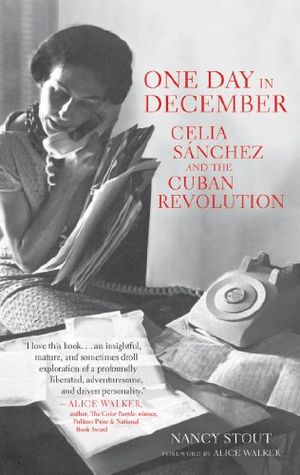
One Day in December: Celia Sánchez and the Cuban Revolution
Get the latest History stories in your inbox?
Click to visit our Privacy Statement .
/https://tf-cmsv2-smithsonianmag-media.s3.amazonaws.com/accounts/headshot/tony.png)
Tony Perrottet | READ MORE
Tony Perrottet is a contributing writer for Smithsonian magazine, a regular contributor to the New York Times and WSJ Magazine , and the author of six books including ¡Cuba Libre!: Che, Fidel and the Improbable Revolution that Changed World History , The Naked Olympics: The True Story of the Ancient Games and Napoleon's Privates: 2500 Years of History Unzipped . Follow him on Instagram @TonyPerrottet .
João Pina | READ MORE
João Pina is an award-winning photojournalist with work in the New Yorker , the New York Times , and Newsweek . His most recent photography book is CONDOR .
Moscow Metro Tour
- Page active

Description
Moscow metro private tours.
- 2-hour tour $87: 10 Must-See Moscow Metro stations with hotel pick-up and drop-off
- 3-hour tour $137: 20 Must-See Moscow Metro stations with Russian lunch in beautifully-decorated Metro Diner + hotel pick-up and drop off.
- Metro pass is included in the price of both tours.
Highlight of Metro Tour
- Visit 10 must-see stations of Moscow metro on 2-hr tour and 20 Metro stations on 3-hr tour, including grand Komsomolskaya station with its distinctive Baroque décor, aristocratic Mayakovskaya station with Soviet mosaics, legendary Revolution Square station with 72 bronze sculptures and more!
- Explore Museum of Moscow Metro and learn a ton of technical and historical facts;
- Listen to the secrets about the Metro-2, a secret line supposedly used by the government and KGB;
- Experience a selection of most striking features of Moscow Metro hidden from most tourists and even locals;
- Discover the underground treasure of Russian Soviet past – from mosaics to bronzes, paintings, marble arches, stained glass and even paleontological elements;
- Learn fun stories and myths about Coffee Ring, Zodiac signs of Moscow Metro and more;
- Admire Soviet-era architecture of pre- and post- World War II perious;
- Enjoy panoramic views of Sparrow Hills from Luzhniki Metro Bridge – MetroMost, the only station of Moscow Metro located over water and the highest station above ground level;
- If lucky, catch a unique «Aquarelle Train» – a wheeled picture gallery, brightly painted with images of peony, chrysanthemums, daisies, sunflowers and each car unit is unique;
- Become an expert at navigating the legendary Moscow Metro system;
- Have fun time with a very friendly local;
- + Atmospheric Metro lunch in Moscow’s the only Metro Diner (included in a 3-hr tour)
Hotel Pick-up
Metro stations:.
Komsomolskaya
Novoslobodskaya
Prospekt Mira
Belorusskaya
Mayakovskaya
Novokuznetskaya
Revolution Square
Sparrow Hills
+ for 3-hour tour
Victory Park
Slavic Boulevard
Vystavochnaya
Dostoevskaya
Elektrozavodskaya
Partizanskaya
Museum of Moscow Metro
- Drop-off at your hotel, Novodevichy Convent, Sparrow Hills or any place you wish
- + Russian lunch in Metro Diner with artistic metro-style interior for 3-hour tour
Fun facts from our Moscow Metro Tours:
From the very first days of its existence, the Moscow Metro was the object of civil defense, used as a bomb shelter, and designed as a defense for a possible attack on the Soviet Union.
At a depth of 50 to 120 meters lies the second, the coded system of Metro-2 of Moscow subway, which is equipped with everything you need, from food storage to the nuclear button.
According to some sources, the total length of Metro-2 reaches over 150 kilometers.
The Museum was opened on Sportivnaya metro station on November 6, 1967. It features the most interesting models of trains and stations.
Coffee Ring
The first scheme of Moscow Metro looked like a bunch of separate lines. Listen to a myth about Joseph Stalin and the main brown line of Moscow Metro.
Zodiac Metro
According to some astrologers, each of the 12 stops of the Moscow Ring Line corresponds to a particular sign of the zodiac and divides the city into astrological sector.
Astrologers believe that being in a particular zadiac sector of Moscow for a long time, you attract certain energy and events into your life.
Paleontological finds
Red marble walls of some of the Metro stations hide in themselves petrified inhabitants of ancient seas. Try and find some!
- Every day each car in Moscow metro passes more than 600 km, which is the distance from Moscow to St. Petersburg.
- Moscow subway system is the 5th in the intensity of use (after the subways of Beijing, Tokyo, Seoul and Shanghai).
- The interval in the movement of trains in rush hour is 90 seconds .
What you get:
- + A friend in Moscow.
- + Private & customized Moscow tour.
- + An exciting pastime, not just boring history lessons.
- + An authentic experience of local life.
- + Flexibility during the walking tour: changes can be made at any time to suit individual preferences.
- + Amazing deals for breakfast, lunch, and dinner in the very best cafes & restaurants. Discounts on weekdays (Mon-Fri).
- + A photo session amongst spectacular Moscow scenery that can be treasured for a lifetime.
- + Good value for souvenirs, taxis, and hotels.
- + Expert advice on what to do, where to go, and how to make the most of your time in Moscow.
Write your review
- Northern Ireland
- Couchsurfing
- Miscellaneous
- Bucket List
- Who is Penelope?
The Most Beautiful Stations on the Moscow Metro
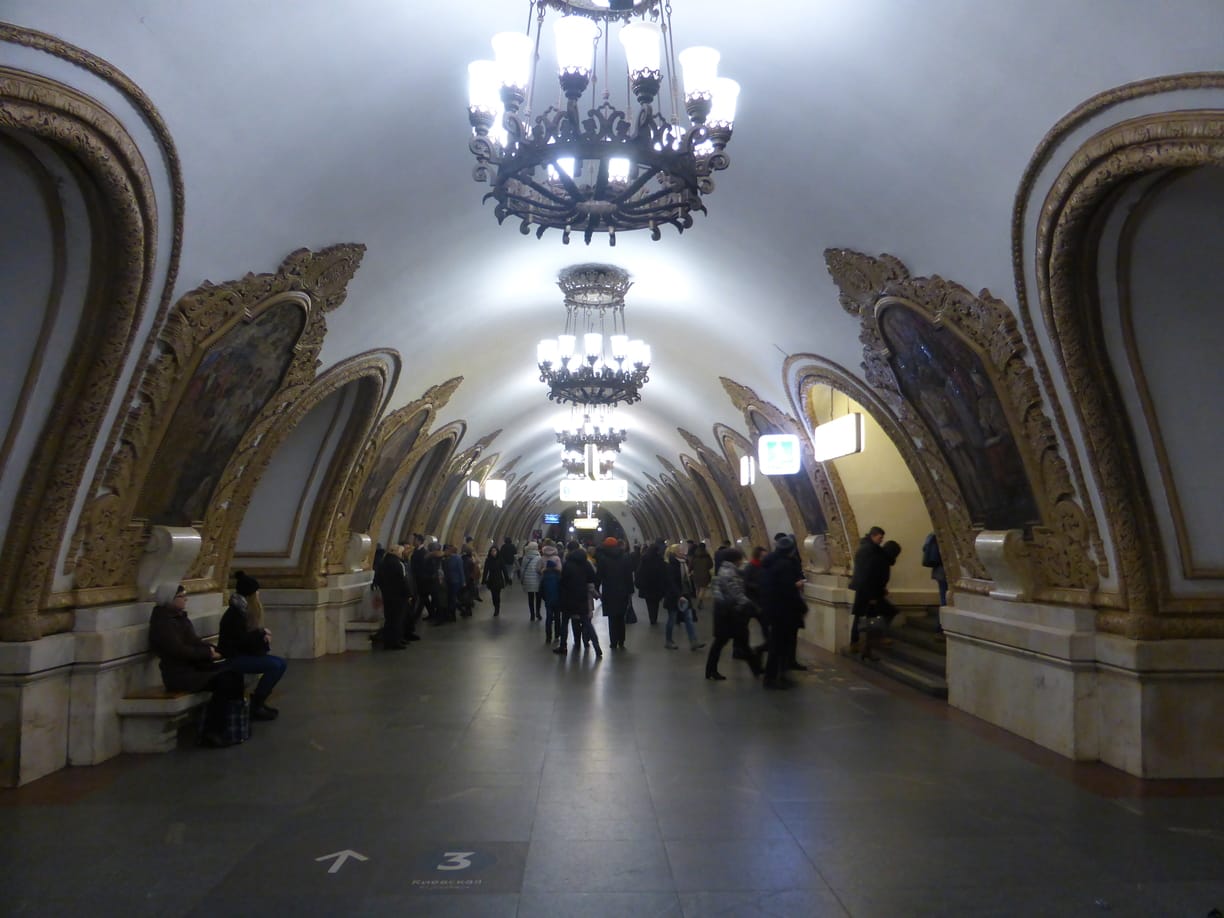
You might have heard that there are some beautiful metro stations in Moscow. Soviet decorations, chandeliers, mosaic painting and statues are common in many of the stations. The good news is that the Moscow Metro does not cost a lot of money and many of the most beautiful stations on the Moscow metro are on the same line, so you can almost get on and off at each station to visit these. Over the New Year holidays, I had a free afternoon and decided to visit some of these stations. Check out what I found below…..
The main stations that you will want to visit are on the Number 5 line, also known as the Circle Line. An advantage of this line is that you can get to it very easily and quickly no matter where you are in Moscow. The announcements on the metro are in Russian as well as English so you don’t need to worry if your Russian language skills are not good.
If, like me, you arrive in Moscow via train from Kyiv , then you will arrive at a metro station which many Muscovites believe to be the most beautiful of them all…..
Kievskaya metro station was opened in 1954 and features white marble walls which curve upwards and have with large mosaics surrounded by a gold trim in a very classical style. The mosaics depict life in Ukraine and was designed by a Ukrainian who wanted to display Ukraine’s influence and contribution to Soviet Russia.

Kievskaya, one of the most beautiful stations on the Moscow metro

Soviet era artwork between the arches
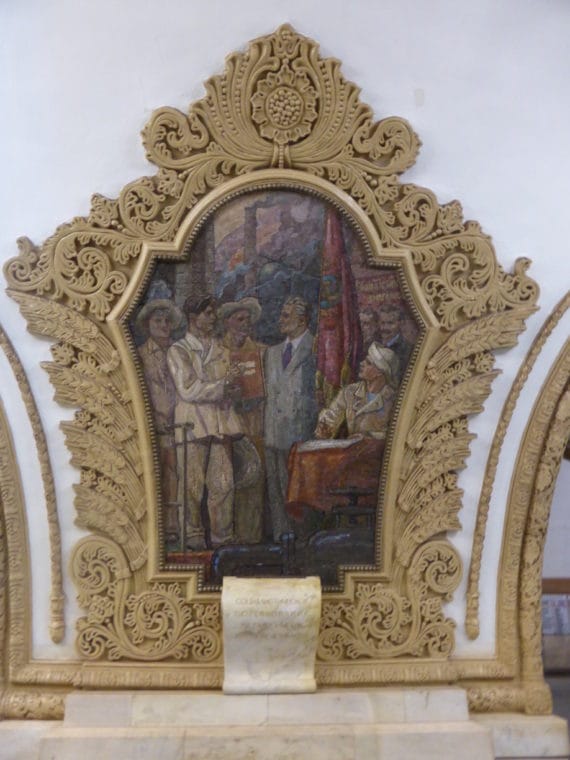
Mosaic with golden trim

People carrying flags is a common theme

Going into battle
Belorusskaya
If you look at a map of the metro , you will want to go in a clockwise direction on the circle line. So you will want to get on the train going in the Barrikadnaya direction and not Park Kultury. Stay on this line until you reach the 2nd station, Belorusskaya. This station was built in 1952 and like Kievskaya also features white marble pylons and a plaster ceiling.
The ceiling features 12 mosaics in an octagonal shape depicting Belarusian life, while the tiling on the floor is said to resemble a Belarusian quilt. One of the passageway exits of the station has a statue called ‘Belarusian Partisans’ of three men wearing long coats, holding guns and carrying a flag.”
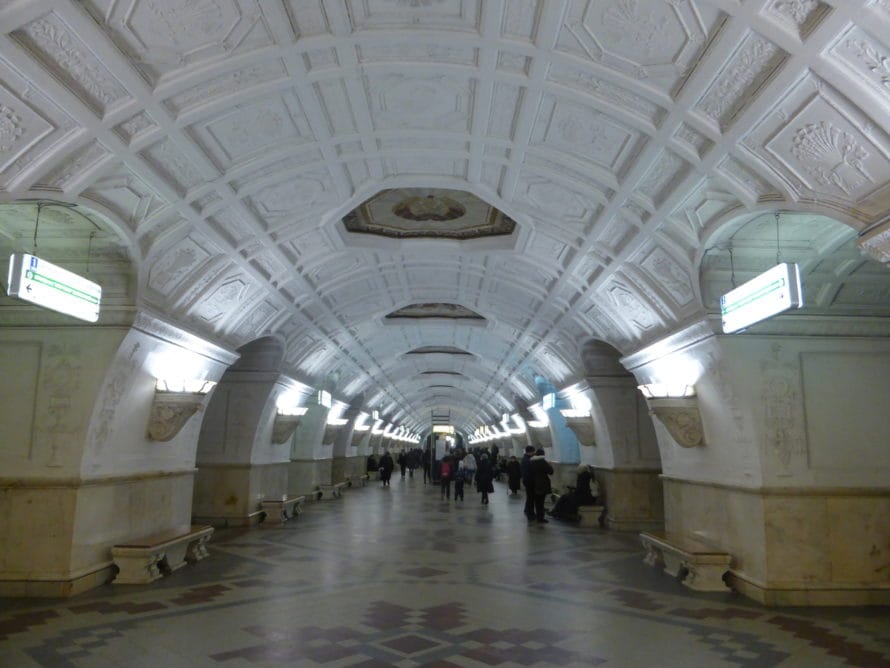
Belorusskaya metro platform
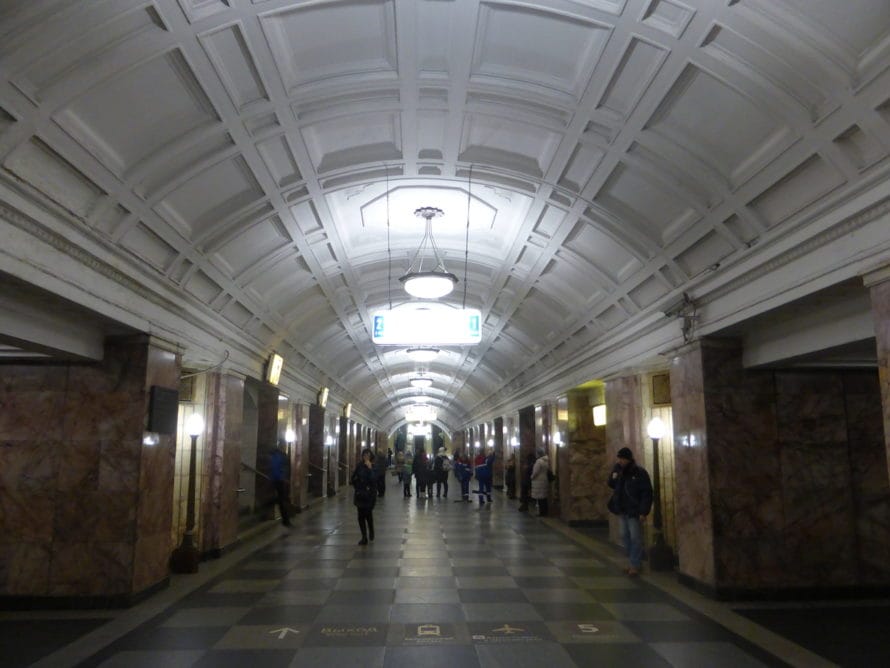
Soviet artwork on the roof
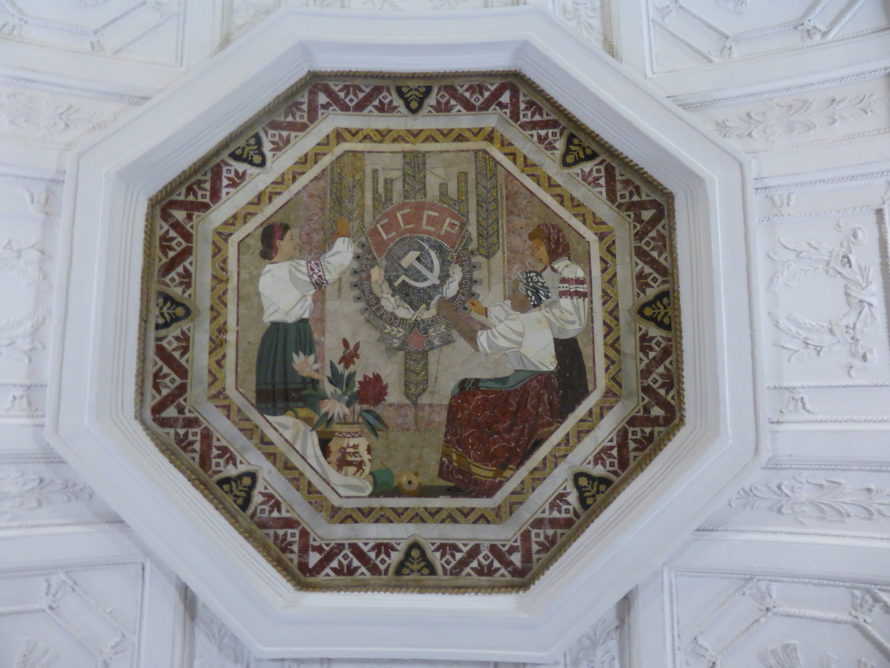
The hammer and sickle features prominently in the metro artwork
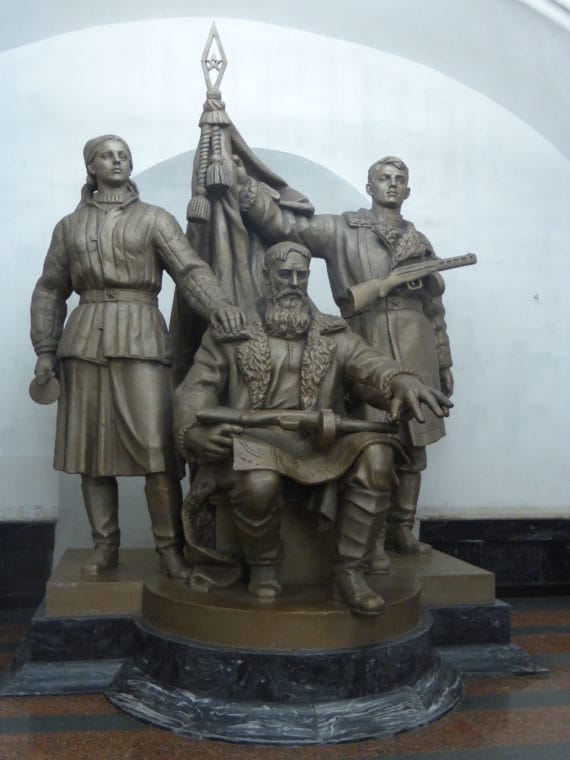
Three men carrying guns, holding the flag…
Mayakovskaya
To get to the next station, we need to change onto the green line (line 2) and go just one stop to the station of Mayakovskaya. This station has an art deco theme and, for some, resembles an elaborate ballroom. The columns are faced with stainless steel and pink rhodonite while the marble walls and ceiling have 34 mosaics with the theme “24-hour Soviet Sky. Apparently, Stalin resided here during the 2nd World War as the station was used as a command post for Moscow’s anti-aircraft regiment.
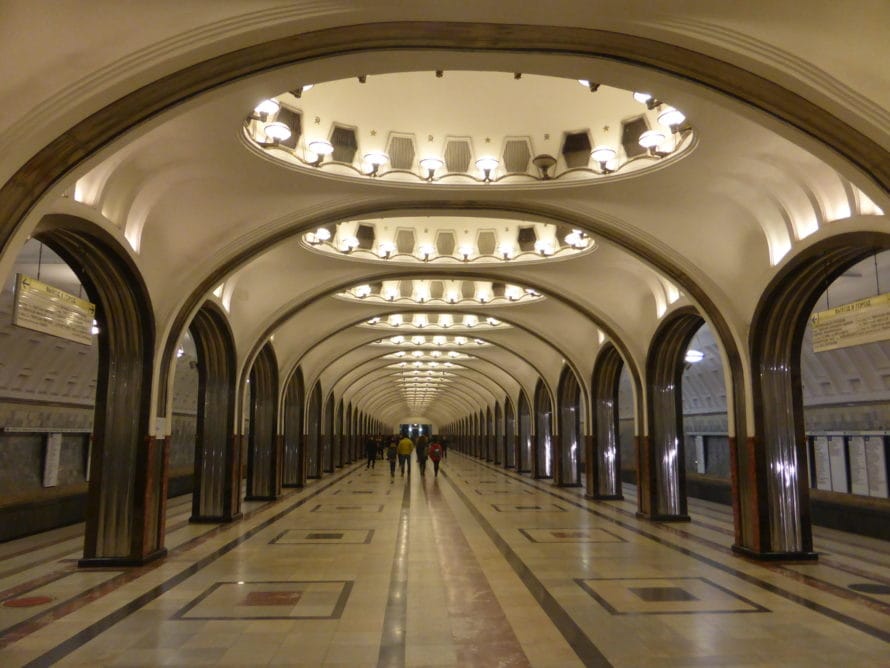
Mayakovskaya metro
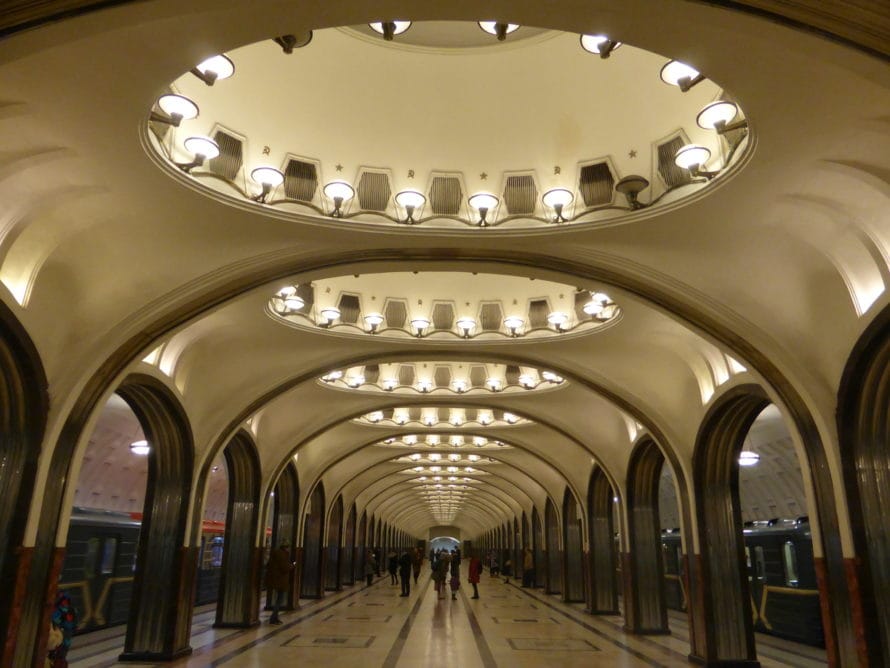
24-Hour Soviet Sky mosaic
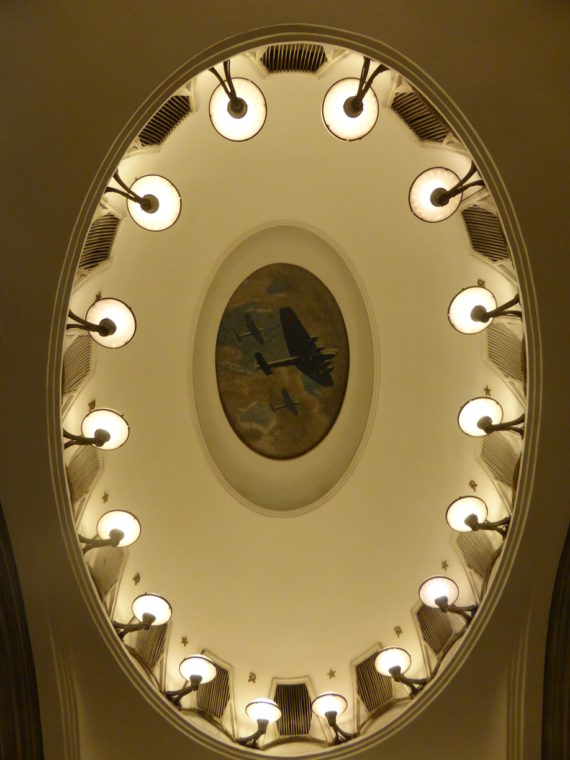
Bomber planes
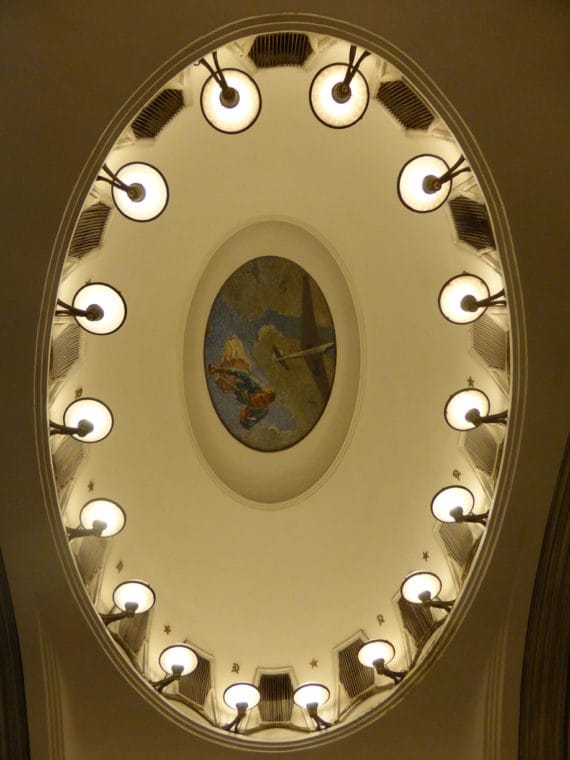
It looks like planes flying over Red Square

Novoslobodskaya
It’s time to get back on the metro and return to Belorusskaya. At Belorusskaya, change to the circle line again and continue clockwise to the next station, Novoslobodskaya. With its 32 stained glass panels, this station reminds me of a church. The panels were designed by Latvian artists and are surrounded by a brass border.

Novoslobodskaya metro
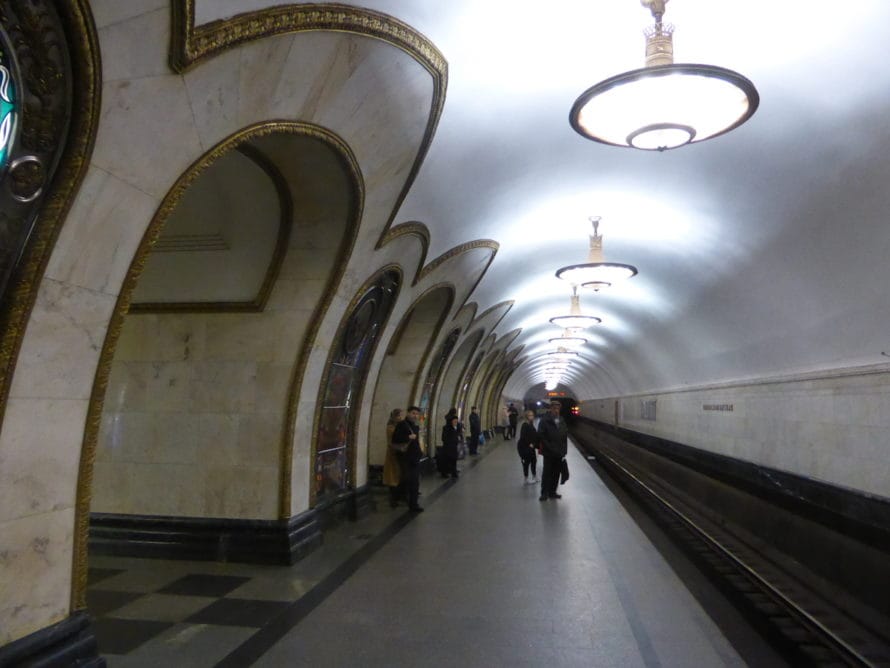
The platform of Novoslobodskaya metro
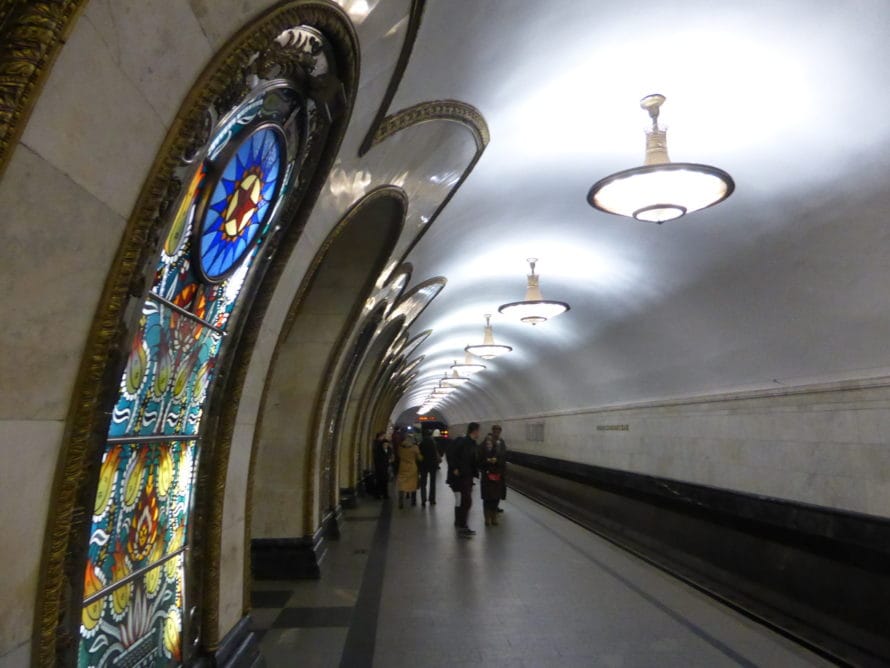
Stained glass artwork
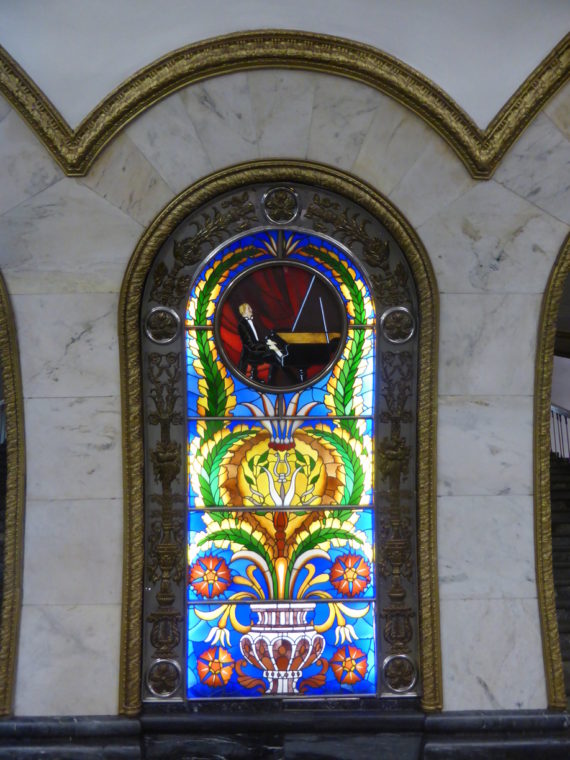
The golden trim around artwork is also very common
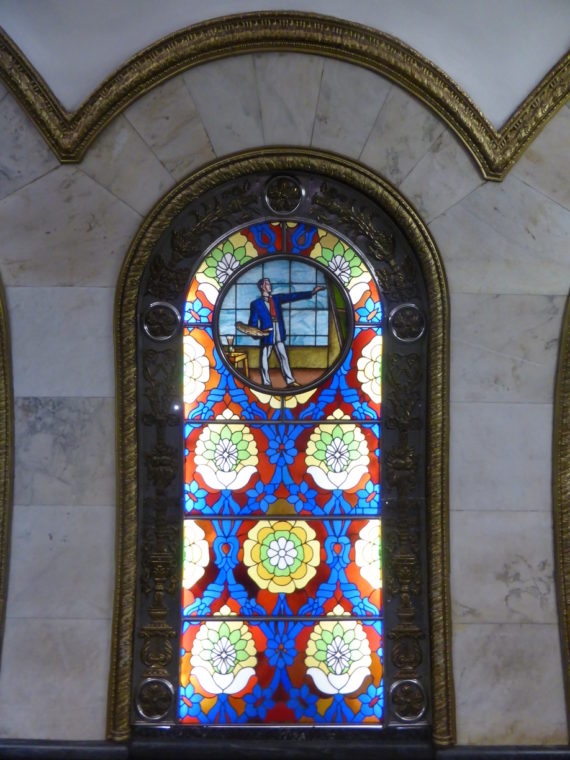
Prospekt Mira
Back on the metro and again just one stop until our next station, Prospekt Mira. This station was originally called Botanichesky Sad after the nearby Botanical Gardens of the Moscow State University. The pylons are covered in white marble and decorated with floral bas-relief friezes. The ceiling is decorated with casts and several cylindrical chandeliers.

Prospekt Mira metro station
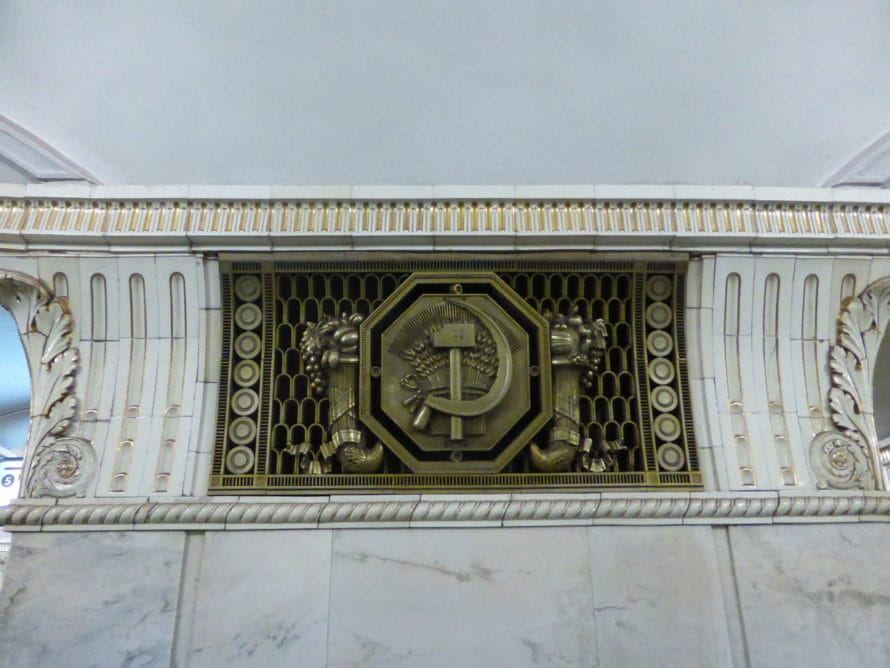
Notice the floral decoration
Komsomolskaya
On the metro once more and once more we are going just one stop to the next station – Komsomolskaya. This station is famous for its its yellow ceiling. The chandeliers in this station are huge. The photos below do not do this station justice. For me, this station resembles a presidential palace. You hace to see it for yourself to truly appreciate it.
Because of it’s location, this is one of the busiest stations in the Moscow metro as it serves three of the main train stations in the city – Leningradsky, Yaroslavsky, and Kazansky so be prepared for a lot of people.

Komsomolskaya metro
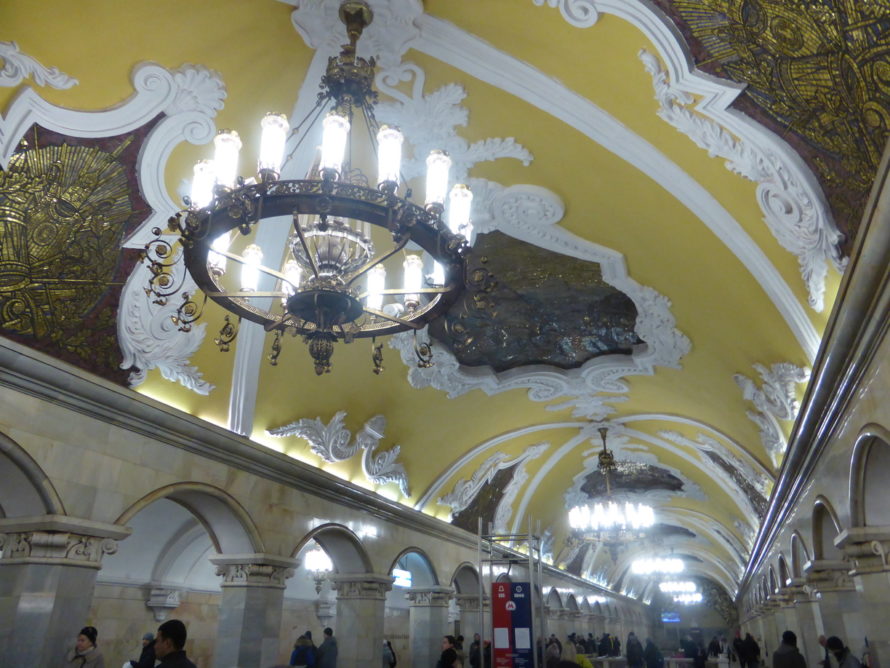
The yellow ceiling seems to go on forever

Yellow ceiling and artwork
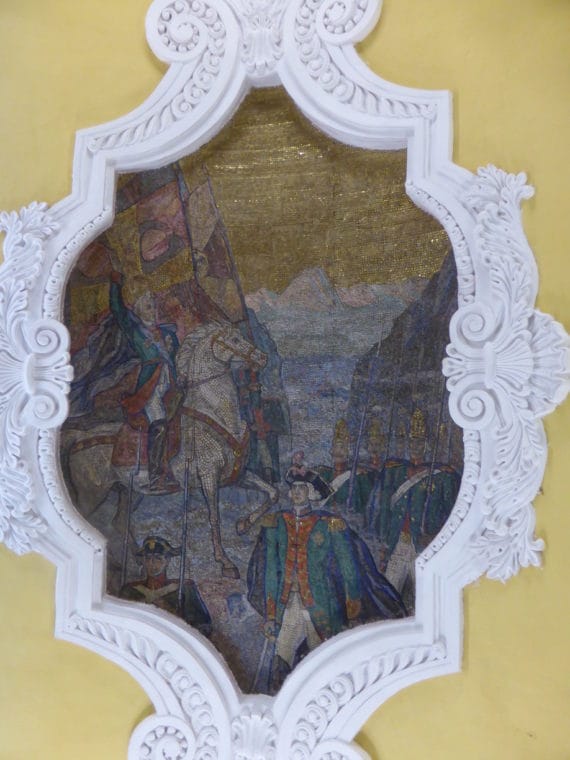
One of the ceiling mosaics
Elektrozavodskaya
When you are ready to leave Komsomolskaya metro station behind, then get back on the circle line and go one stop to Kurskaya and change to the blue line (line 3) and go to two stops to the Elektrozavodskaya station. This station gets it’s name from a nearby electric light bulb factory and has a somewhat industrial but also futuristic style, with 6 rows of circular lamps (there are 318 lamps in total). I think this is one of the most beautiful stations on the Moscow metro for how unique it is. The station was opened in 1944 after a delay because of the 2nd World War and features 12 marble bas-reliefs of the struggle on the home front during the war.
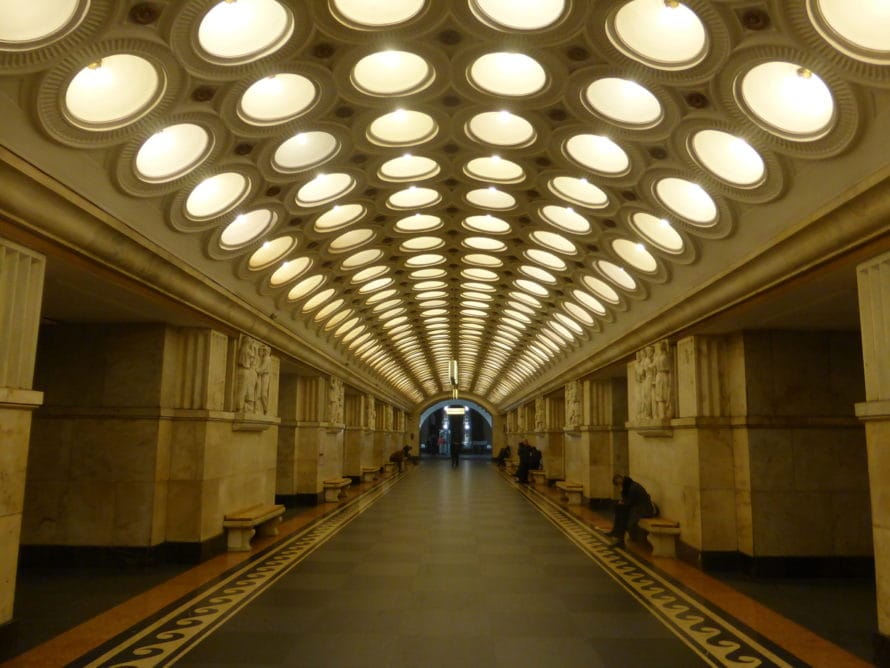
The Komsomolskaya metro station
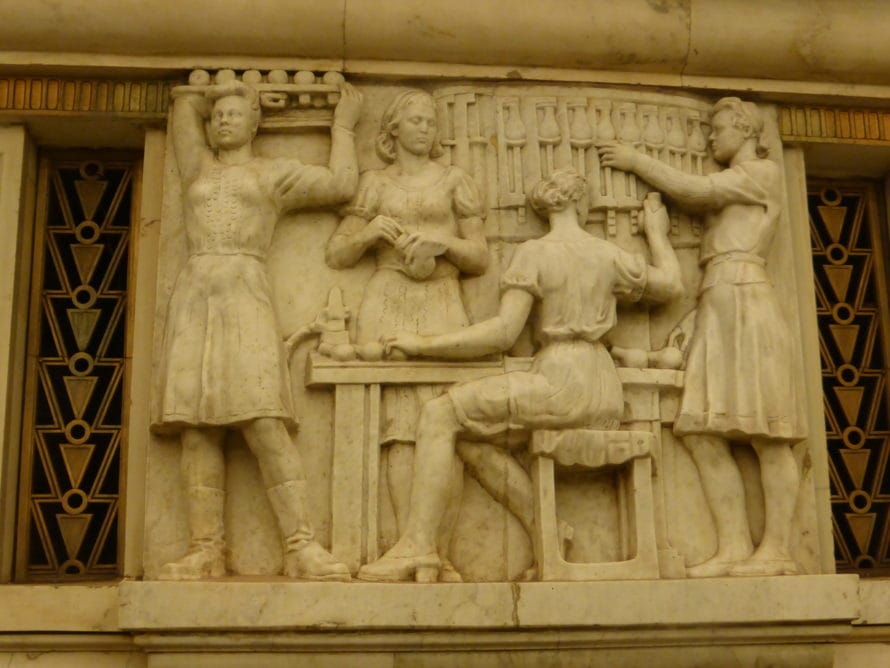
The struggles of war at home

Fixing machinery

Hard at work
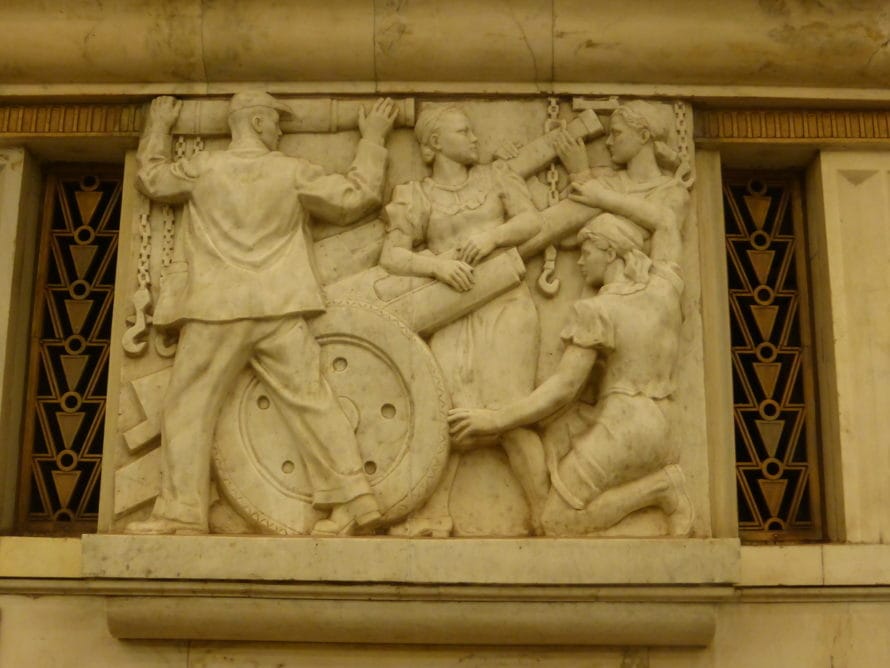
Making weapons
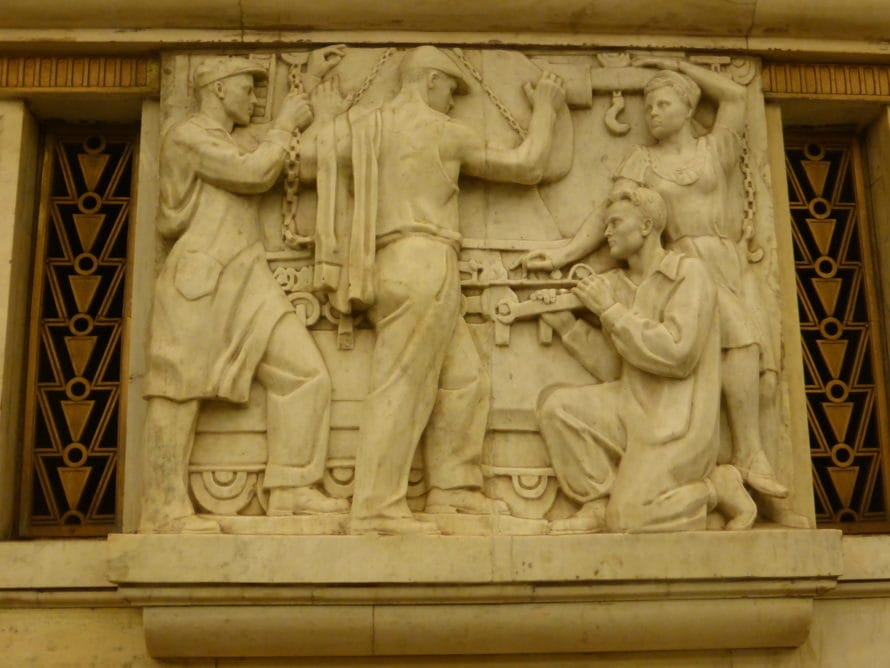
Building a tank
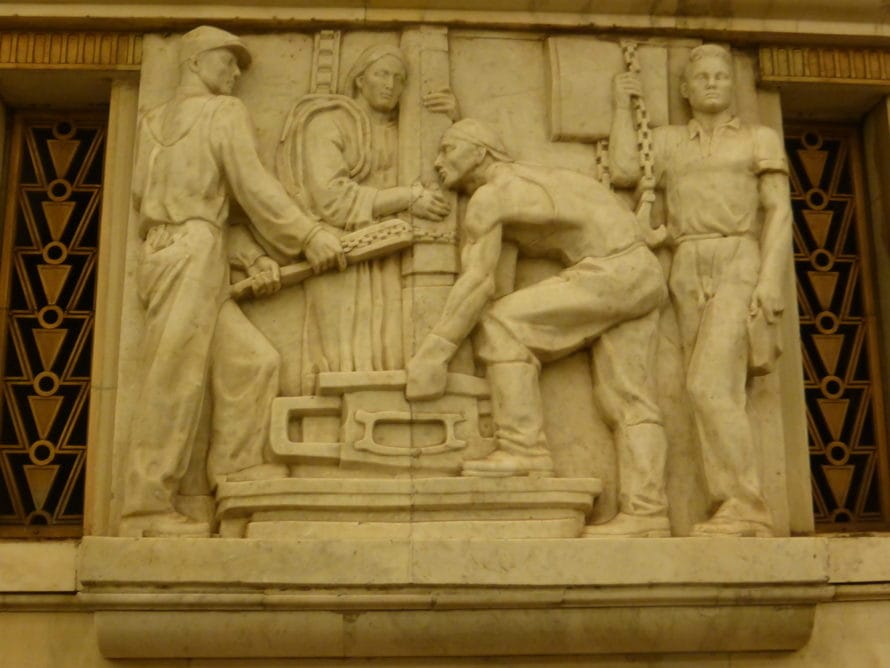
Even the station sign is elaborate
Ploschad Revolyutsii
Back on the metro line 3 (but in the other direction), getting off at the 3rd stop – Ploschad Revolyutsii (Revolution Square). This is located underneath the square in Moscow of the same name and is a short walk from Red Square in the city centre. It is the perfect place to end a visit around Moscow’s metro. The station features red and yellow marble arches with a total of 76 sculptures in between each arch. The sculptures are supposed to represent the people of the Soviet Union and include soldiers, farmers, industrial workers, children etc… I noticed a lot of people touching the golden chicken in the photo below as well as the show of the woman. I am assuming that this is for good luck.

Industrial worker
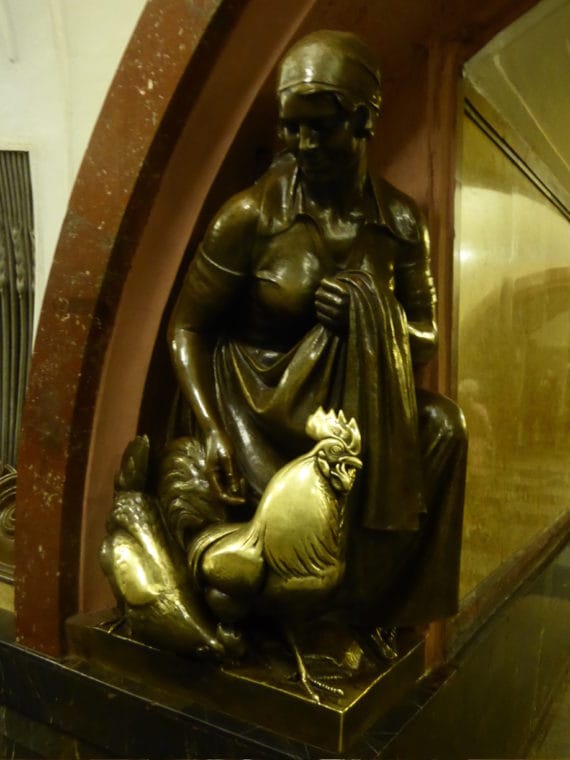
Touch the chicken for good luck
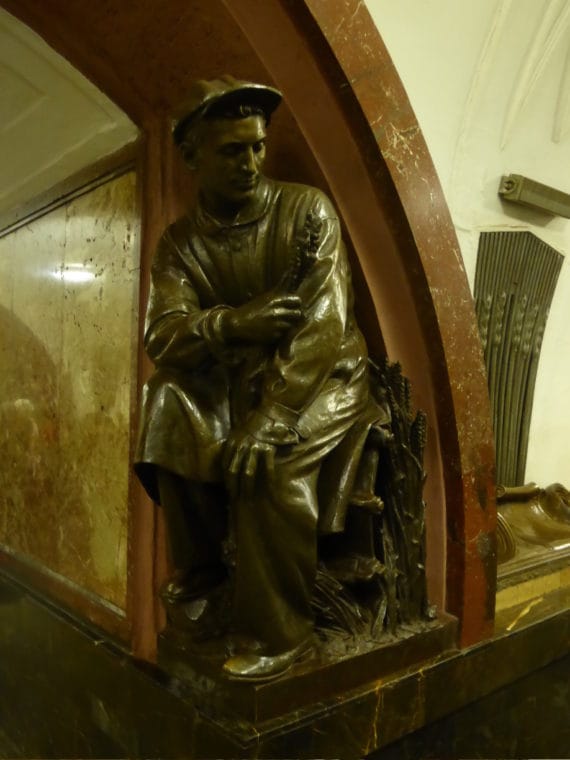
Sculpture of the people of the Soviet Union
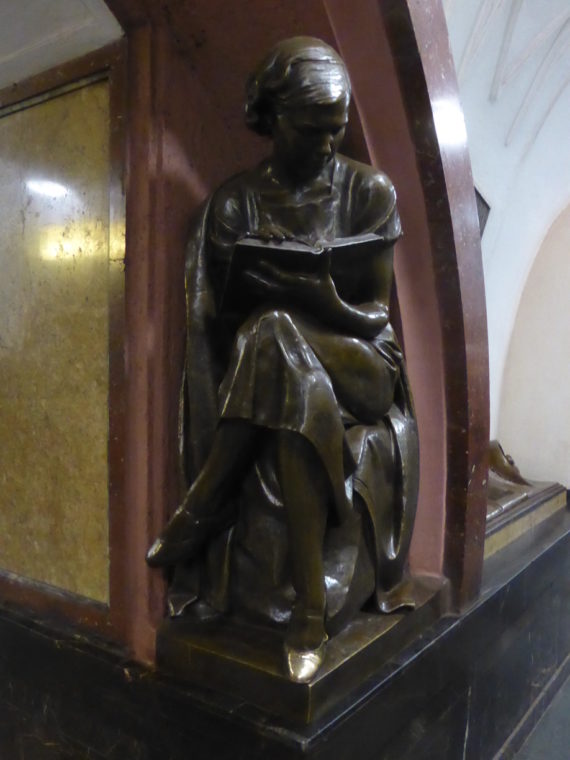
Woman reading a book – touch the shoe for good luck
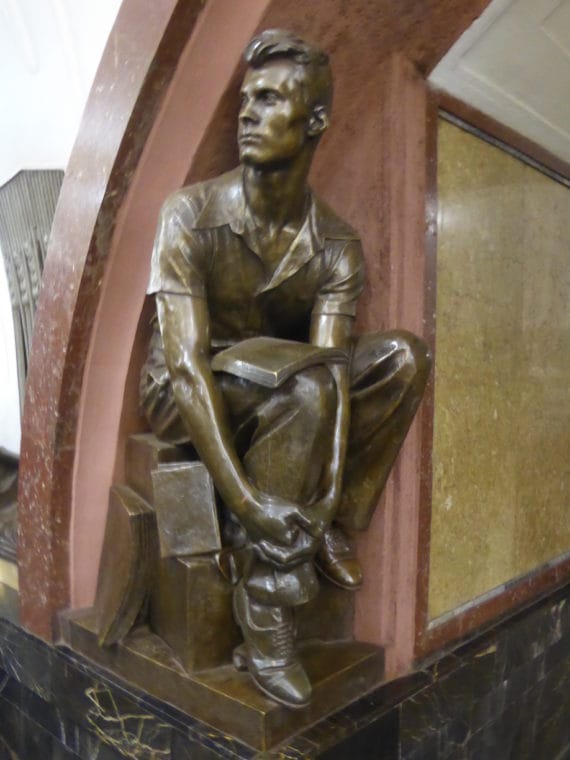
In education
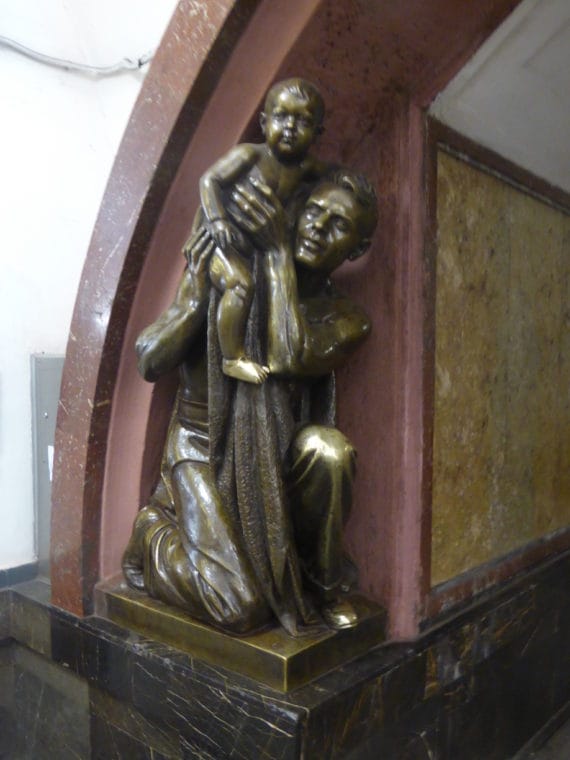
Parent and child
These are some of what I think are the most beautiful stations on the Moscow metro. Which ones are your favourite? Would you add any to this list?
You Might Also Like
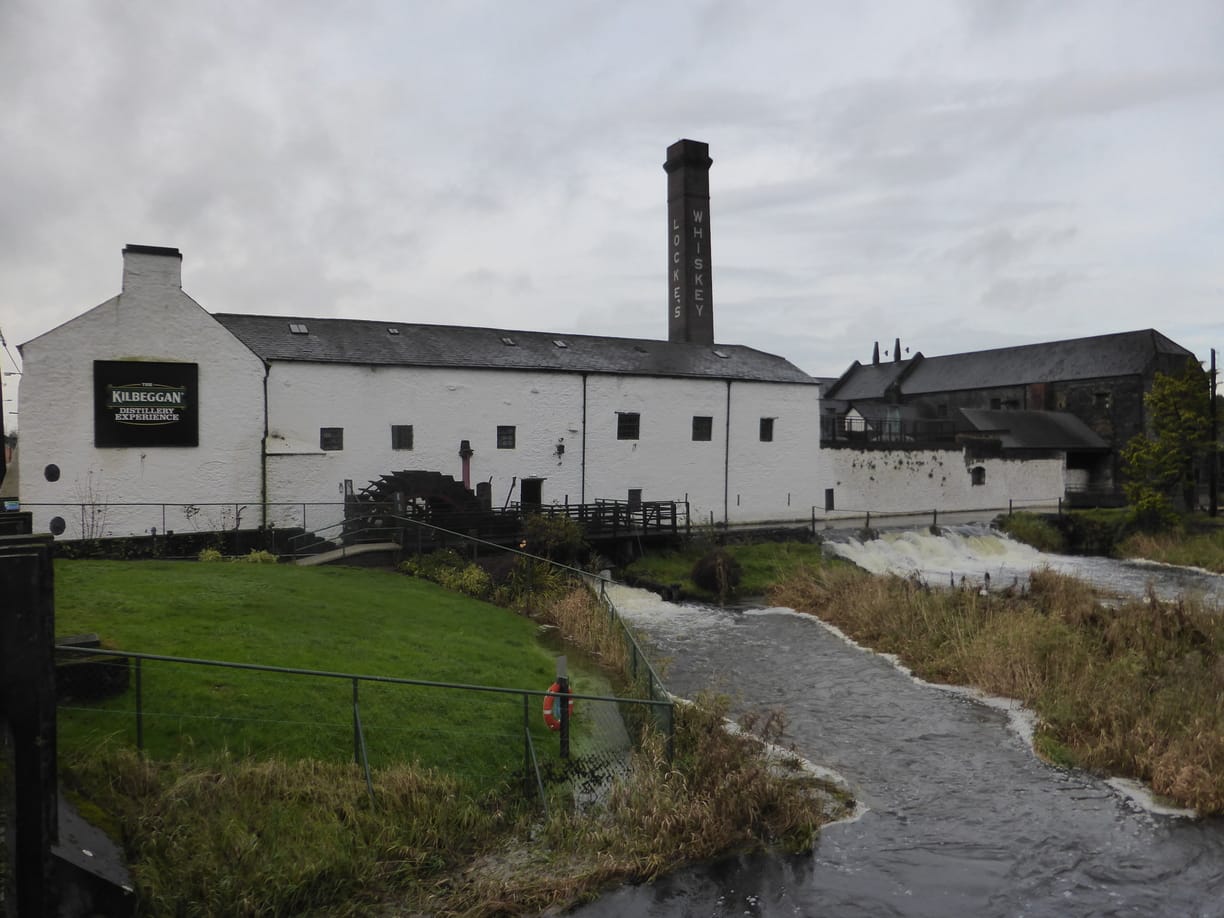
The Oldest Whiskey Distillery in the World
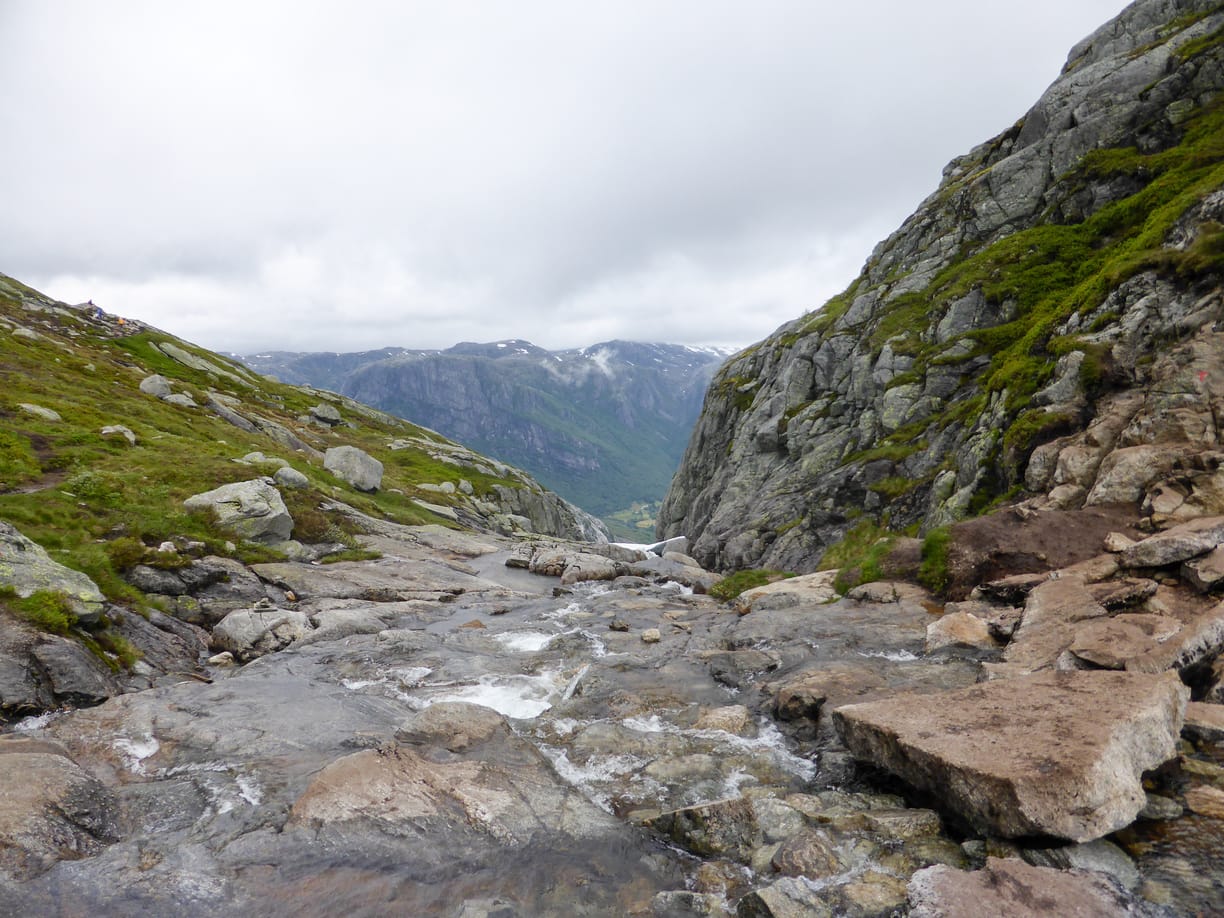
Kjeragbolten: Scary, Exhausting and Exciting!
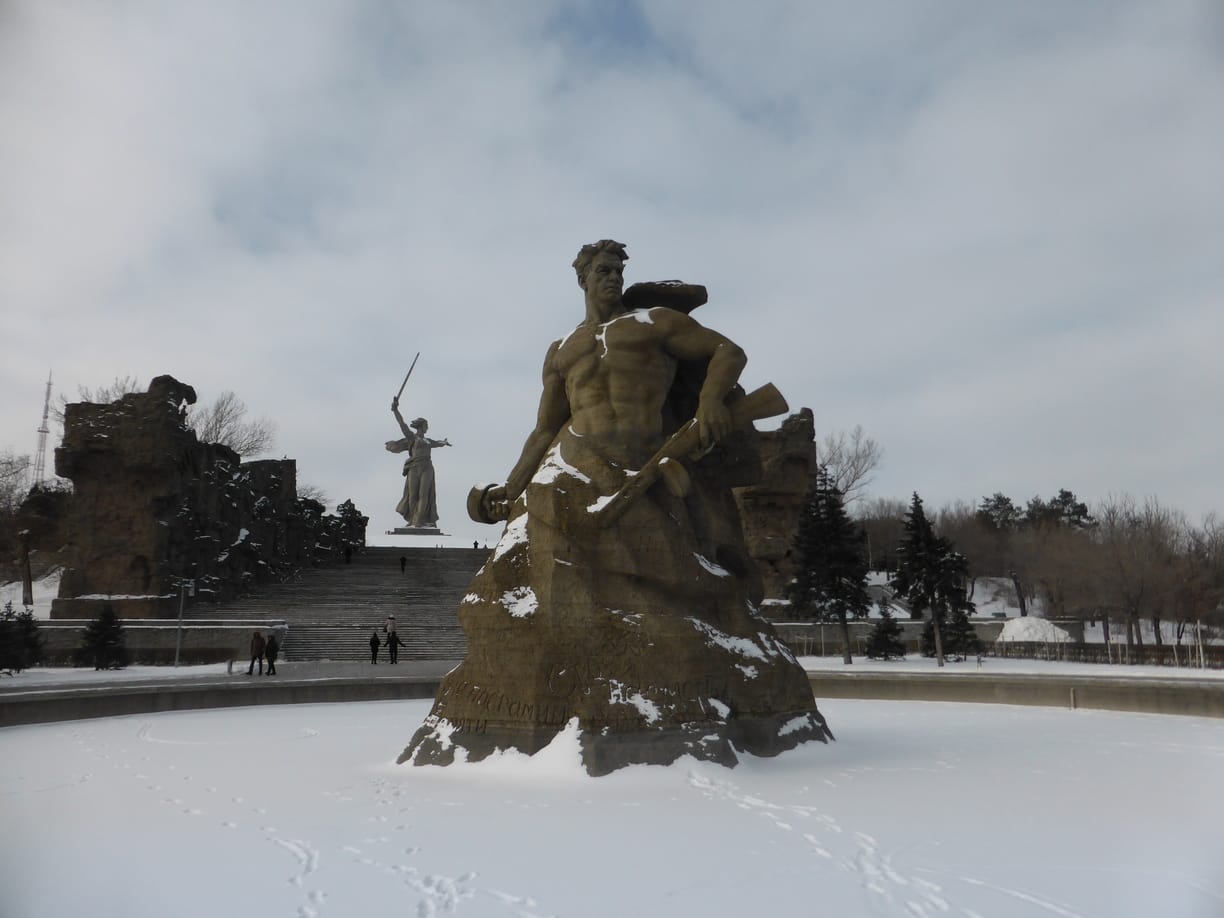
Mamayev Kurgan Memorial in Volgograd
19 comments.
Kievskaya definitely caught me off guard. Didn’t know Moscow metro stations were THIS extravagant! Mayakovskaya is gorgeous too with the marble walls and mosaics. I might just need to book a flight over to admire all of these!

Do it! Kievskaya was my first introduction to the Moscow metro as I got an overnight train from Kyiv.
You know, in the States, all we ever hear is bad stuff about Russia. It’s nice to see other (and lovely!) dimensions of such a controversial place.
It’s the same in the UK which is why I prefer going to see somewhere and making up my own mind. It’s all ‘politics and bullshit’ as I say
I went to Moscow about 13years for Christmas and went to train stations, so I can see these amazing mosaics and chandeliers. I agree with you that are beautiful Stations for sure and I could of wandered around for days. I think Kievskaya is definitely my favourite out of them all and I even have some similar pictures as you.
I imagine Moscow would have been a little different 13 years ago but these stations have probably always looked beautiful
Food and Footprints
You chose some great stations for this write up! Beautiful details in these stations and would love to visit them sometime. Particularly like the Komsomolskaya station with that yellow ceiling!
Thank you very much. Komsomolskaya seems to be a lot of peoples favourite stations too
Sumit Surai
Wow! Without the text I would have thought them to be some museum or gallery.
I know exactly what you mean!
Rosie Fluskey
Wow, it is just stunning! How does anyone get to work with so much to look at. I’m surprised at the very bourgeois-looking Komsomolskaya station. I would have thought it was all too Tzarist looking, but then I haven’t been to Russia yet lol. This has just made me want to go more!
Wow, that’s a lot of artwork. I wonder how old some of these pieces are?
Generally most of the stations are from 1940-1960 approximately. The later stations are more functional than style.
My mother-in-law was in Moscow fifty years ago and still raves about the metro stations. So far, I could not imagine much. But now! The pictures are great and I think it’s almost a pity that this splendor is underground. But for every user of the Metro can enjoy a free trip to the world of art. Susanne
True. It is like having a free trip to an art museum/gallery. I hope that you can one day visit Moscow and see for yourself.
Oh wow, I would never have known that these were metro stations. The ceilings remind me of how you need to look up sometimes, even in the commuter rush!
It is true about life in general, we just go from A to B looking directly in front of us instead of around us
Wow, I would have never guessed that these were stations. The decor is so pretty and not one I’m used to seeing at metro stations. Love the ceiling at The Komsomolskaya metro station.
They certainly don’t look like metro stations. The ceiling there is one of my favourites too!
Leave a Reply Cancel Reply
Save my name, email, and website in this browser for the next time I comment.
Notify me via e-mail if anyone answers my comment.
Simulation of the sulfide phase formation in a KhN60VT alloy
- Simulation of Metallurgical and Thermal Processes
- Published: 23 September 2017
- Volume 2017 , pages 447–453, ( 2017 )
Cite this article

- I. V. Kabanov 1 ,
- E. V. Butskii 1 ,
- K. V. Grigorovich 2 &
- A. M. Arsenkin 2
33 Accesses
Explore all metrics
The conditions of the existence of sulfide phases in Fe–Ni–S alloys and four-component Fe–50 wt % Ni–0.001 wt % S– R ( R is an alloying or impurity element from the TCFE7 database) systems are studied using the Thermo-Calc software package and the TCFE7 database. The modification of nickel superalloys by calcium or magnesium is shown to increase their ductility due to partial desulfurization, the suppression of the formation of harmful sulfide phases, and the uniform formation of strong sulfides in the entire temperature range of metal solidification. The manufacturability of superalloys can decrease at a too high calcium or magnesium content because of the formation of intermetallics with a low melting temperature along grain boundaries.
This is a preview of subscription content, log in via an institution to check access.
Access this article
Price includes VAT (Russian Federation)
Instant access to the full article PDF.
Rent this article via DeepDyve
Institutional subscriptions
Similar content being viewed by others

Modeling Thermophysical Characteristics of Nickel-Based Superalloys
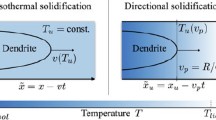
Phase field modeling of solidification in multi-component alloys with a case study on the Inconel 718 alloy

Phase-Field Simulation of Microstructural Evolution in Nickel-Based Superalloys During Creep and in Low Carbon Steels During Martensite Transformation
H.-P. Chen, R. K. Kalia, E. Kaxiras, G. Lu, A. Nakano, N. Kenichi, A.C.T. van Duin, P. Vashishta, and Z. Yuan, Physical Review Letters, No. 104, 155502 (2010).
Article Google Scholar
F. Kristofory, M. Mohila, D. Mikulas, and J. Vitec, Acta Metallurgica Slovacia 10 (3), 236–241 (2004).
Google Scholar
J. Morscheiser, L. Thönnessen, and B. Friedrich, “Sulphur Control in Nickel-Based Superalloy Production,” in Proceedings of Conference on EMC (2011), pp. 1–15.
Software Package. Thermodynamic Calculations of Phase Diagrams for Multicomponent Systems . http://www.thermocalc.com.
Download references
Author information
Authors and affiliations.
OAO Metallurgical Plant Elektrostal’, Elektrostal’, Moscow oblast, Russia
I. V. Kabanov & E. V. Butskii
Baikov Institute of Metallurgy and Materials Science, Russian Academy of Sciences, Moscow, Russia
K. V. Grigorovich & A. M. Arsenkin
You can also search for this author in PubMed Google Scholar
Corresponding author
Correspondence to E. V. Butskii .
Additional information
On the Centenary of Plant “Elektrostal”
Original Russian Text © I.V. Kabanov, E.V. Butskii, K.V. Grigorovich, A.M. Arsenkin, 2017, published in Elektrometallurgiya, 2017, No. 3, pp. 13–21.
Rights and permissions
Reprints and permissions
About this article
Kabanov, I.V., Butskii, E.V., Grigorovich, K.V. et al. Simulation of the sulfide phase formation in a KhN60VT alloy. Russ. Metall. 2017 , 447–453 (2017). https://doi.org/10.1134/S0036029517060106
Download citation
Received : 21 November 2016
Published : 23 September 2017
Issue Date : June 2017
DOI : https://doi.org/10.1134/S0036029517060106
Share this article
Anyone you share the following link with will be able to read this content:
Sorry, a shareable link is not currently available for this article.
Provided by the Springer Nature SharedIt content-sharing initiative
- addition of calcium and magnesium
- strong sulfides
- grain boundaries
- intermetallics
- melting temperature
- Find a journal
- Publish with us
- Track your research

Current time by city
For example, New York
Current time by country
For example, Japan
Time difference
For example, London
For example, Dubai
Coordinates
For example, Hong Kong
For example, Delhi
For example, Sydney
Geographic coordinates of Elektrostal, Moscow Oblast, Russia
City coordinates
Coordinates of Elektrostal in decimal degrees
Coordinates of elektrostal in degrees and decimal minutes, utm coordinates of elektrostal, geographic coordinate systems.
WGS 84 coordinate reference system is the latest revision of the World Geodetic System, which is used in mapping and navigation, including GPS satellite navigation system (the Global Positioning System).
Geographic coordinates (latitude and longitude) define a position on the Earth’s surface. Coordinates are angular units. The canonical form of latitude and longitude representation uses degrees (°), minutes (′), and seconds (″). GPS systems widely use coordinates in degrees and decimal minutes, or in decimal degrees.
Latitude varies from −90° to 90°. The latitude of the Equator is 0°; the latitude of the South Pole is −90°; the latitude of the North Pole is 90°. Positive latitude values correspond to the geographic locations north of the Equator (abbrev. N). Negative latitude values correspond to the geographic locations south of the Equator (abbrev. S).
Longitude is counted from the prime meridian ( IERS Reference Meridian for WGS 84) and varies from −180° to 180°. Positive longitude values correspond to the geographic locations east of the prime meridian (abbrev. E). Negative longitude values correspond to the geographic locations west of the prime meridian (abbrev. W).
UTM or Universal Transverse Mercator coordinate system divides the Earth’s surface into 60 longitudinal zones. The coordinates of a location within each zone are defined as a planar coordinate pair related to the intersection of the equator and the zone’s central meridian, and measured in meters.
Elevation above sea level is a measure of a geographic location’s height. We are using the global digital elevation model GTOPO30 .
Elektrostal , Moscow Oblast, Russia

COMMENTS
Tour overview. Immerse yourself into the history of the Cuban Revolution on this unique Cuban Revolution Tour. Over 9 days, delve into the cultural, social, and economic aspects of this pivotal period in Cuban history, from the early days of the Revolution to its enduring legacy. More than 60 years have passed since Fidel Castro and Che Guevara ...
Havana Walking Tour. We'll meet at 10 am by the José Martí statue in the Central Park to start this tour of the Cuban Revolution.From there we'll walk down to the Bacardi building, the old headquarters of the famous brand of rum, and we'll tell you what happened to this stunning art deco building after 1959.. Then we'll walk past a grocery store and find out about the country's food rationing.
On the Cuban Revolution Free Tour in Havana, guests will see the consequences of the Revolution through the eyes of a Cuban, from its fulfilled dreams, such as the public education and health systems, to its great challenges, such as censorship, isolation, and economic embargoes.Walking around the streets of Havana, the group will come across bodegas, bakeries, and friendly local residents.
Cuban Revolution Trail. Eastern Cuba Cuba. On this ride across eastern Cuba, you will have the opportunity to discover the most emblematic places of the Cuban Revolution, the National Park of Sierra Maestra and visit the lovely colonial towns of this country. You will also have the opportunity to enjoy Cuban hospitality, sleeping in the ...
The tour that Pepe offers is different from many others that you will find about Havana and its historic center. Once you have visited Havana, this tour is ideal to understand the process of the Cuban revolution, the reasons for the country's current political and economic situation, and resolve your doubts about current life in Cuba.
Origins of the Revolution - Cuba Walking Tour to the Sierra Maestra and Santiago de Cuba. In December 1956, Fidel and Raul Castro, along with Che Guevara, traveled by boat from Mexico to start an armed revolution against Batista's army. Their landing went badly, and the survivors fled into the rugged Sierra Maestra.
Cuban Revolution Tour "We were born in a free country that our parents bequeathed to us, and the Island will first sink into the sea before we consent to be the slaves of anyone". These remarkable words spoken by Fidel Castro encapsulate the spirit of the Cuban Revolution that he conducted back in the 1950s.
Revolution Tour. Description: It is a look at the Cuban revolutionary process from the contemporary, following the historical-chronological line of the history of Cuba and in which the city is used as the background and scene of the most important events that have occurred over the course of more than 150 years of struggles. of the Cuban people ...
Cuba tour, The Revolutionary Trail. Follow in the footsteps of the revolutionaries, from £2450 - £2850 (10 days) ex flights. ... Havana Walking tour of Old Havana Museum of the Revolution Santa Clara Che Museum Camaguey Bayamo Turquino National Park hike to La Comandancia de la Plata Santo Domingo ... Our Cuban guides conduct detailed ...
Cuban Heritage Tour Old Havana walking Tour Stroll down the lively streets of Havana while taking in its grand architecture and rich history. Stop by the Revolution Square A centerpiece of the Cuban Revolution and the location of Fidel Castro's famous speeches. Lunch at a Private Paladar Family owned restaurants offering a variety of […]
The Cuban Revolution (Spanish: Revolución cubana) was a military and political effort to overthrow the government of Cuba between 1953 and 1959. It began after the 1952 Cuban coup d'état which placed Fulgencio Batista as head of state.
Group A: New Year Revolutionary Tour, 8 days - $895. Group B: New Year Revolutionary Tour + Missile Base & Vinales, 10 days - $1190. Read More. Want to extend your YPT adventure? Join one of our great tour extensions. More Details... Join Cuban Pioneers to celebrate with the Cuban people the anniversary of the Triumph of the Cuban Revolution.
The Cuban Revolution tour will allow you to understand the historical context of the Revolution and the impacts this proccess has had on Cuban society. +5352746221 [email protected]. Facebook; ... The Cuban Revolution is one of the most complex processes in Cuban history. In this tour, you will discover the historic context in which the ...
The Cuban Revolution was an armed uprising led by Fidel Castro that eventually toppled the brutal dictatorship of Fulgencio Batista. The revolution began with a failed assault on Cuban military ...
Take a Cuban Revolution Tour in Santiago de Cuba. This tour begins at 10 at the Casa Granda Hotel in Céspedes Park. And you have a treat in store, your transport for the first part of the Santiago de Cuba revolutionary tour is in a classic vintage car. The first stop is the Palace of the Provincial Government, the current location of the ...
Description of Cuba tour, The Revolutionary Trail. Follow in the footsteps of Fidel and Che on this fascinating 10 day holiday, travelling along Cuba's Revolutionary Trail. It was over 50 years ago that Fidel Castro and his followers drove into Havana and pronounced the revolution successful, declaring that a new era in the history of Cuba ...
"The Cuban Revolution was a dream revolution," says Nancy Stout, author of ... When Fidel arrived on a goodwill tour in 1959, he was thronged by admirers: He was the keynote speaker at the ...
In the wake of the 1961 attack, Fidel Castro declared the socialist nature of the Cuban Revolution and began building stronger ties with the USSR (inevitably this would lead to the founding of the Communist Party of Cuba, in 1965). ... Plaza de la Revolution. At the end of the week, the tour brought me back to where I had started: Havana's ...
Moscow Metro private tours. 2-hour tour $87: 10 Must-See Moscow Metro stations with hotel pick-up and drop-off. 3-hour tour $137: 20 Must-See Moscow Metro stations with Russian lunch in beautifully-decorated Metro Diner + hotel pick-up and drop off. Metro pass is included in the price of both tours.
Ploschad Revolyutsii. Back on the metro line 3 (but in the other direction), getting off at the 3rd stop - Ploschad Revolyutsii (Revolution Square). This is located underneath the square in Moscow of the same name and is a short walk from Red Square in the city centre. It is the perfect place to end a visit around Moscow's metro.
The conditions of the existence of sulfide phases in Fe-Ni-S alloys and four-component Fe-50 wt % Ni-0.001 wt % S-R (R is an alloying or impurity element from the TCFE7 database) systems are studied using the Thermo-Calc software package and the TCFE7 database. The modification of nickel superalloys by calcium or magnesium is shown to increase their ductility due to partial ...
Geographic coordinates of Elektrostal, Moscow Oblast, Russia in WGS 84 coordinate system which is a standard in cartography, geodesy, and navigation, including Global Positioning System (GPS). Latitude of Elektrostal, longitude of Elektrostal, elevation above sea level of Elektrostal.